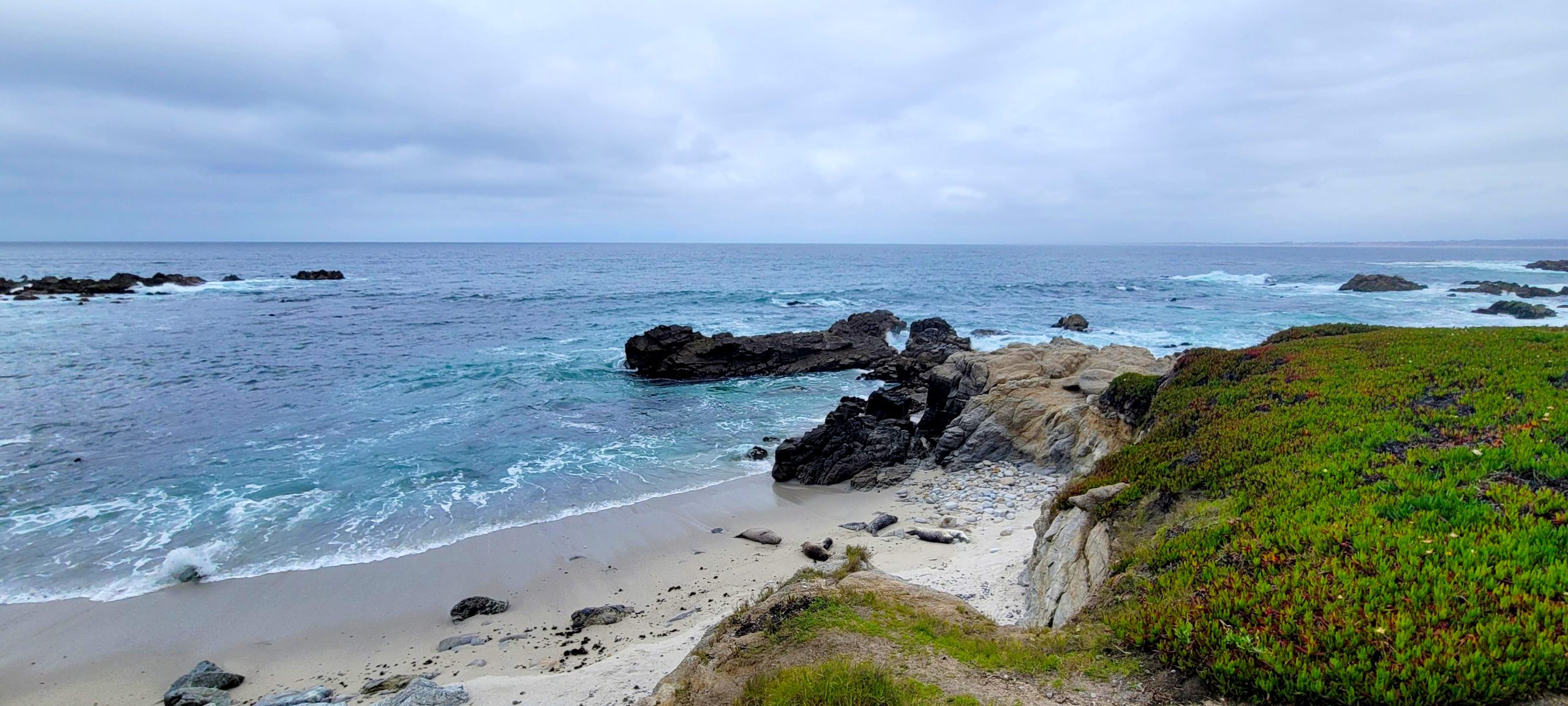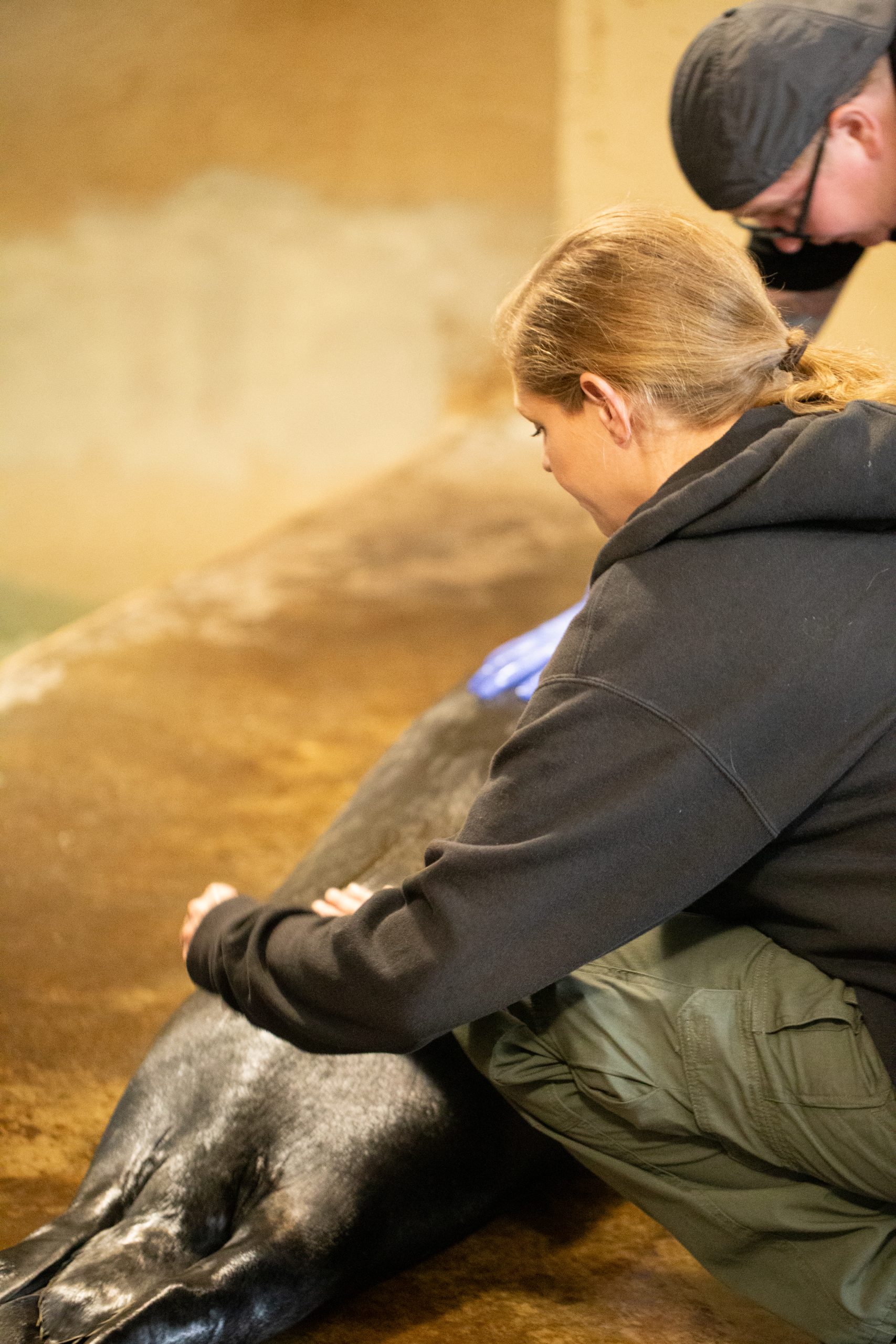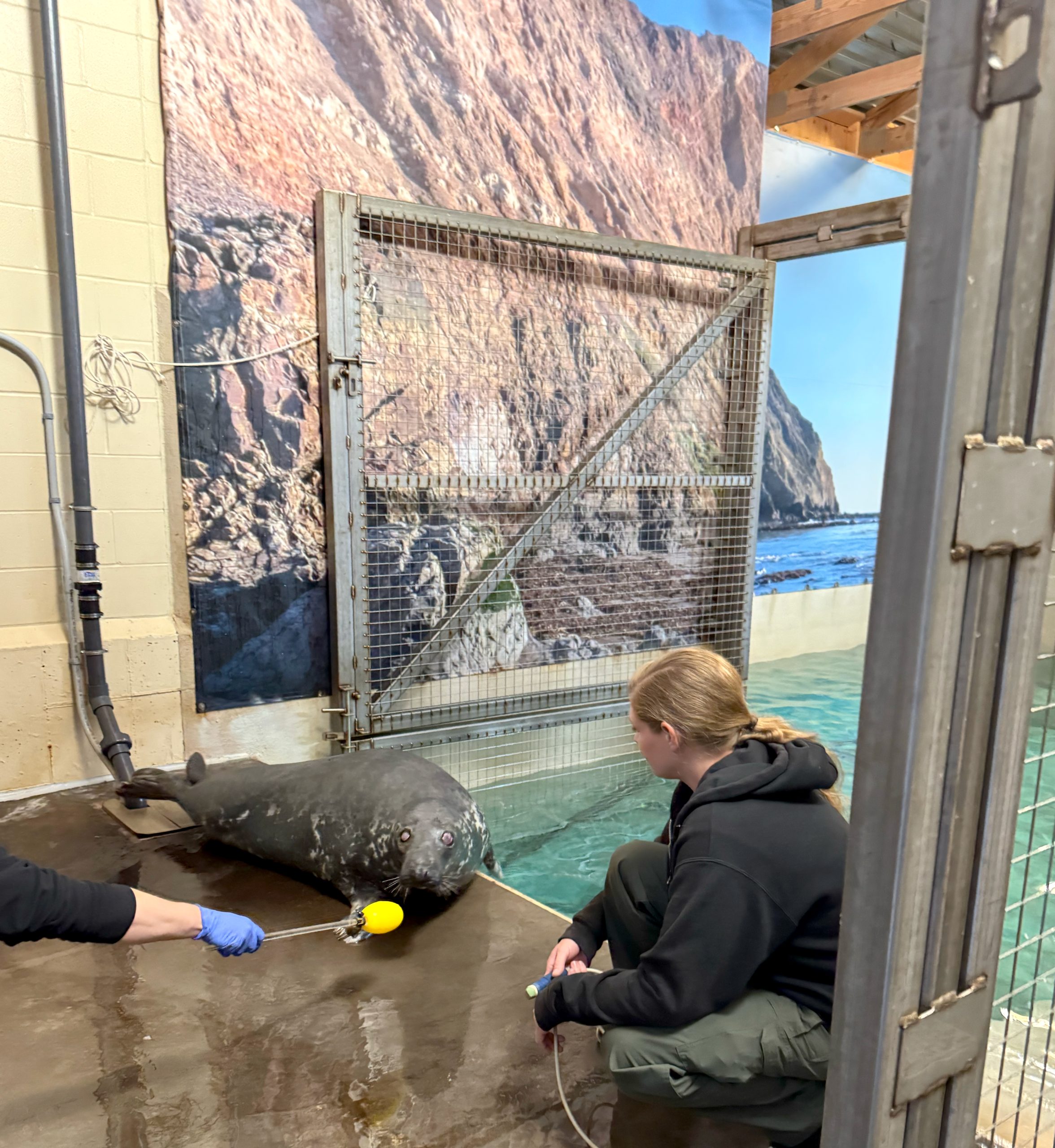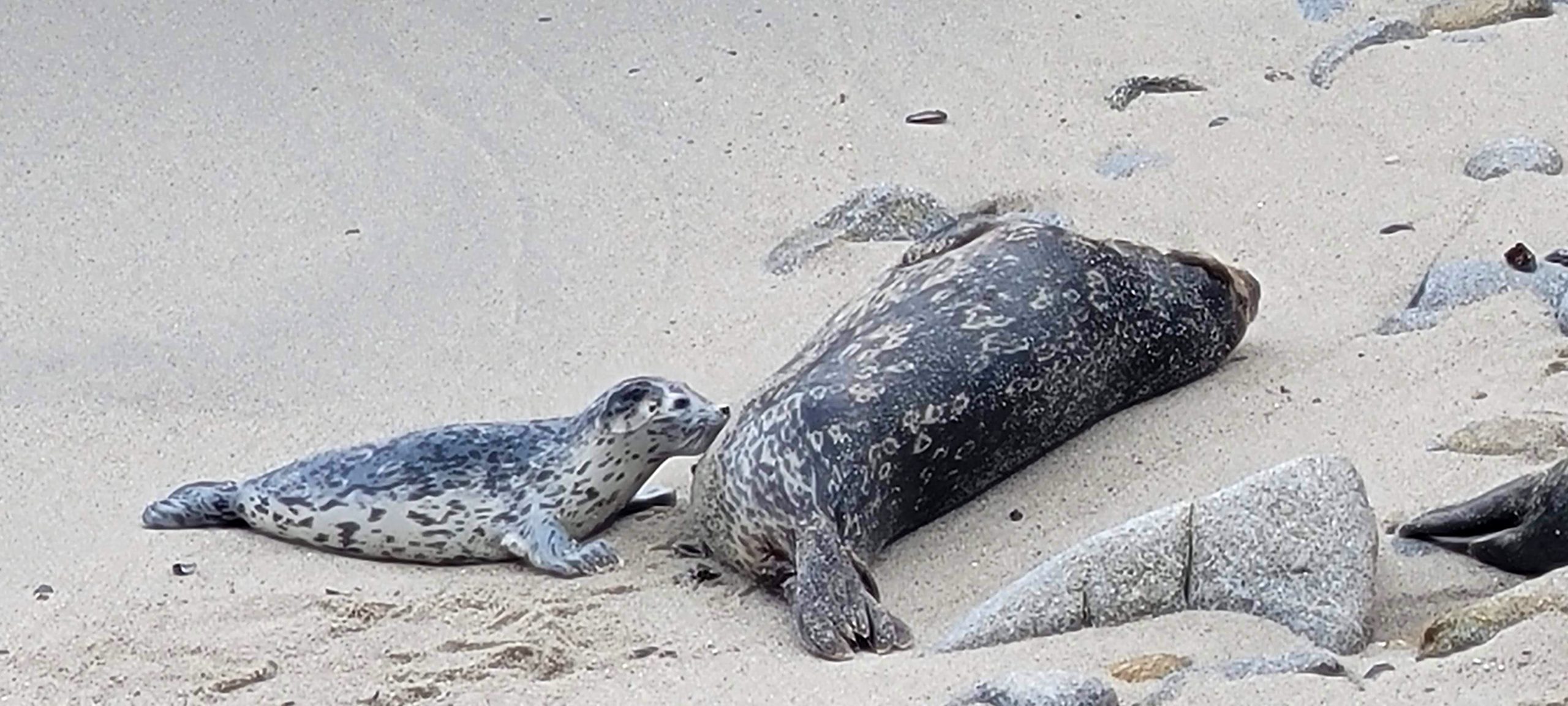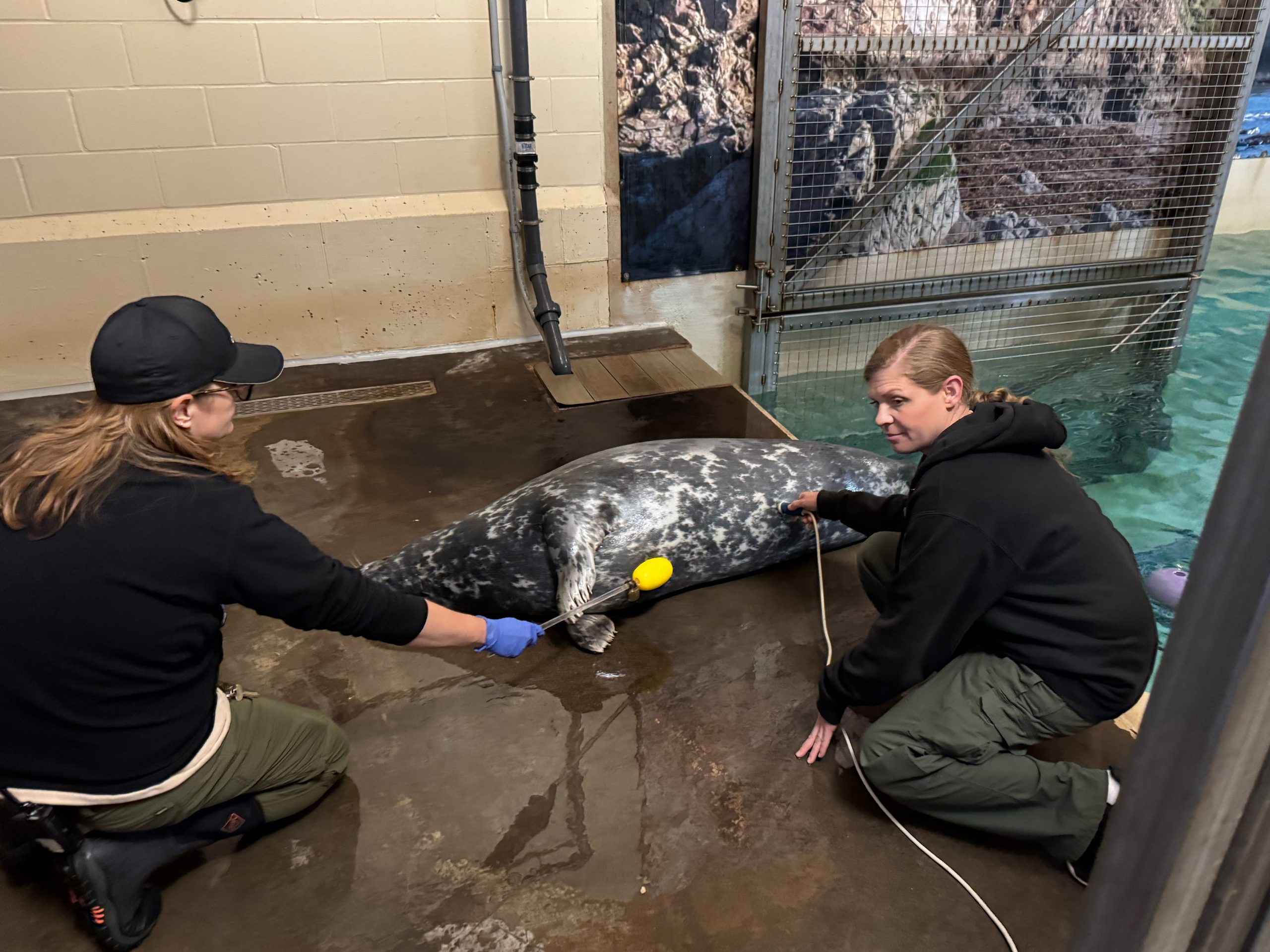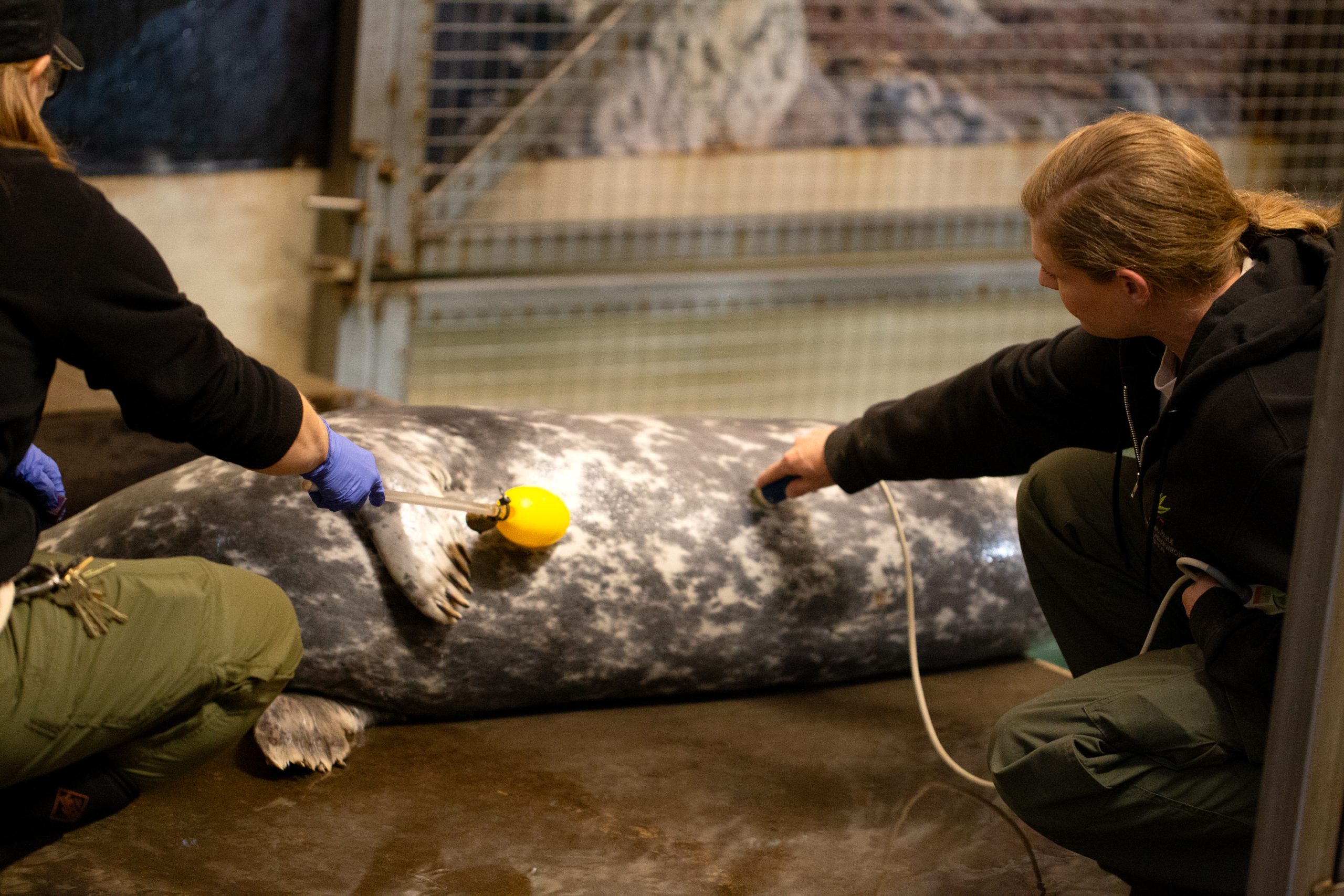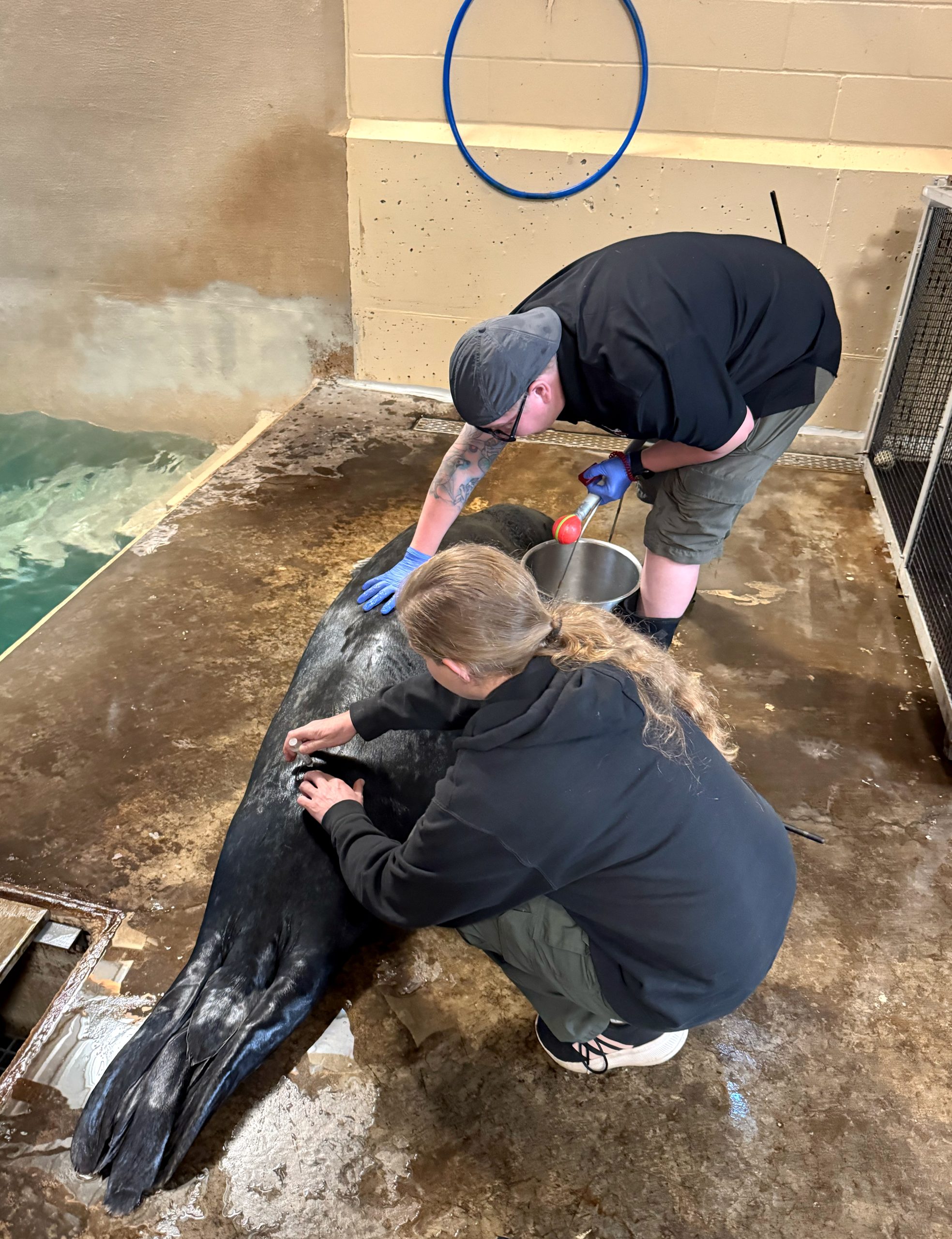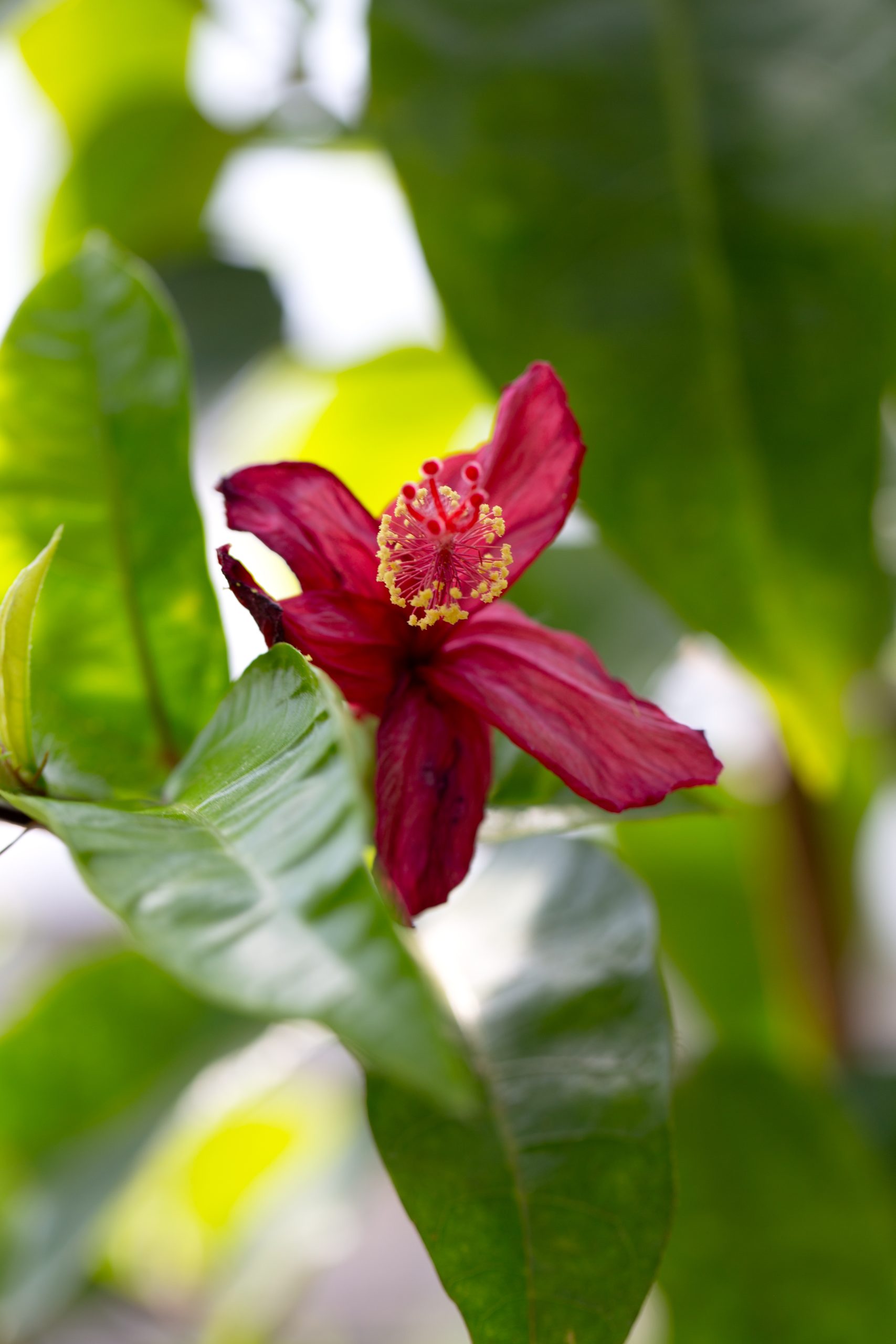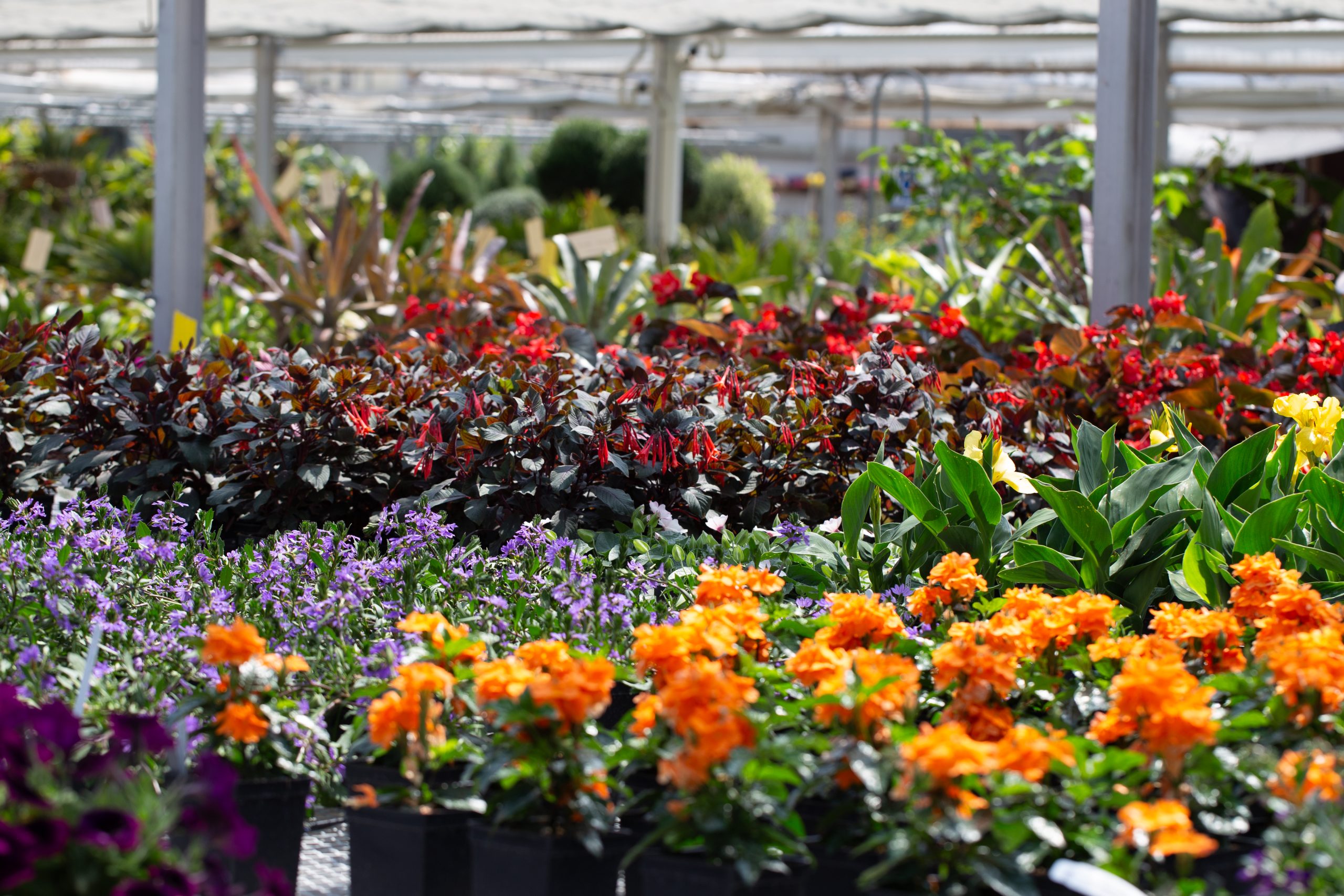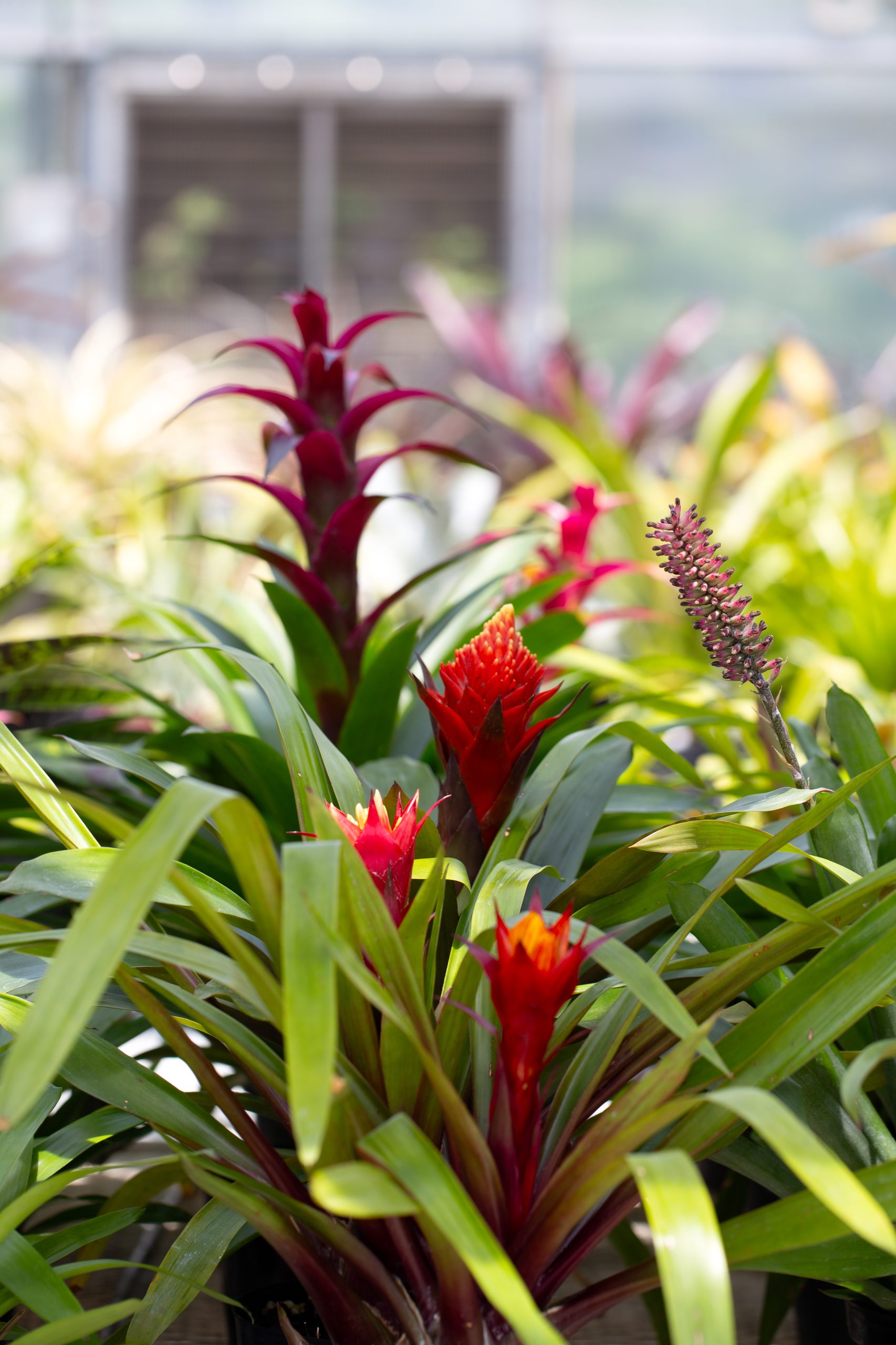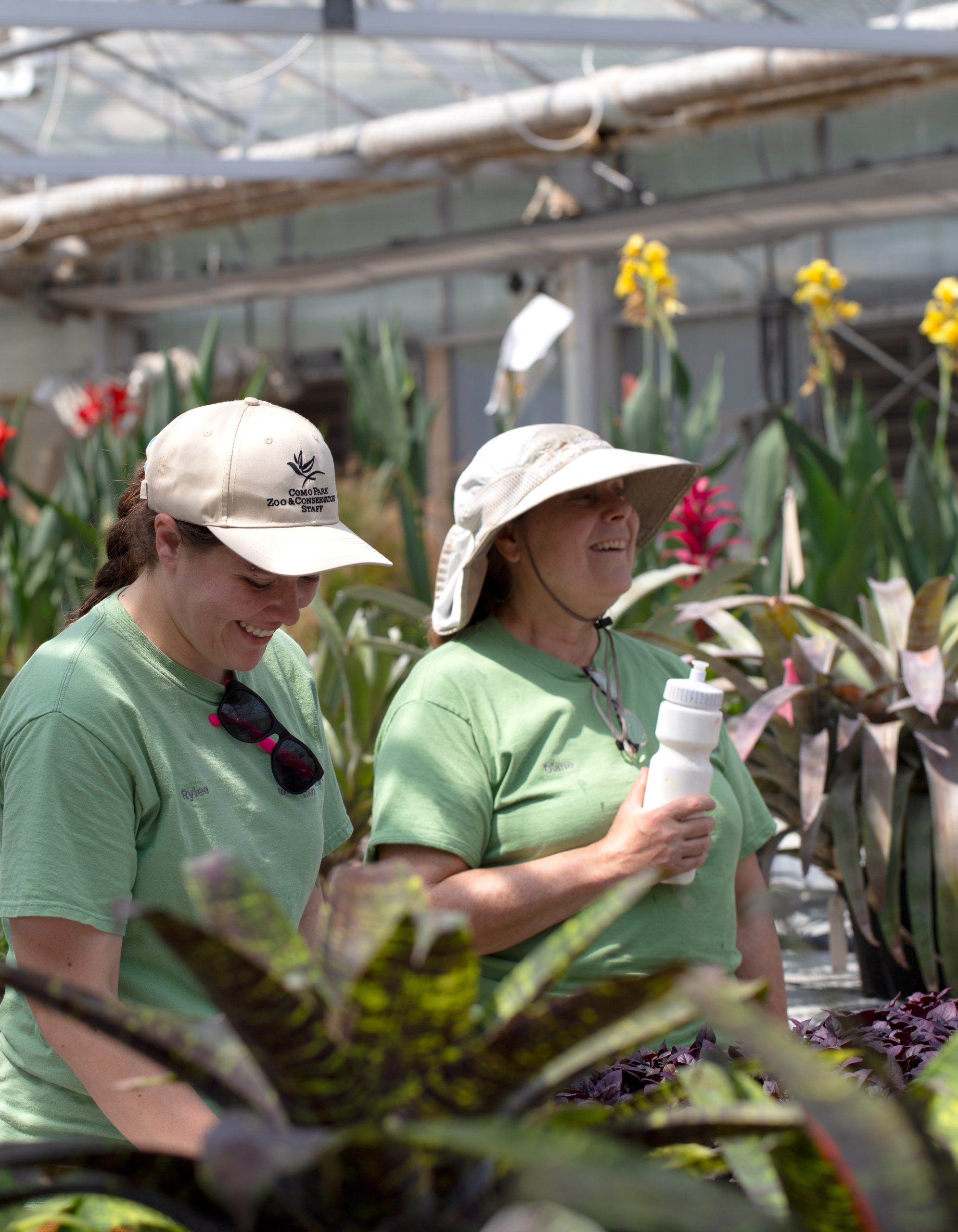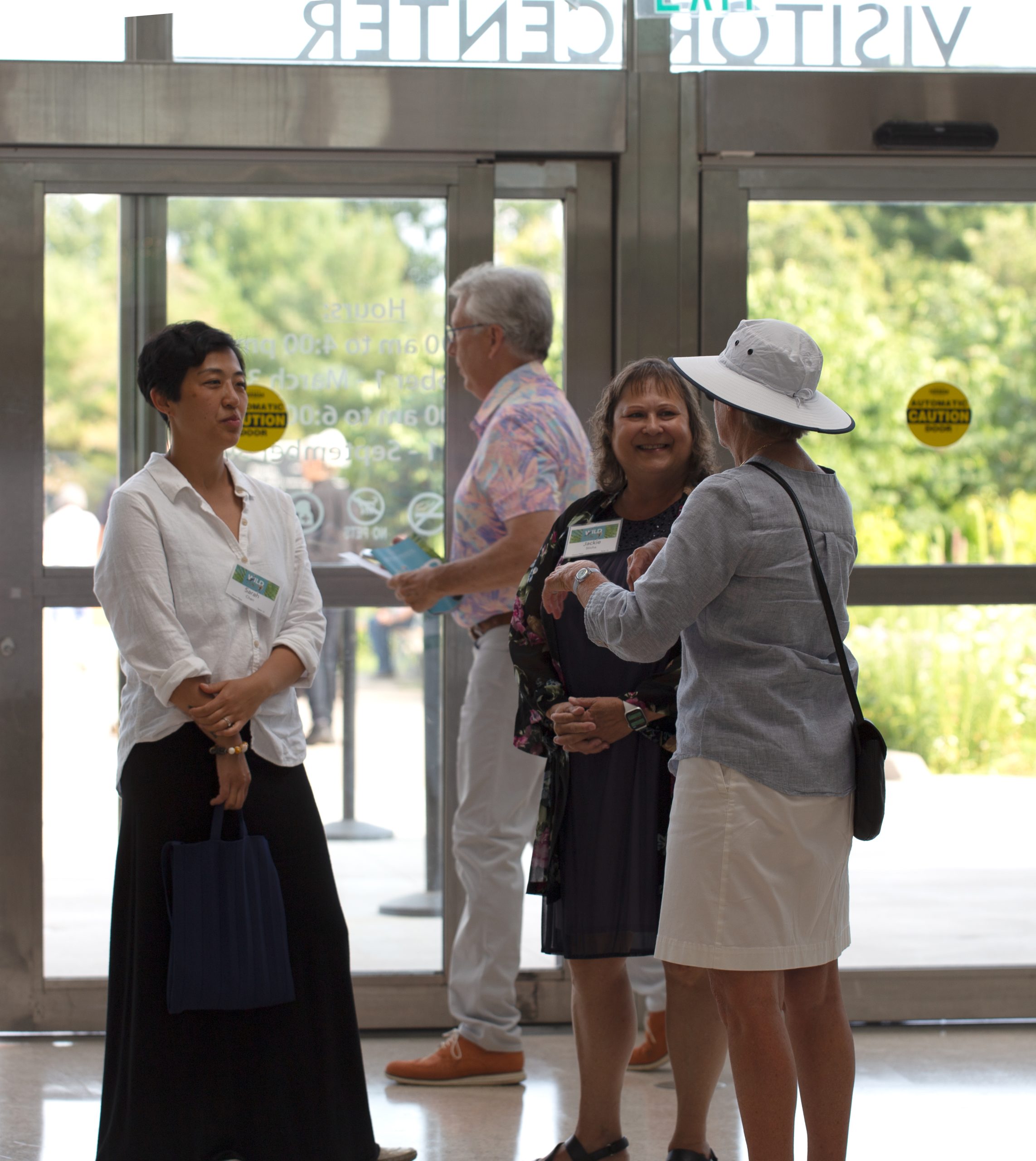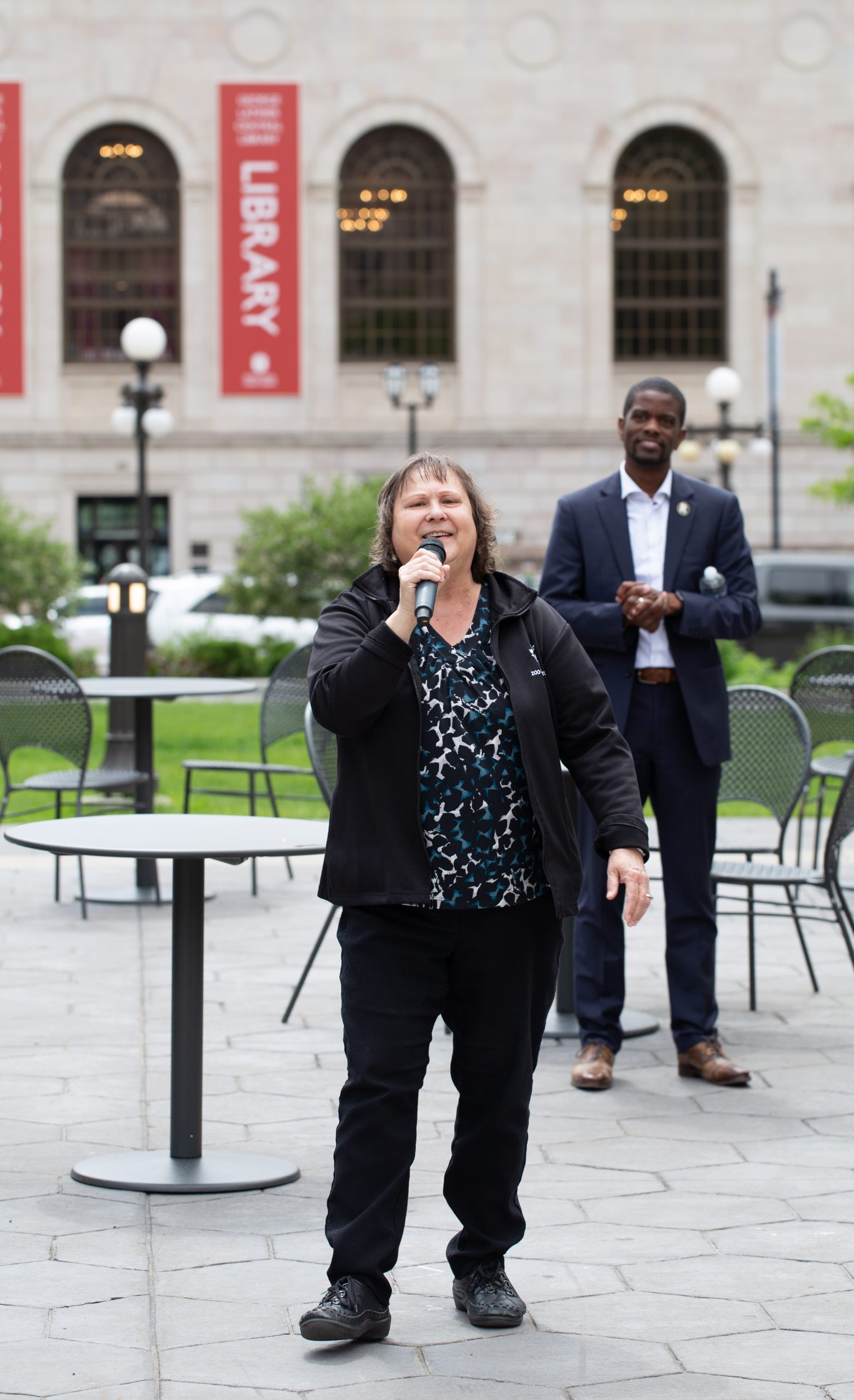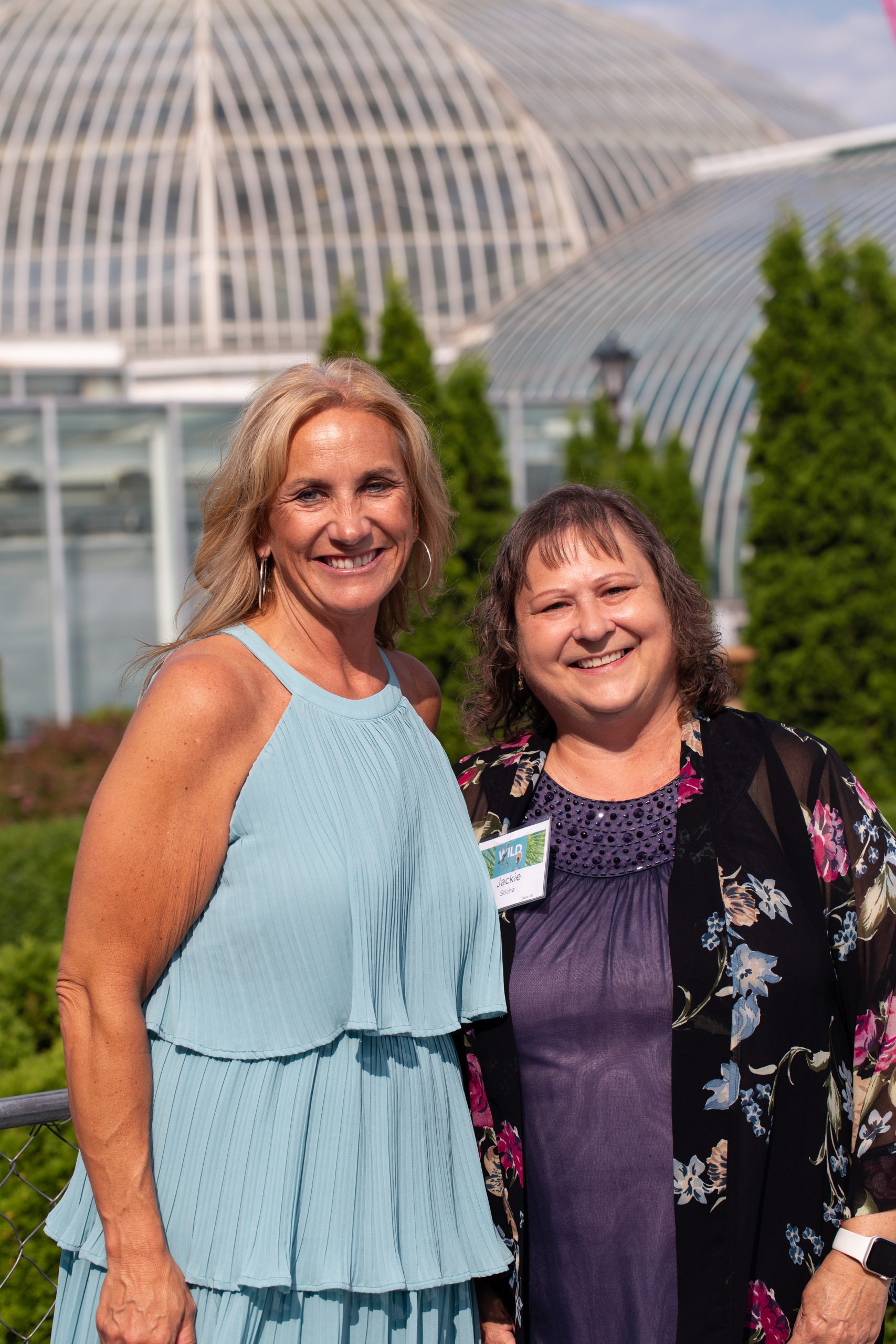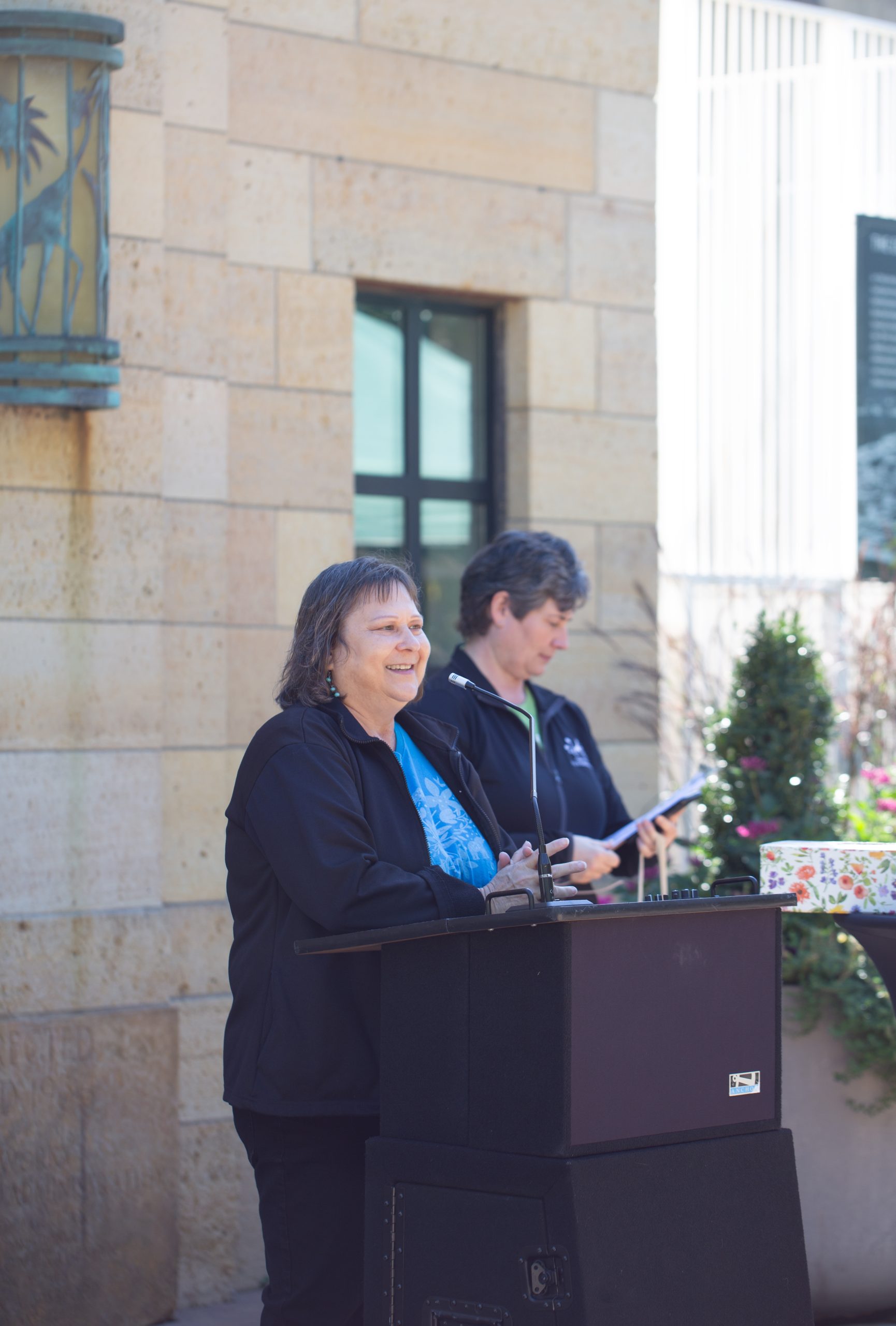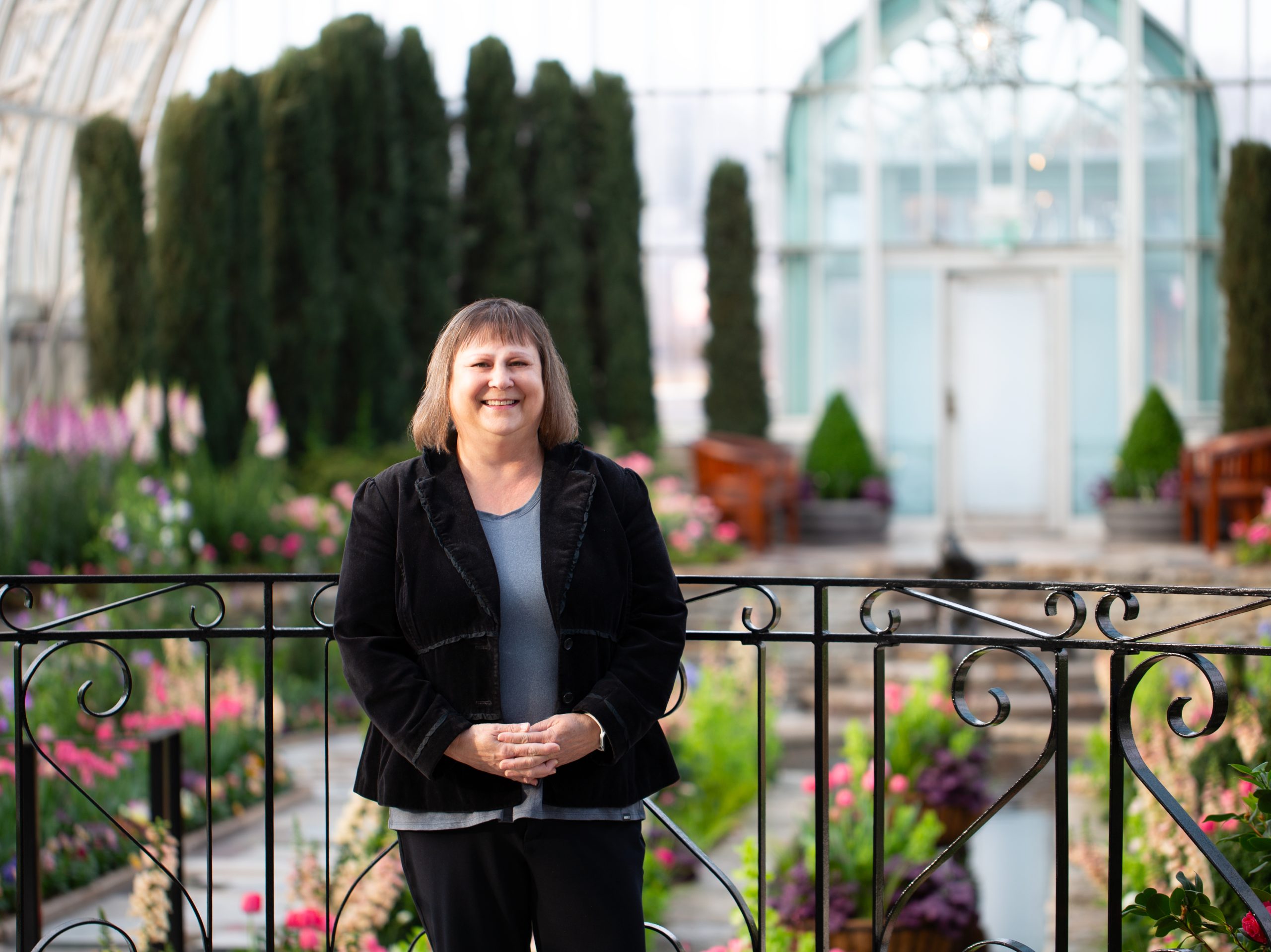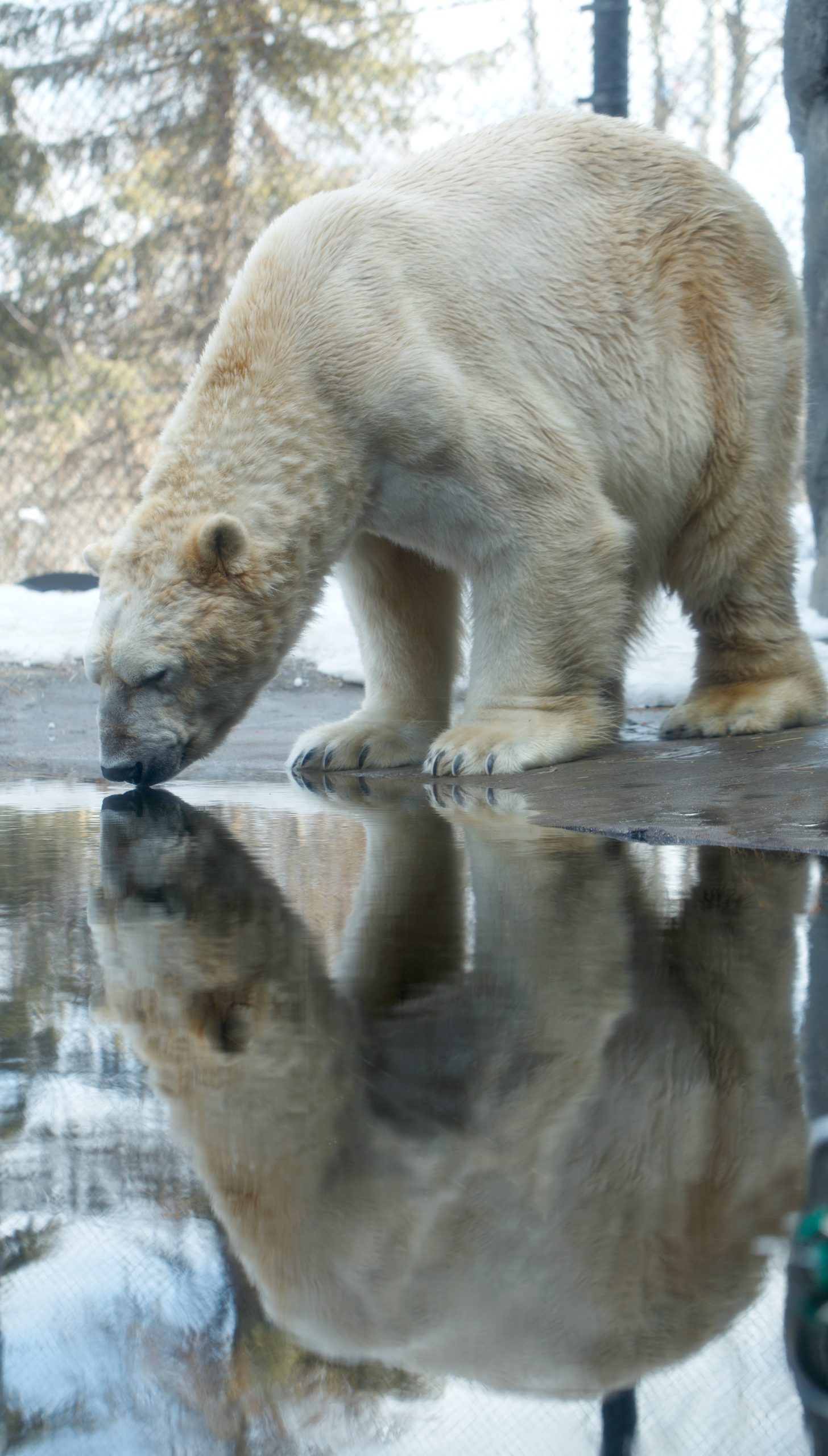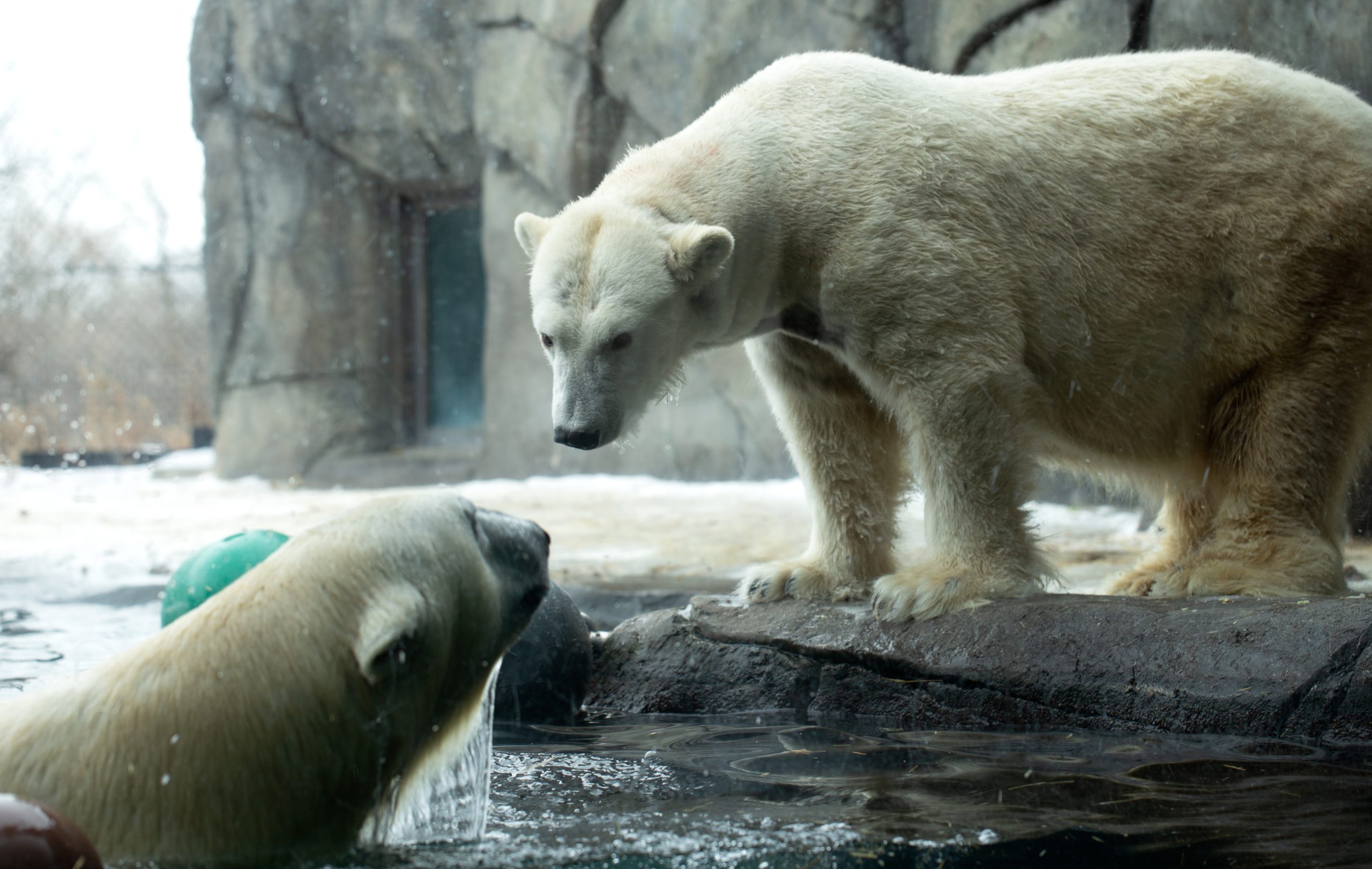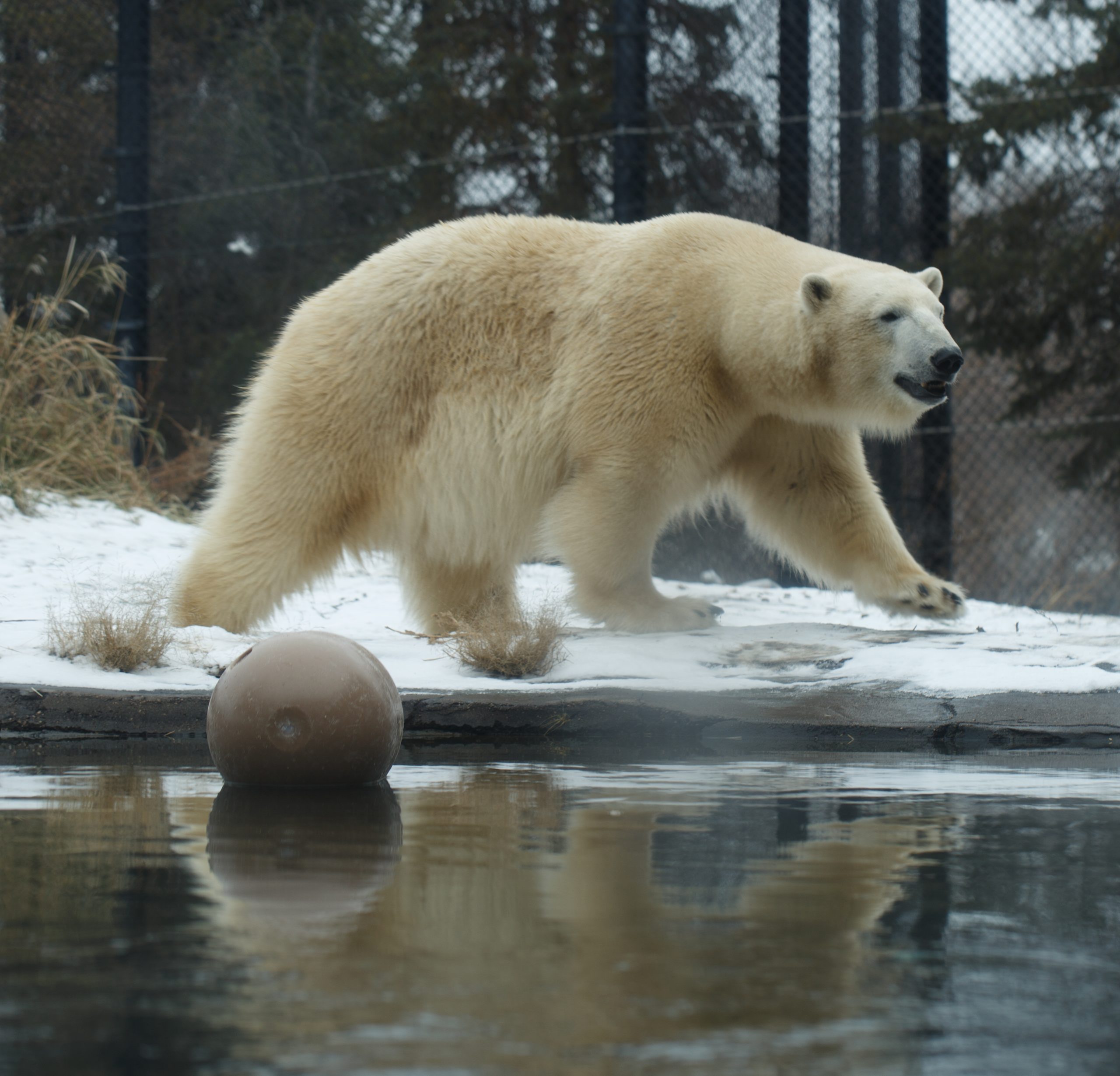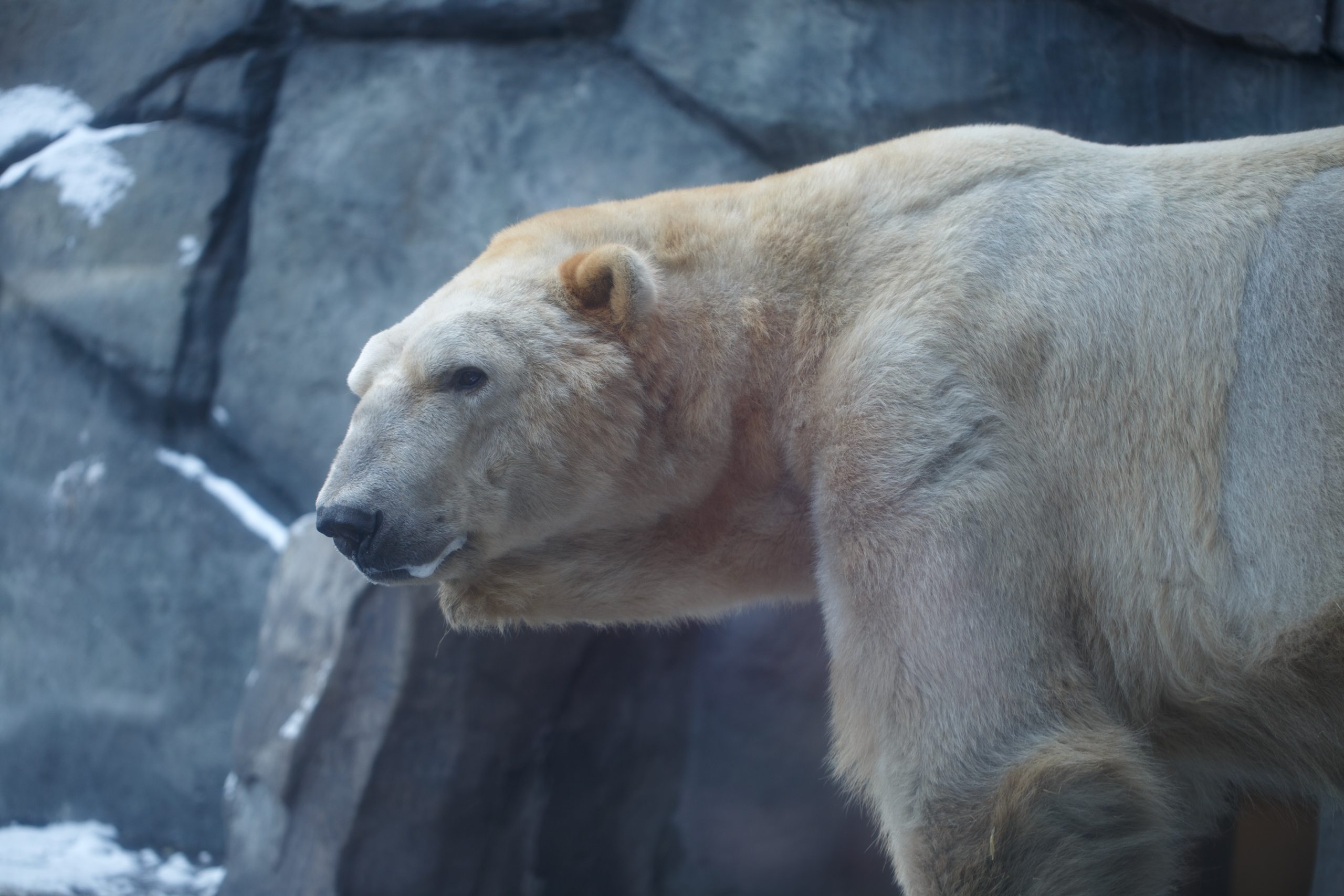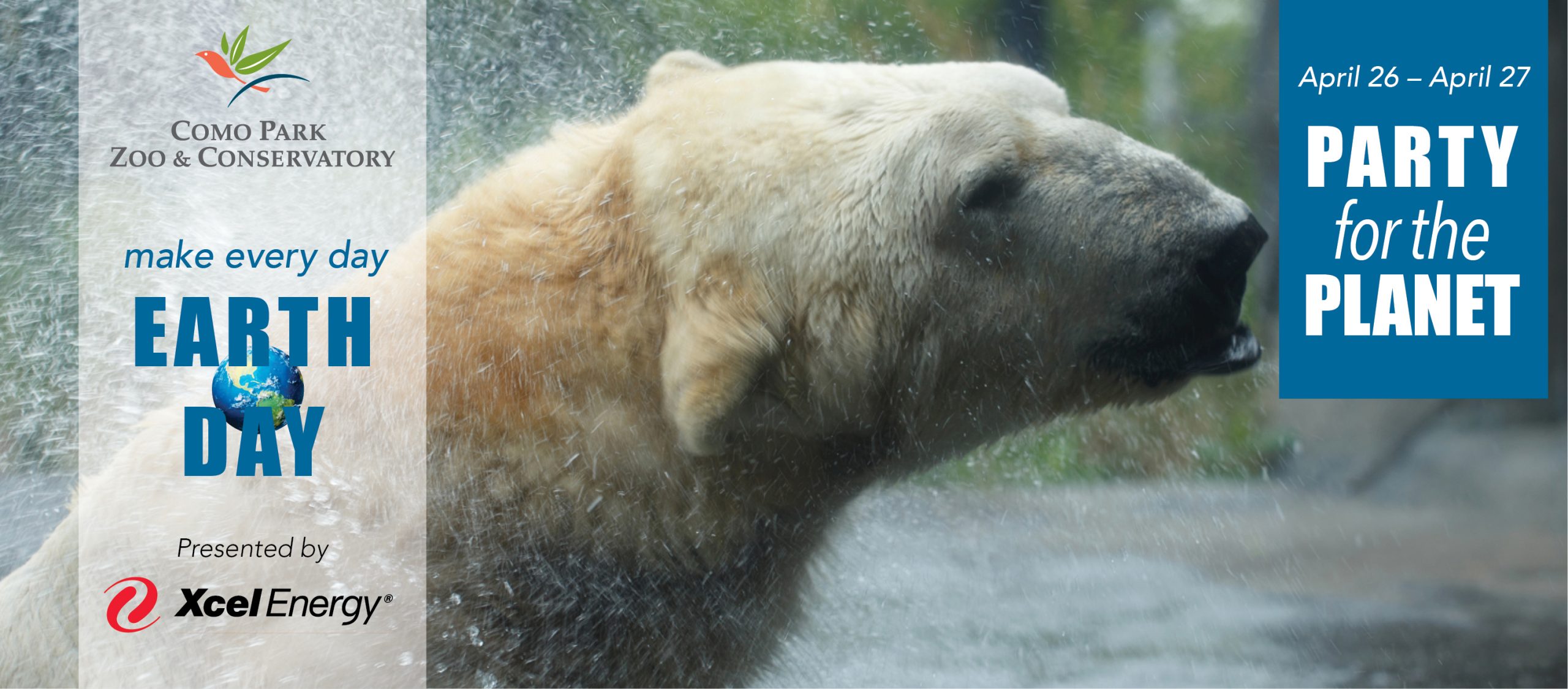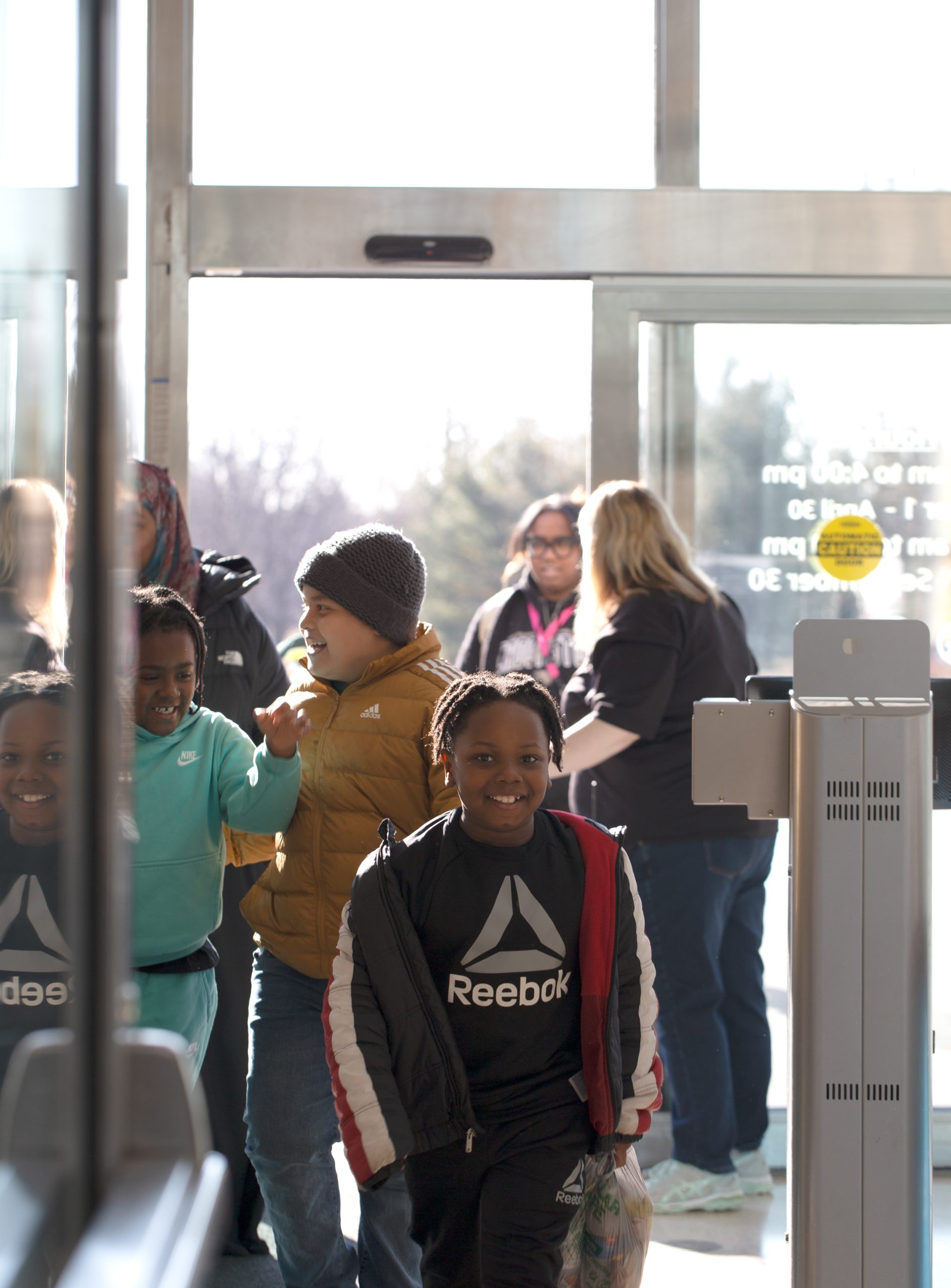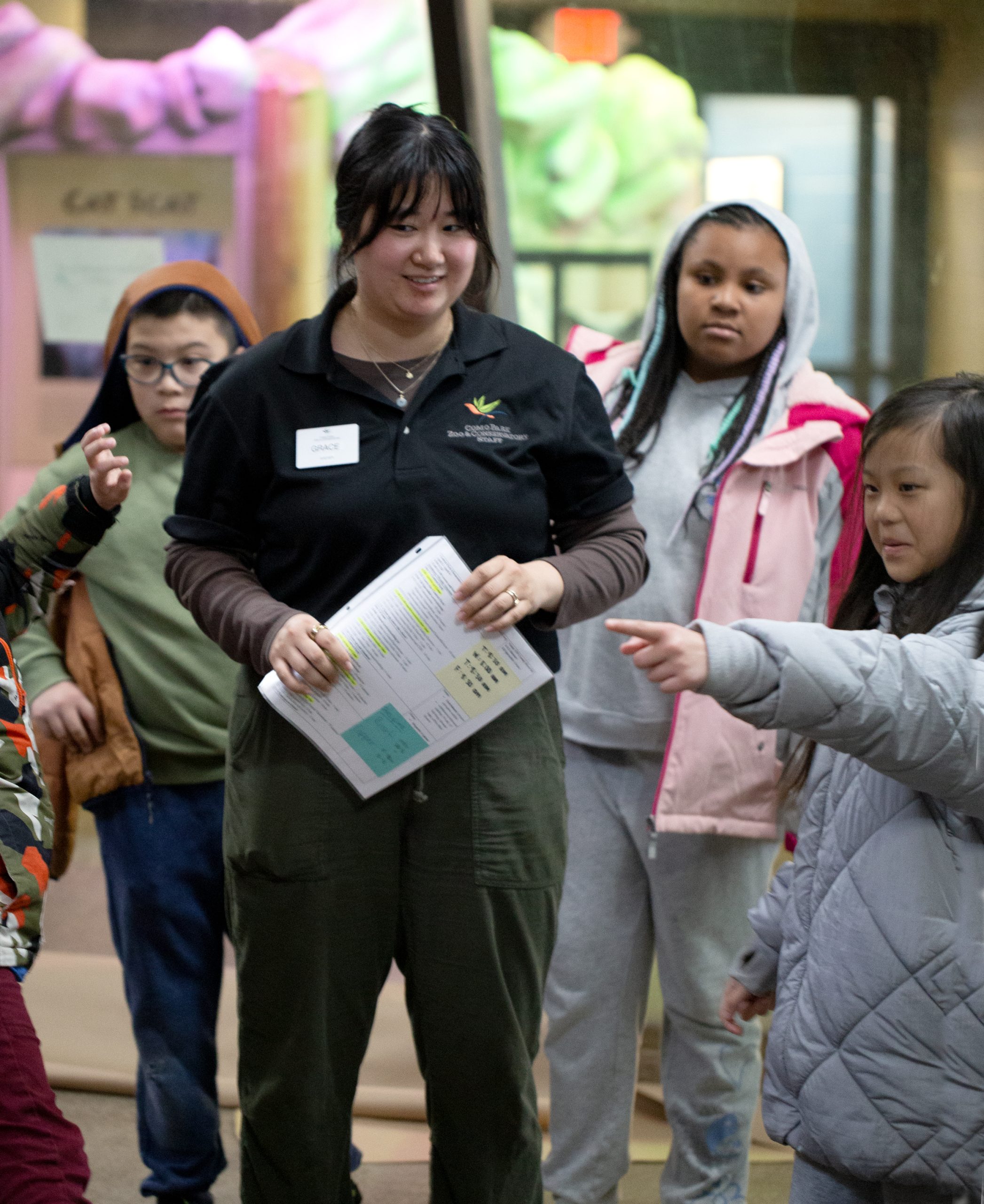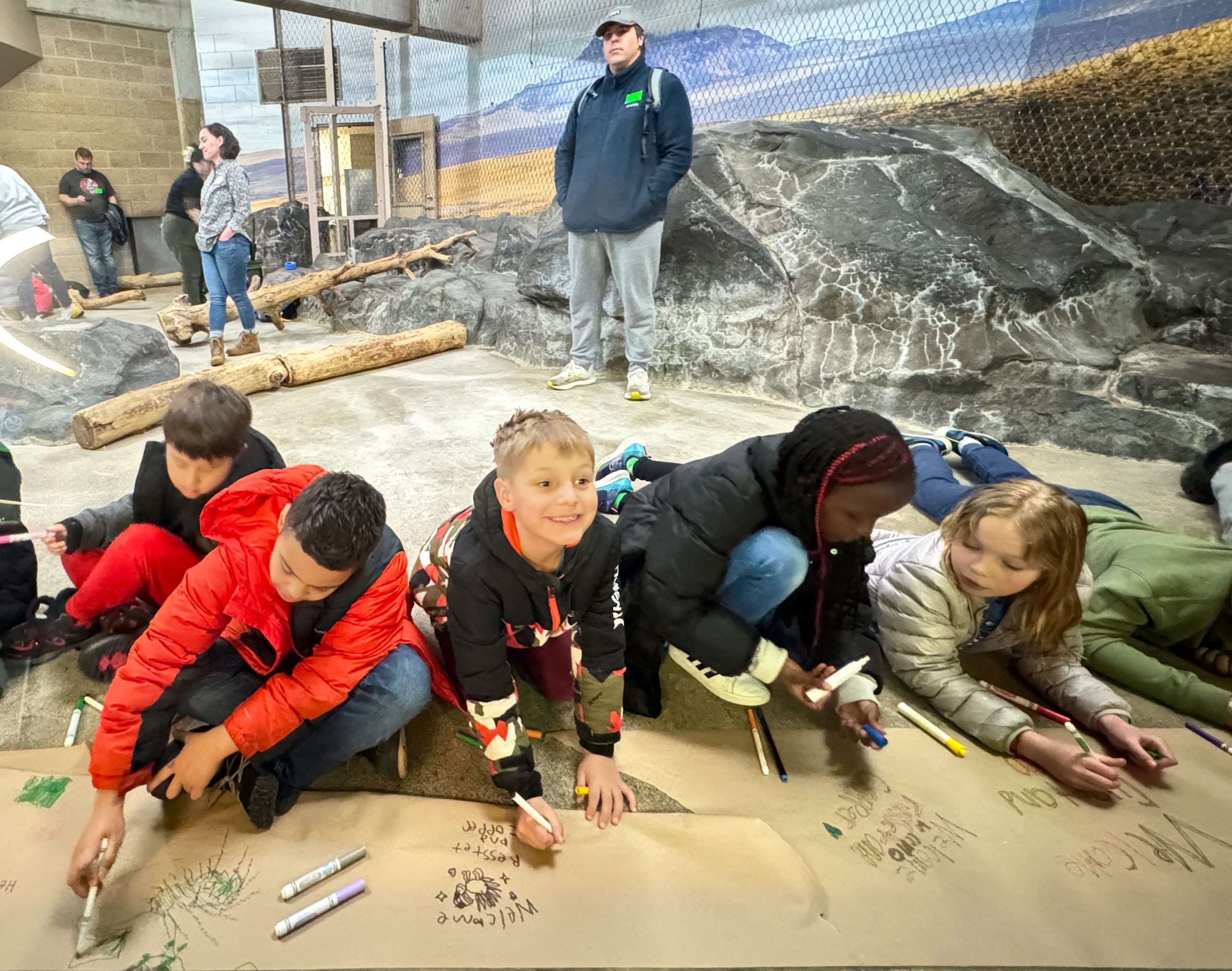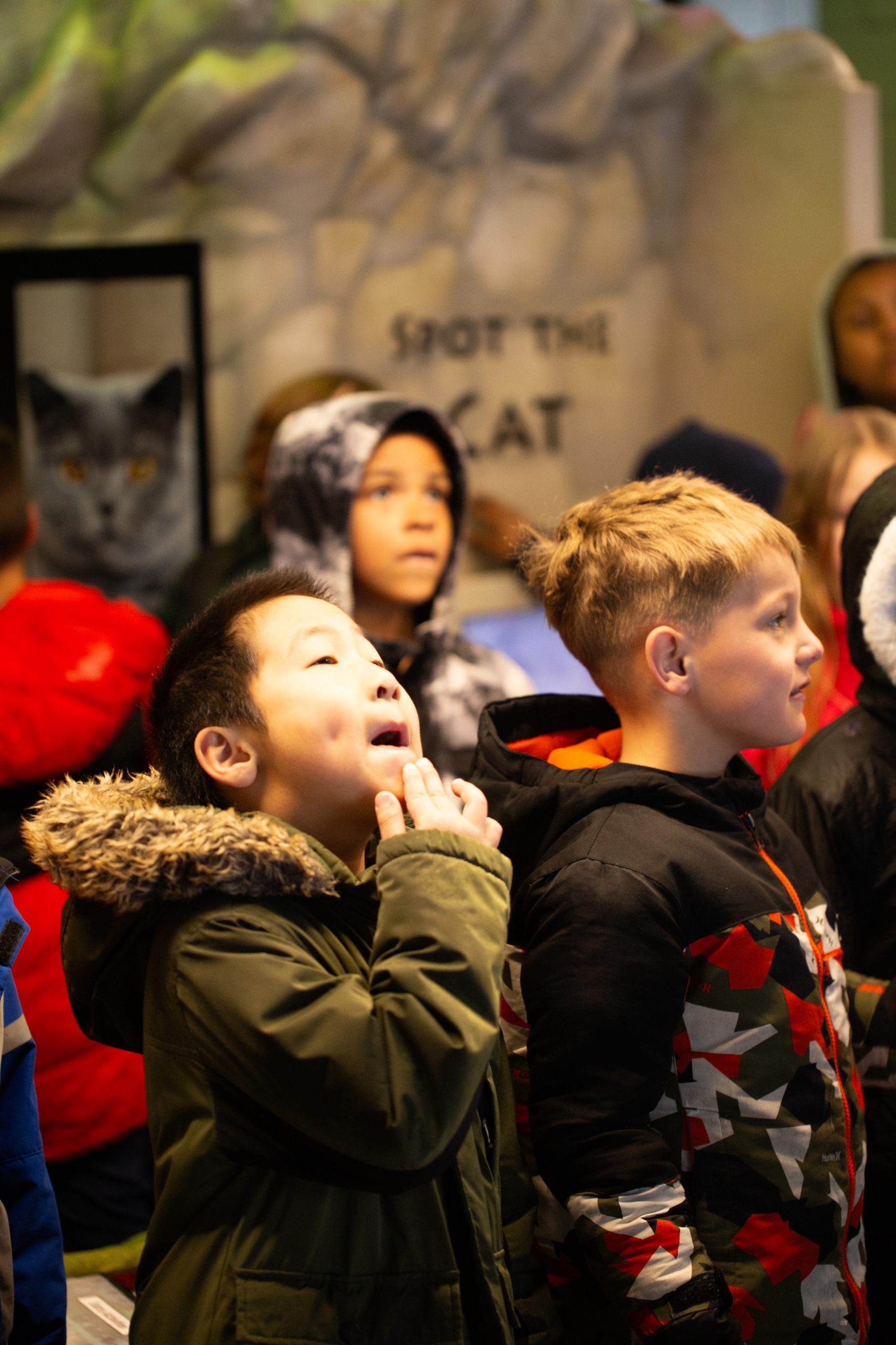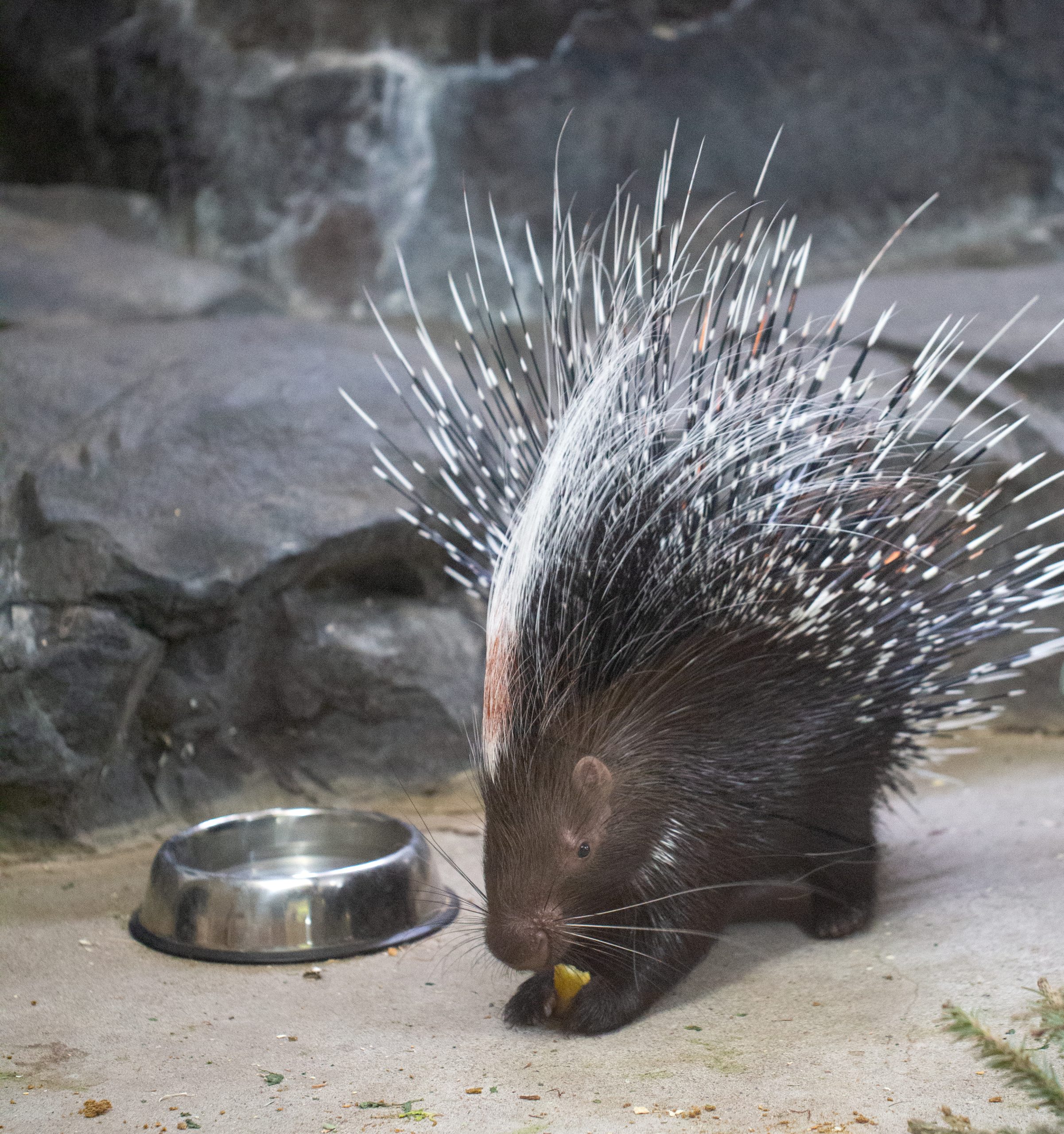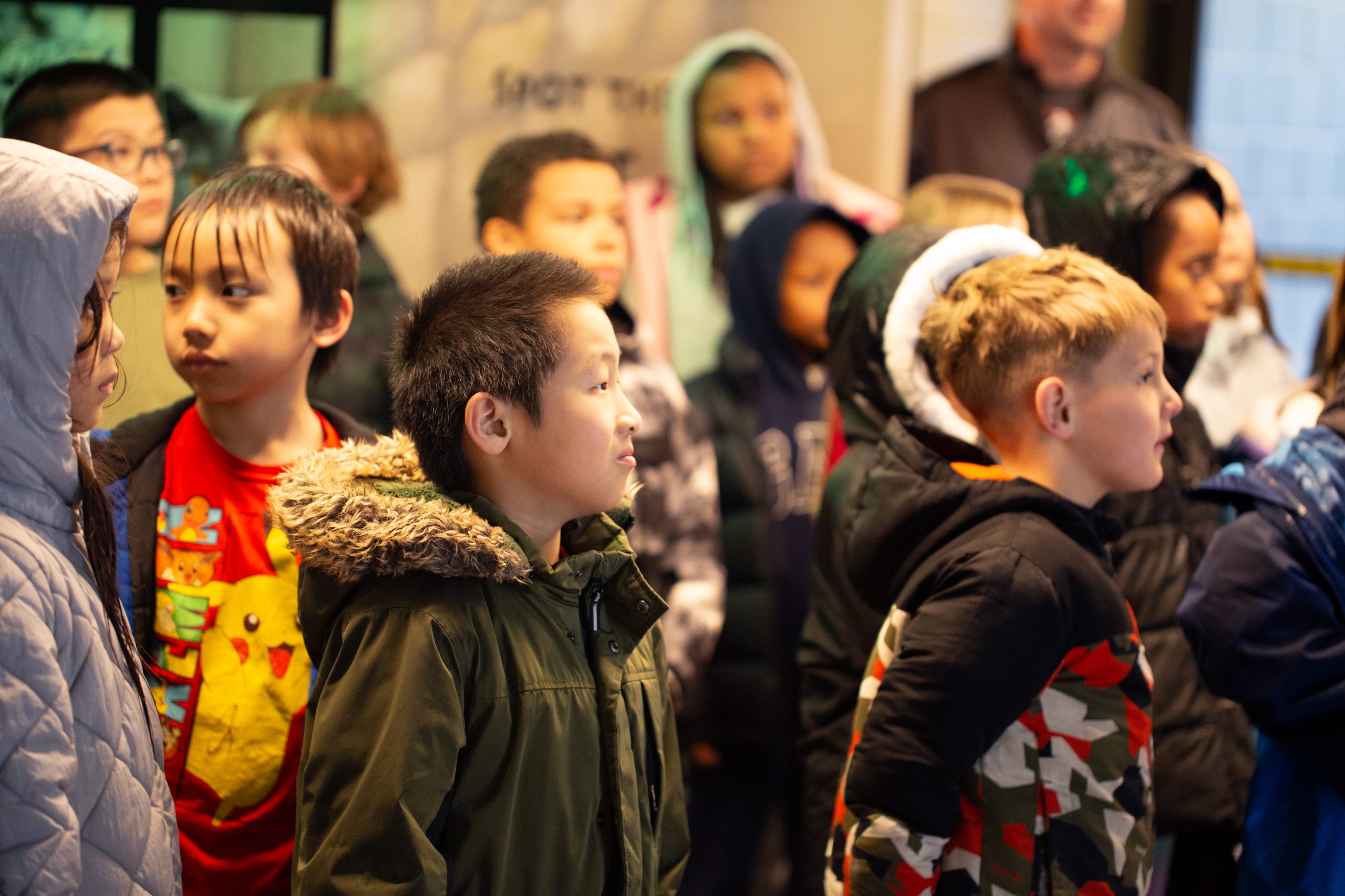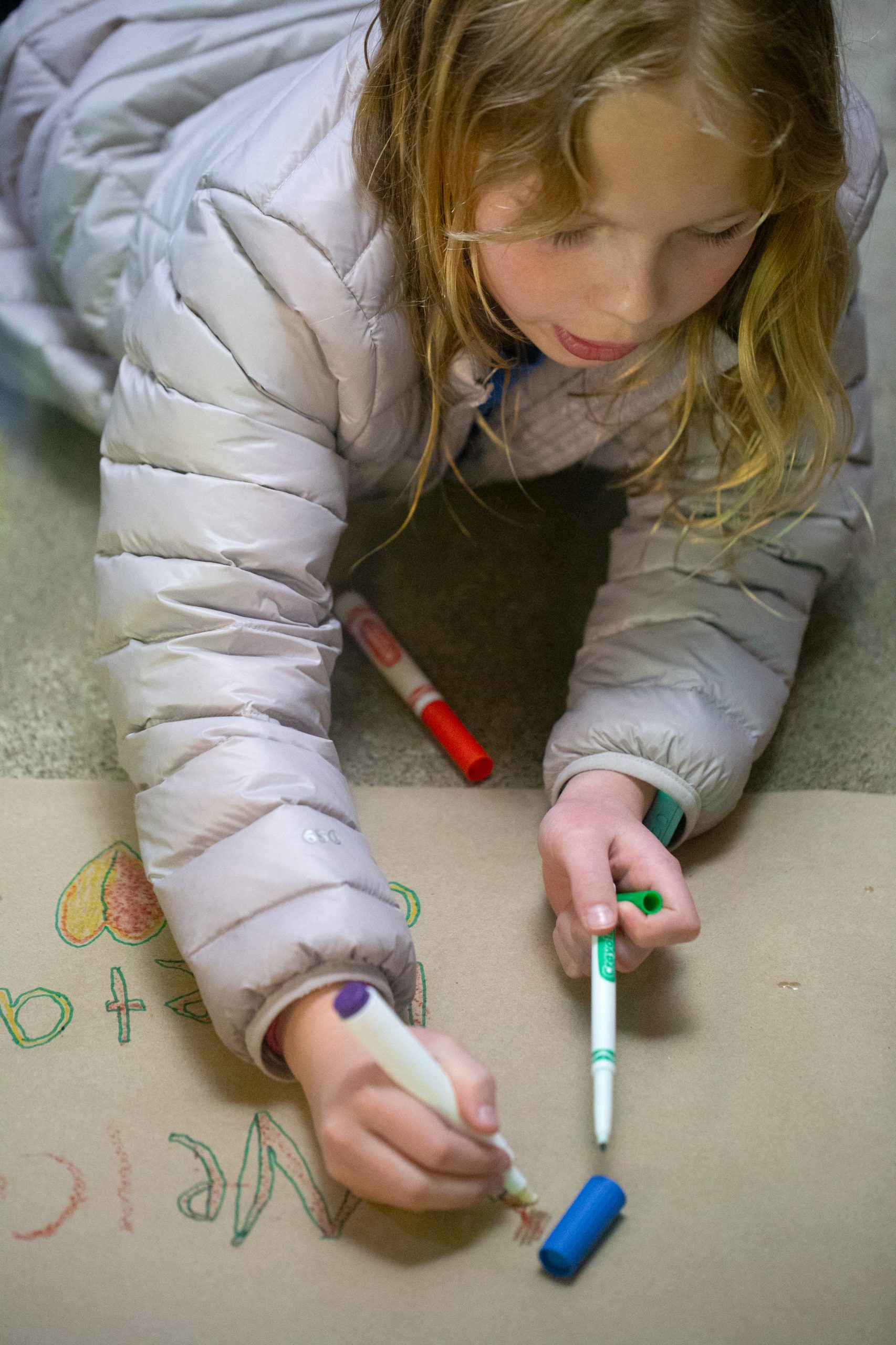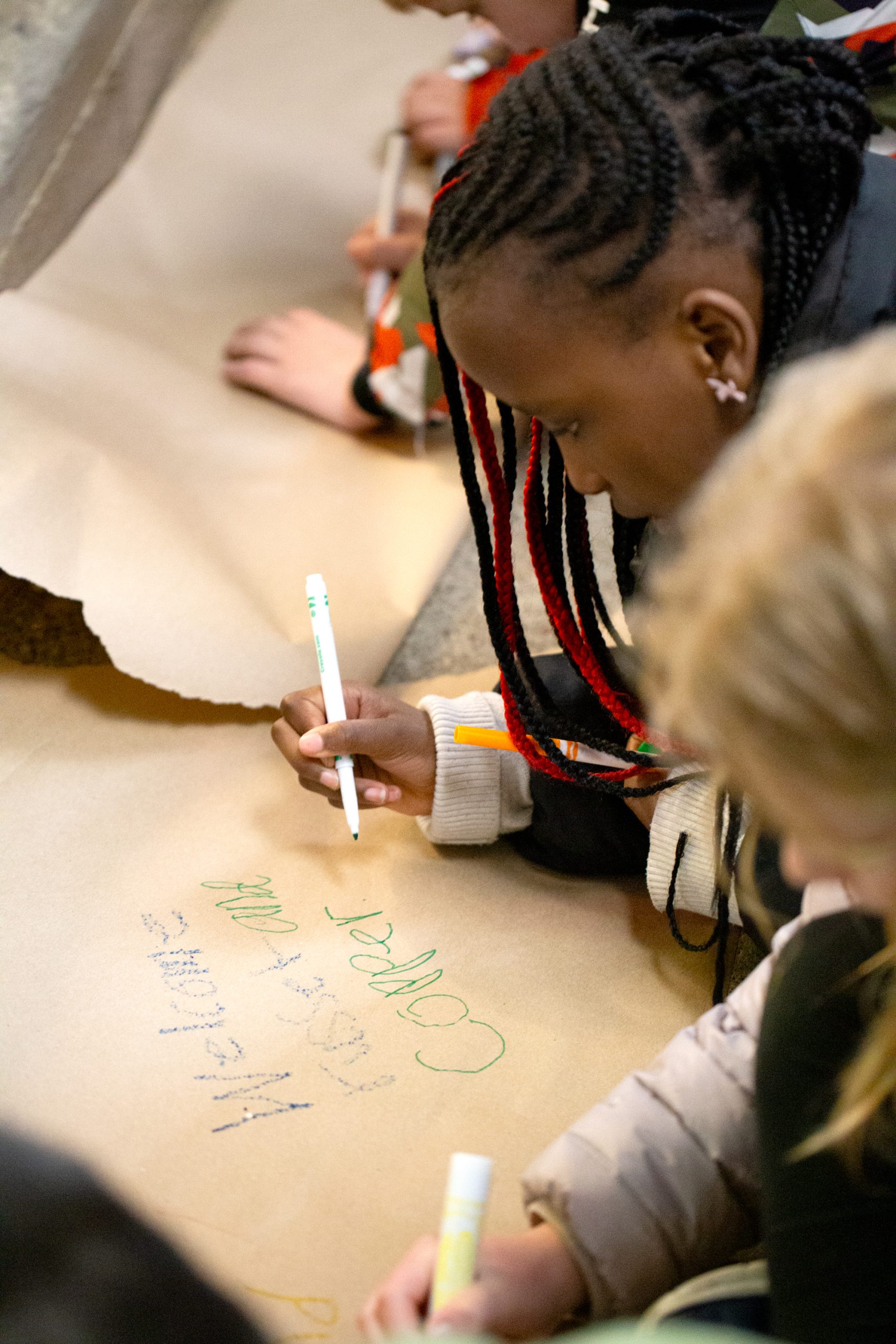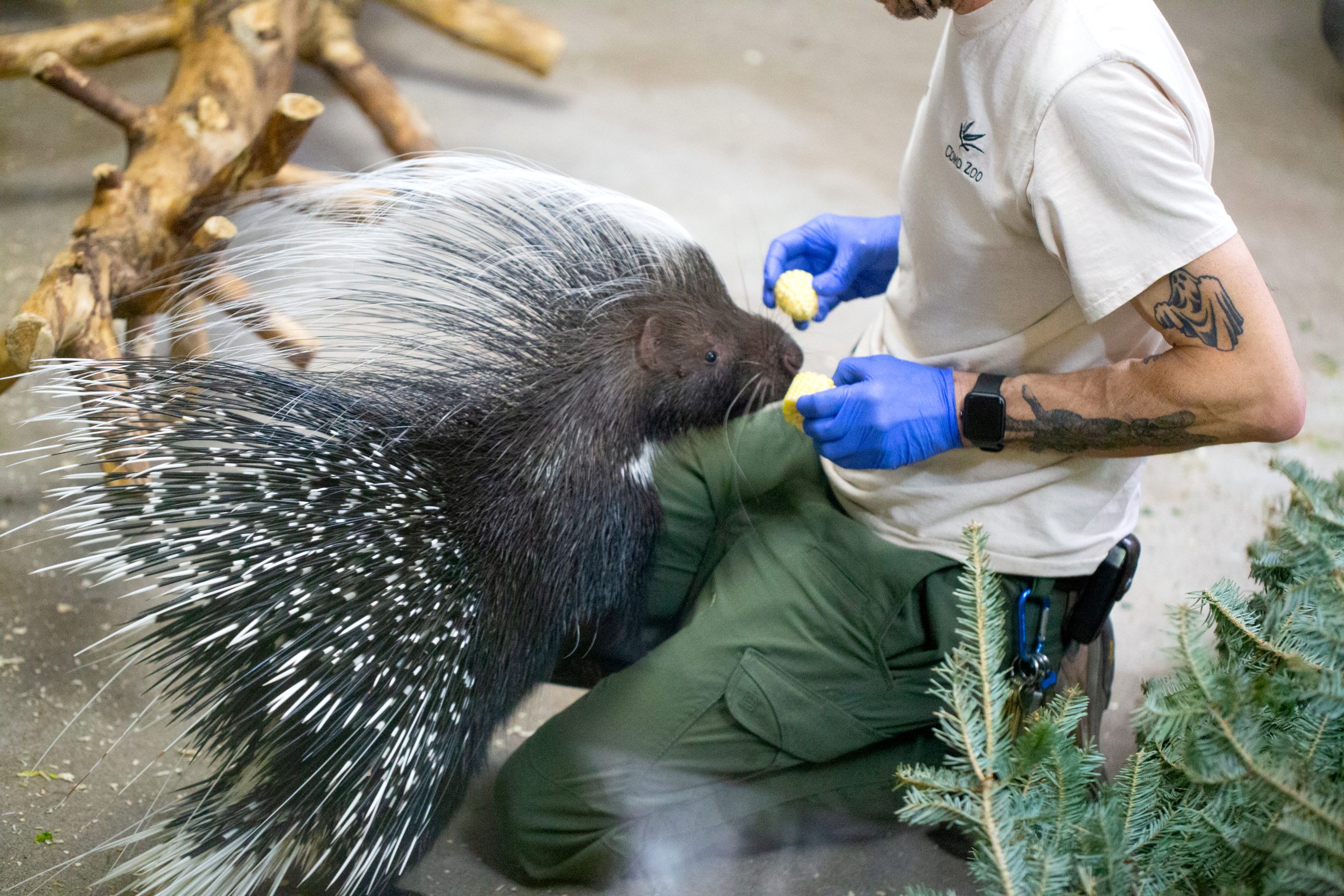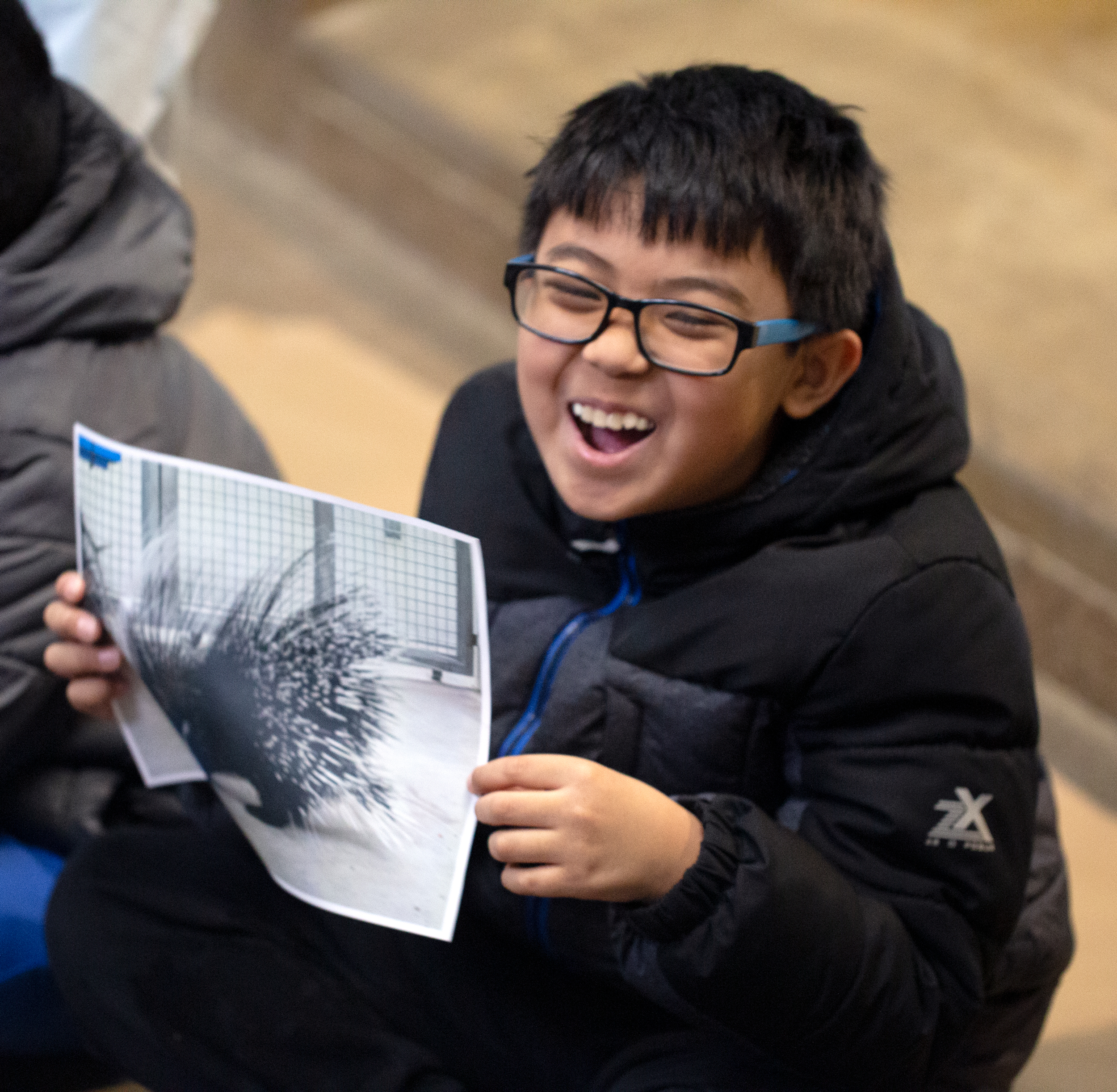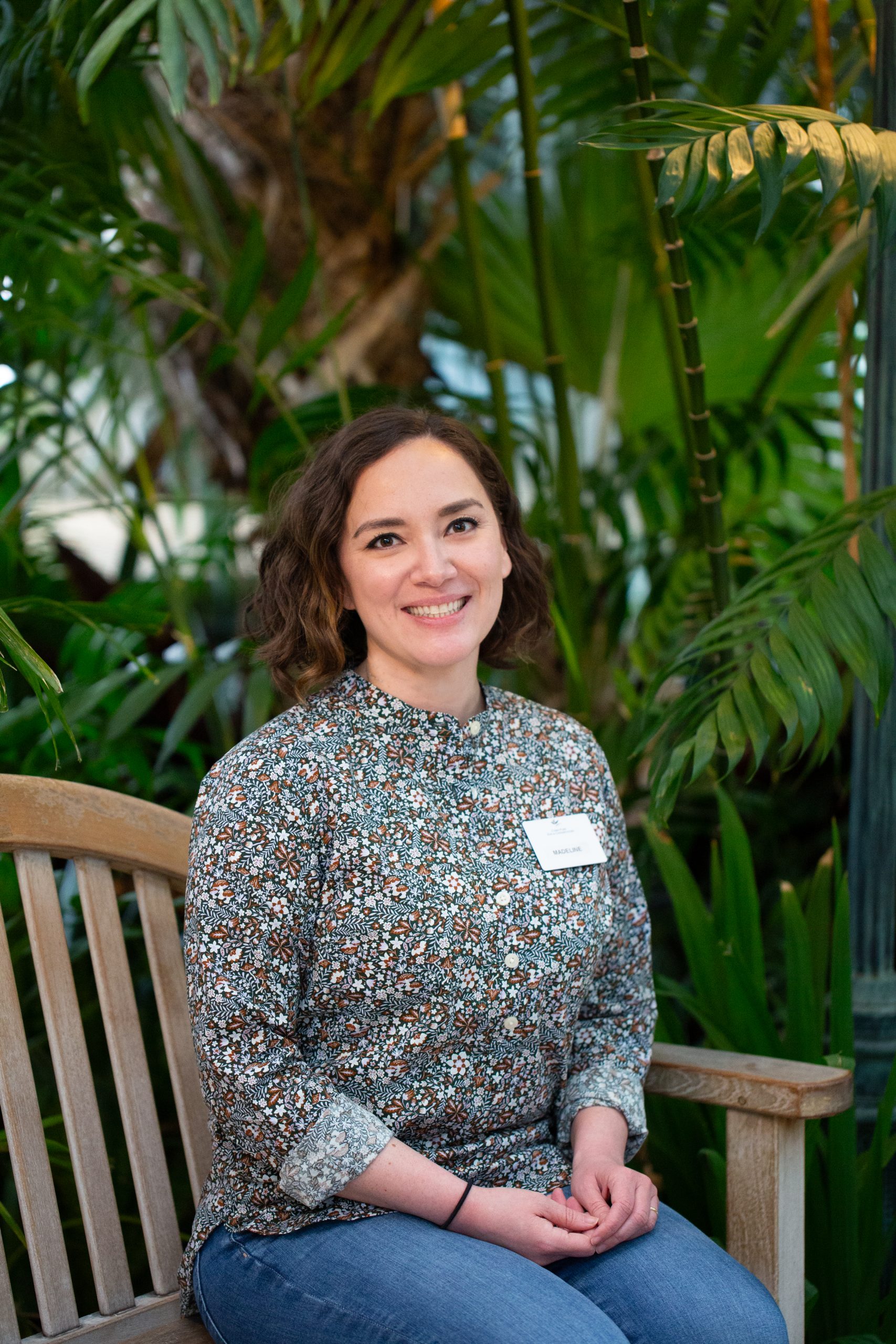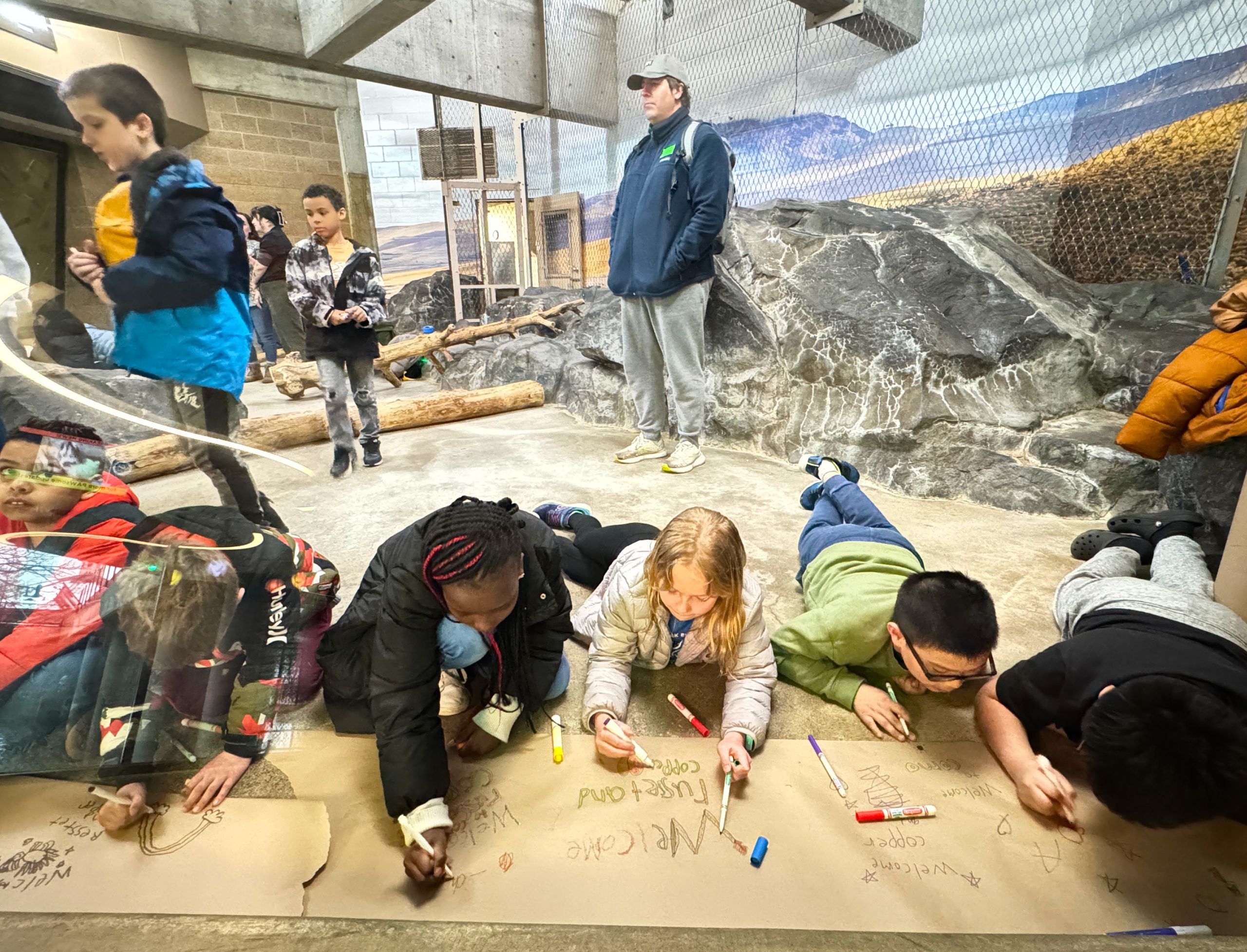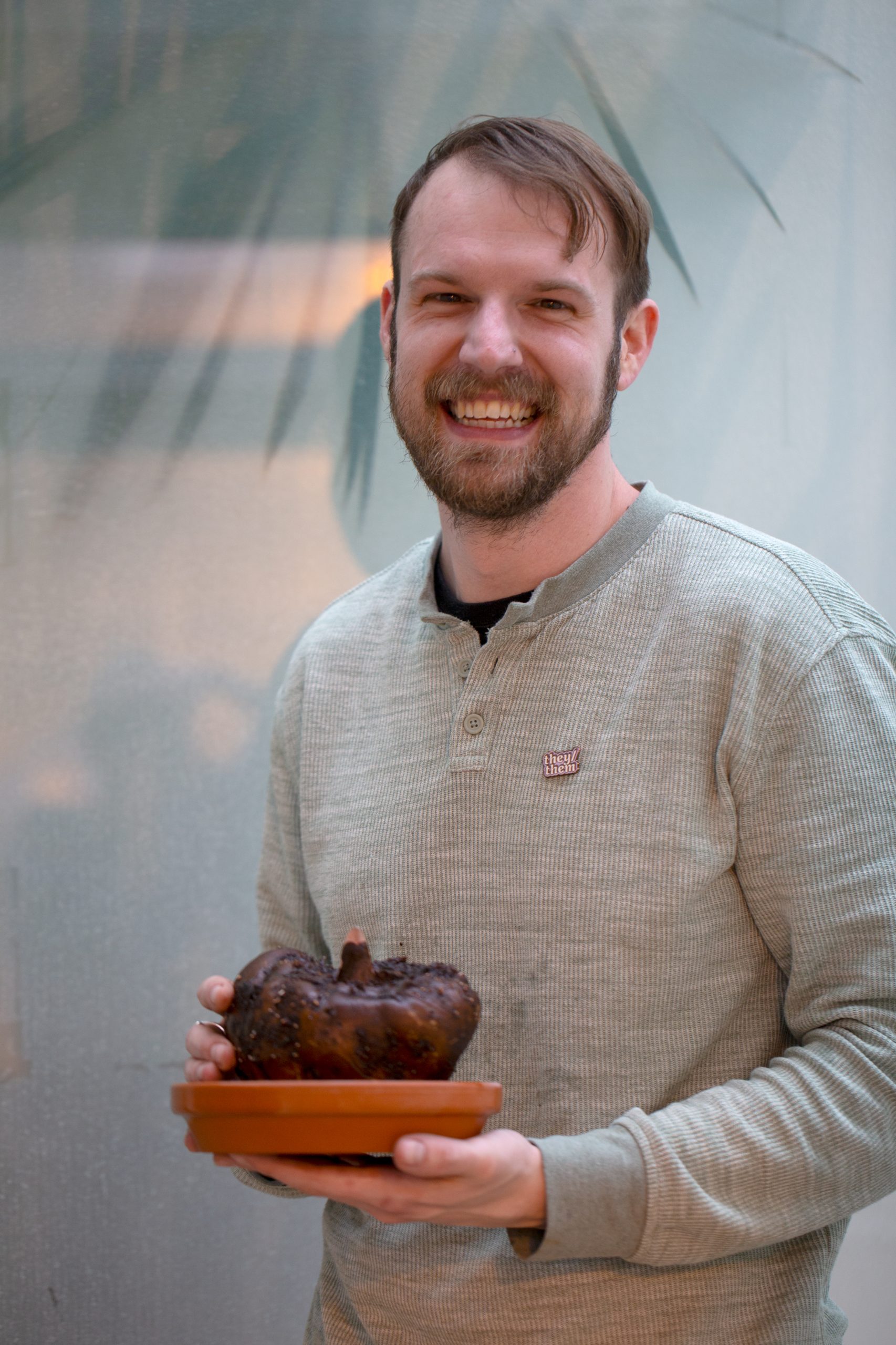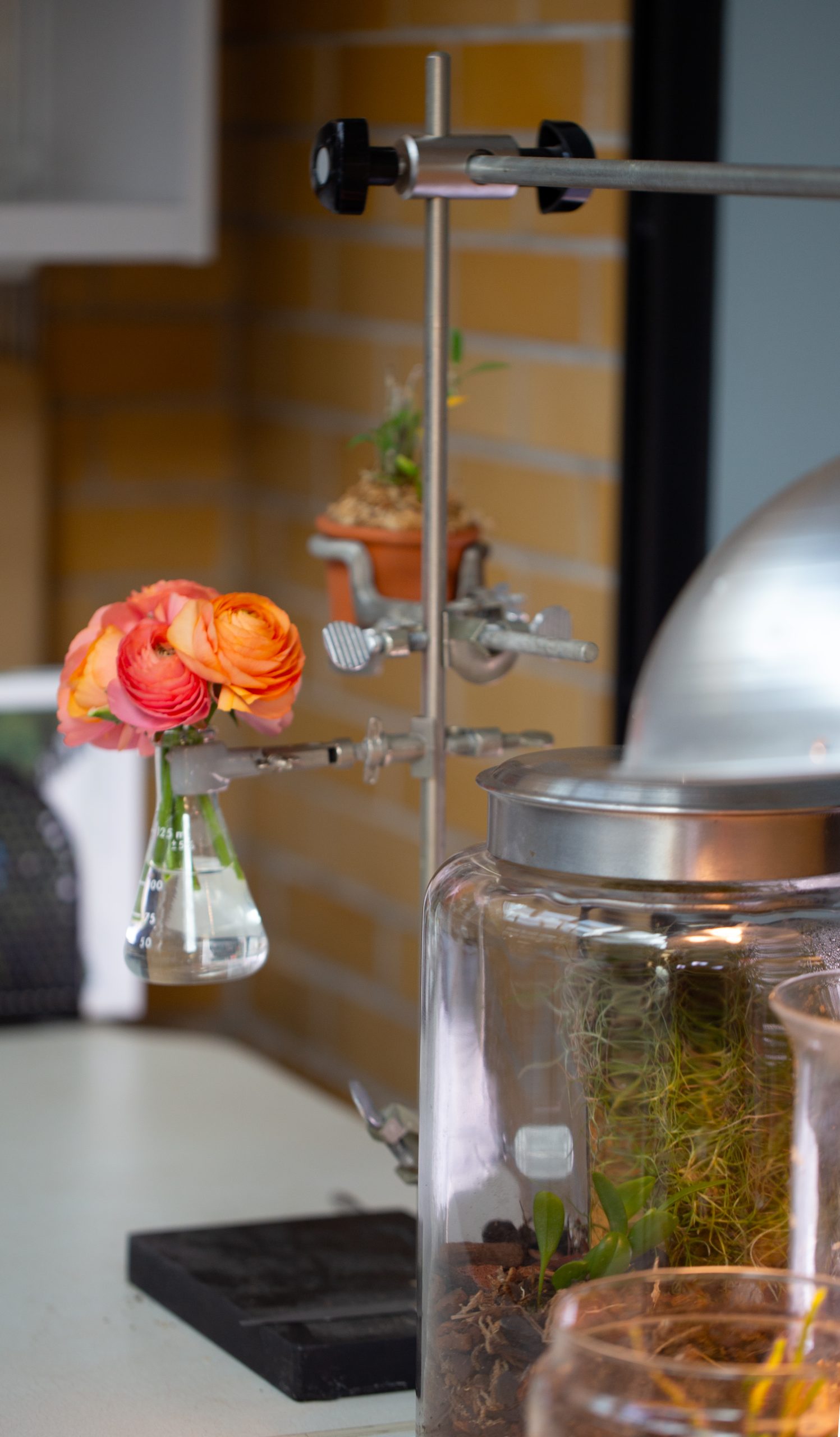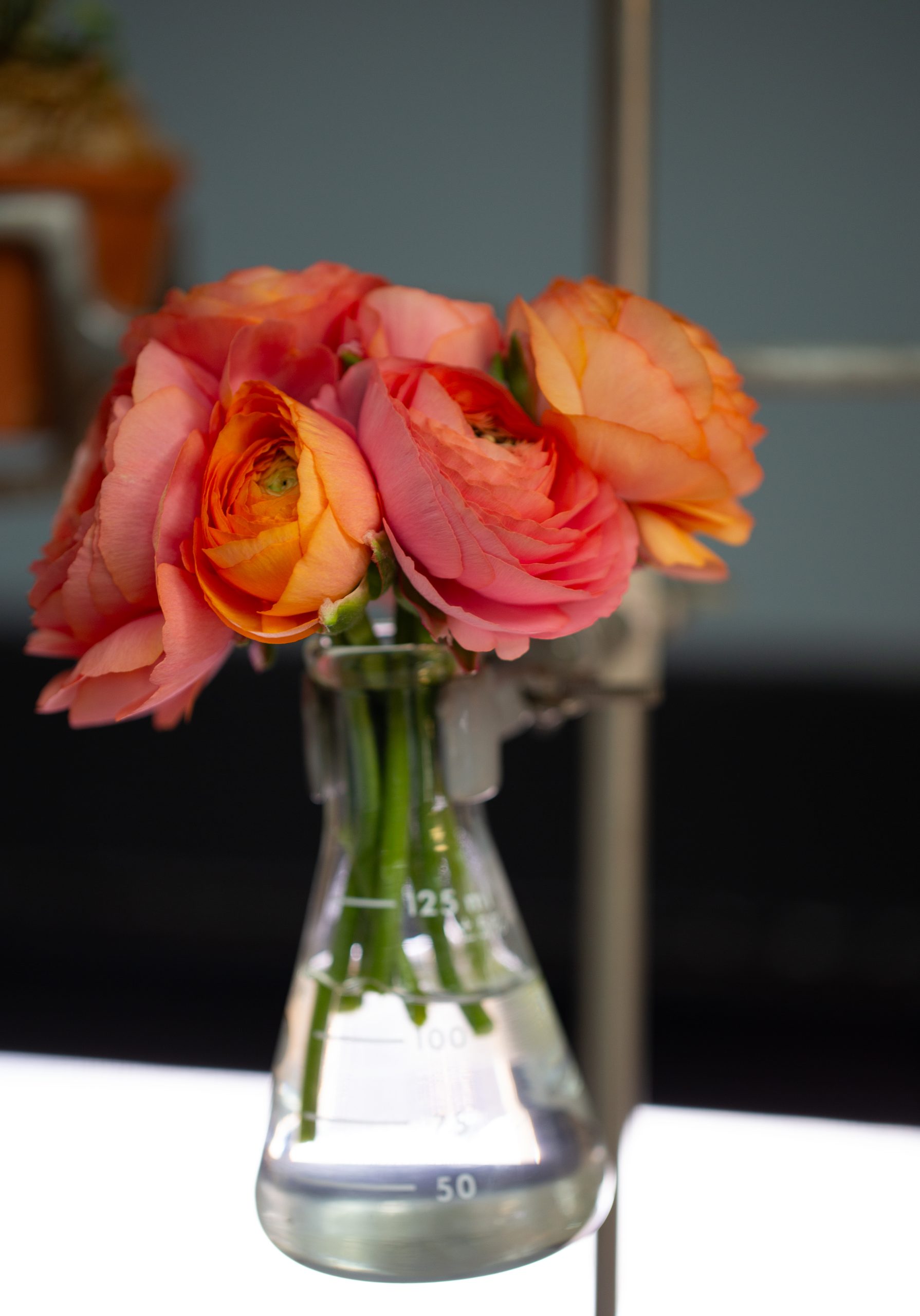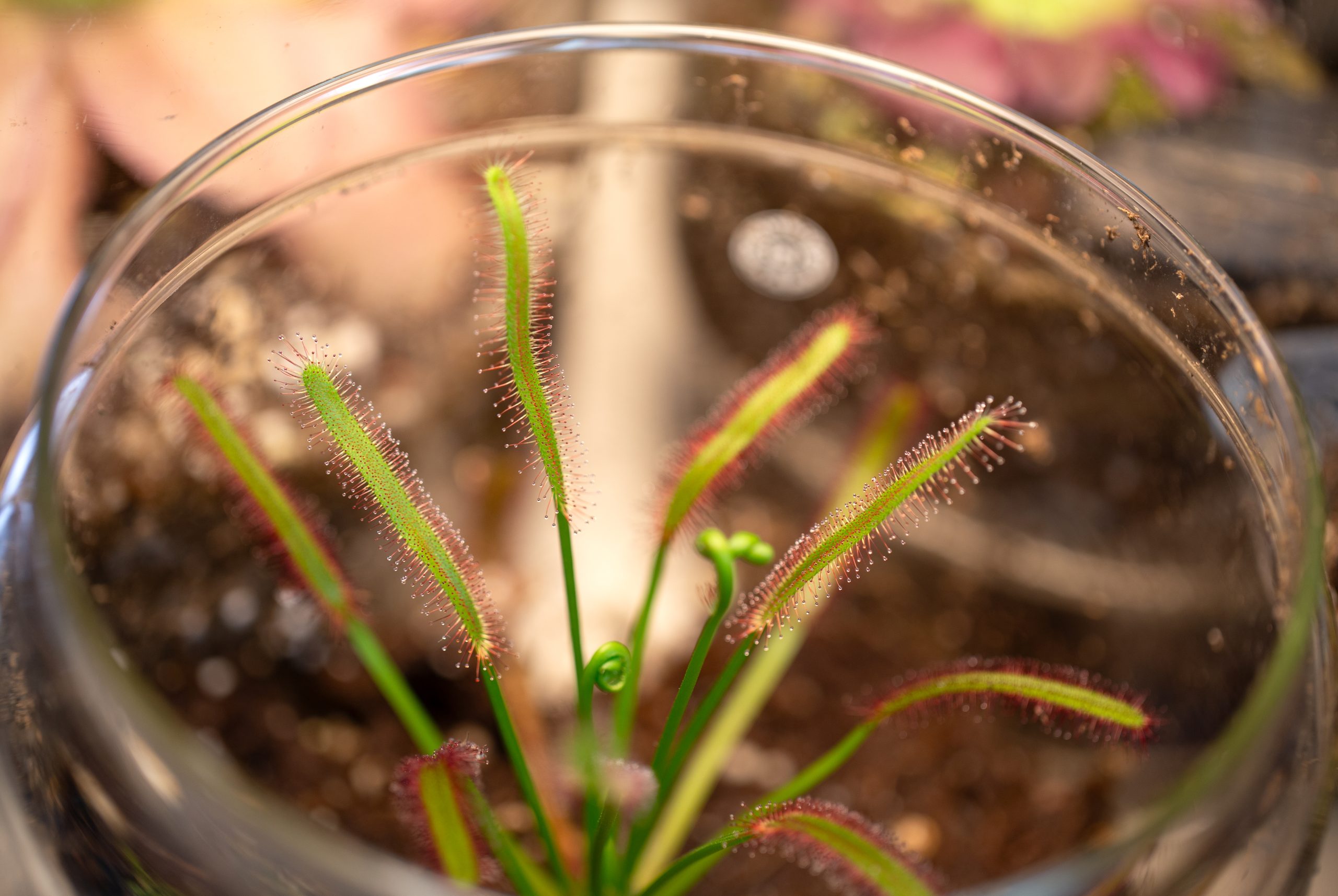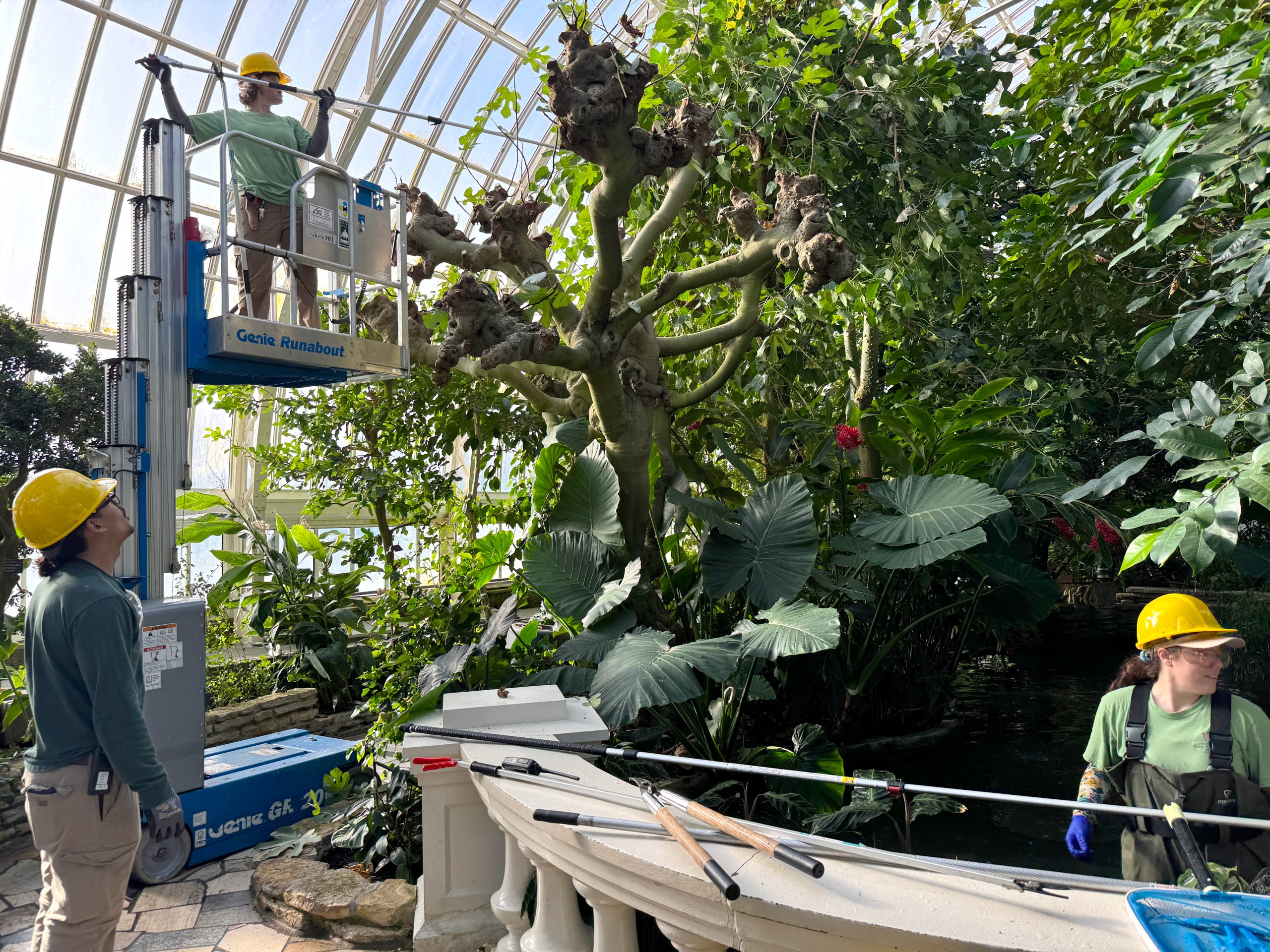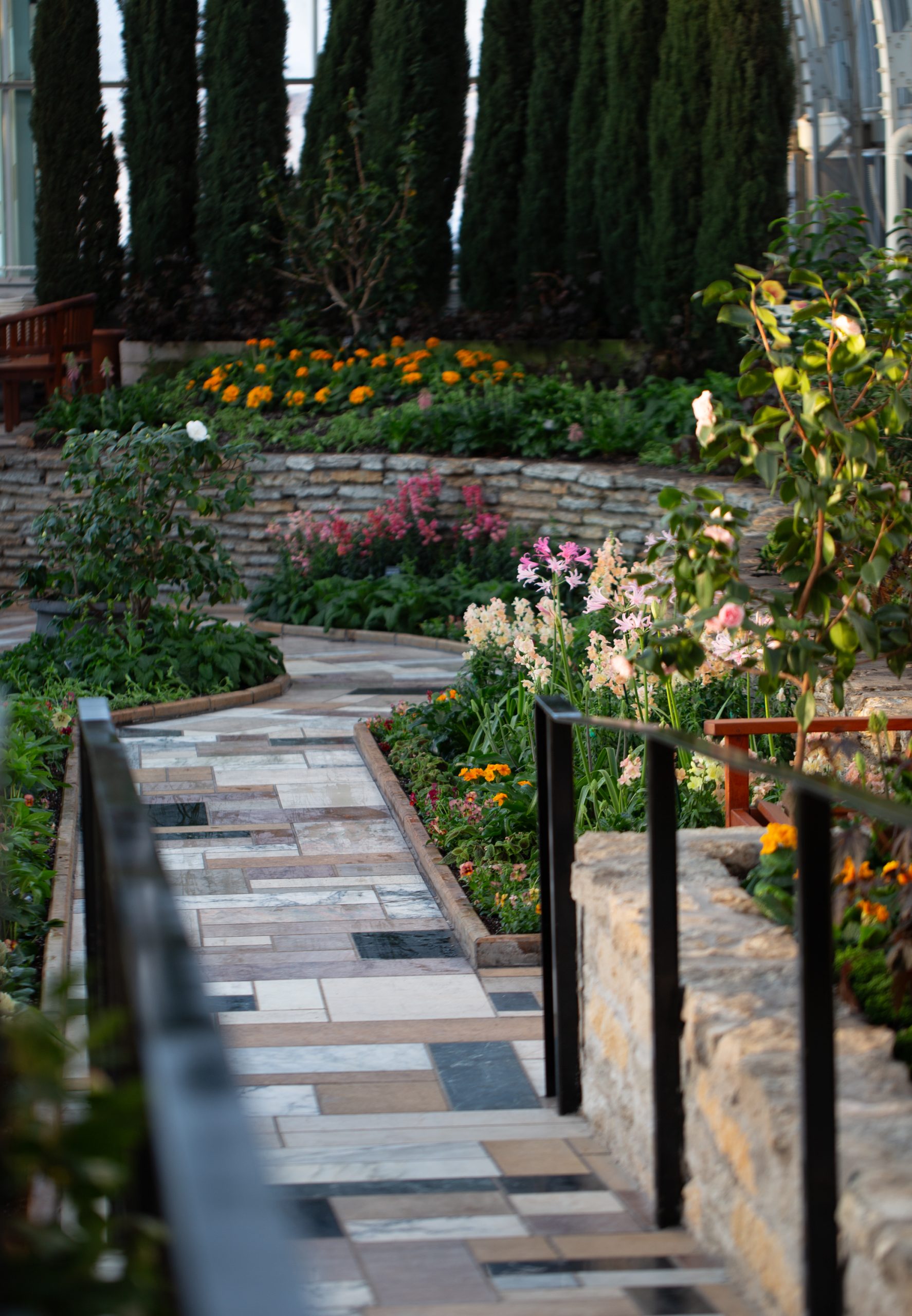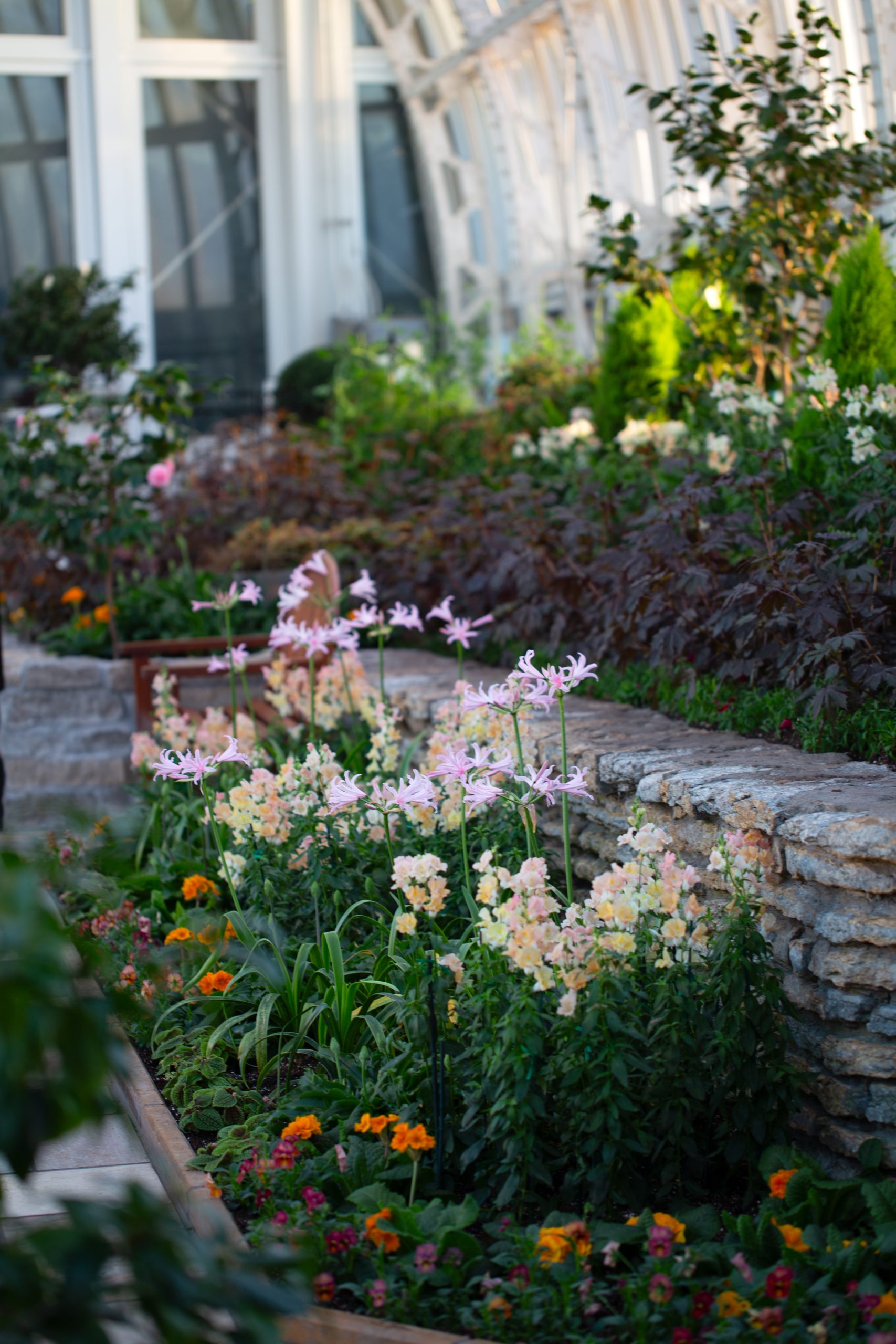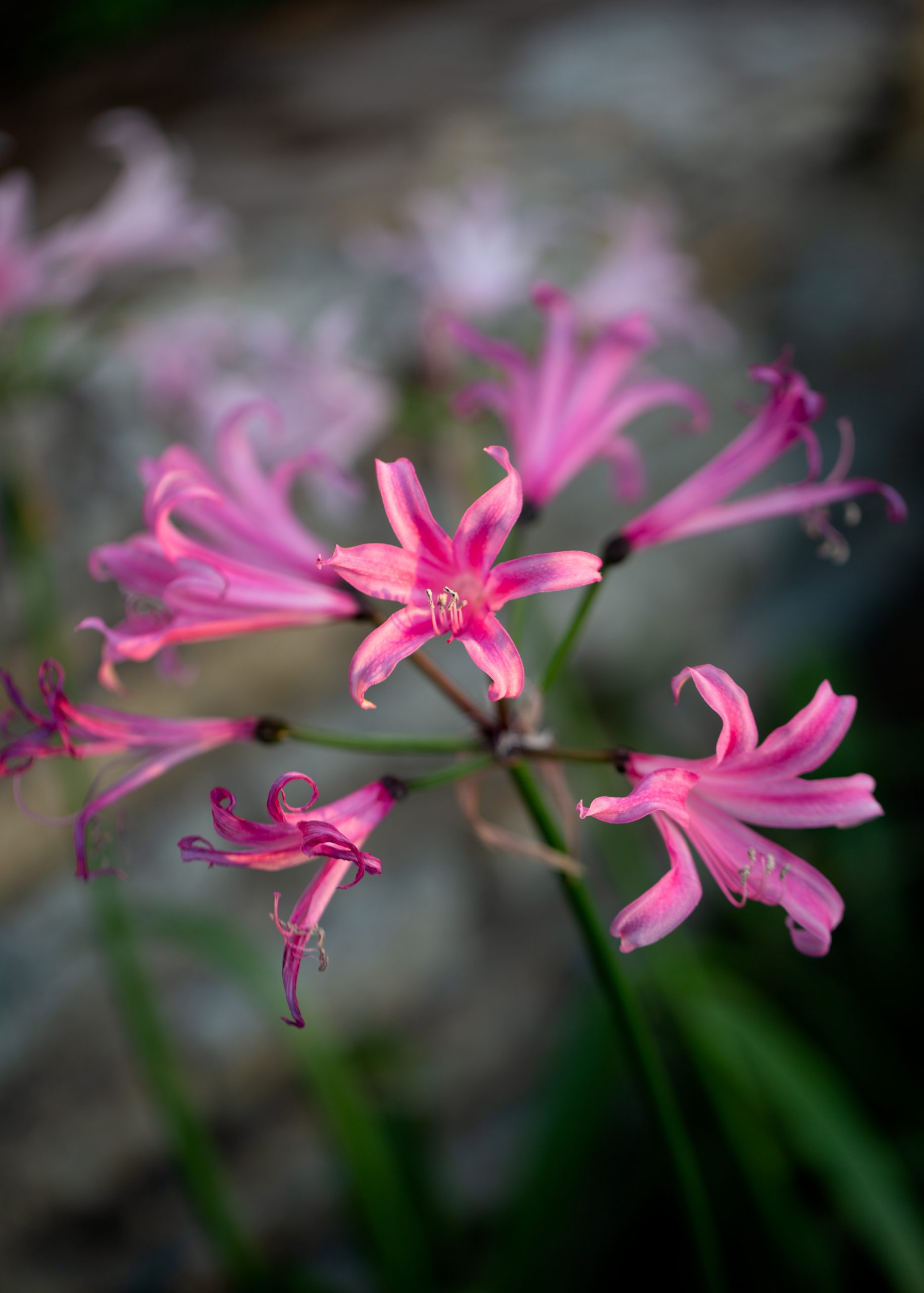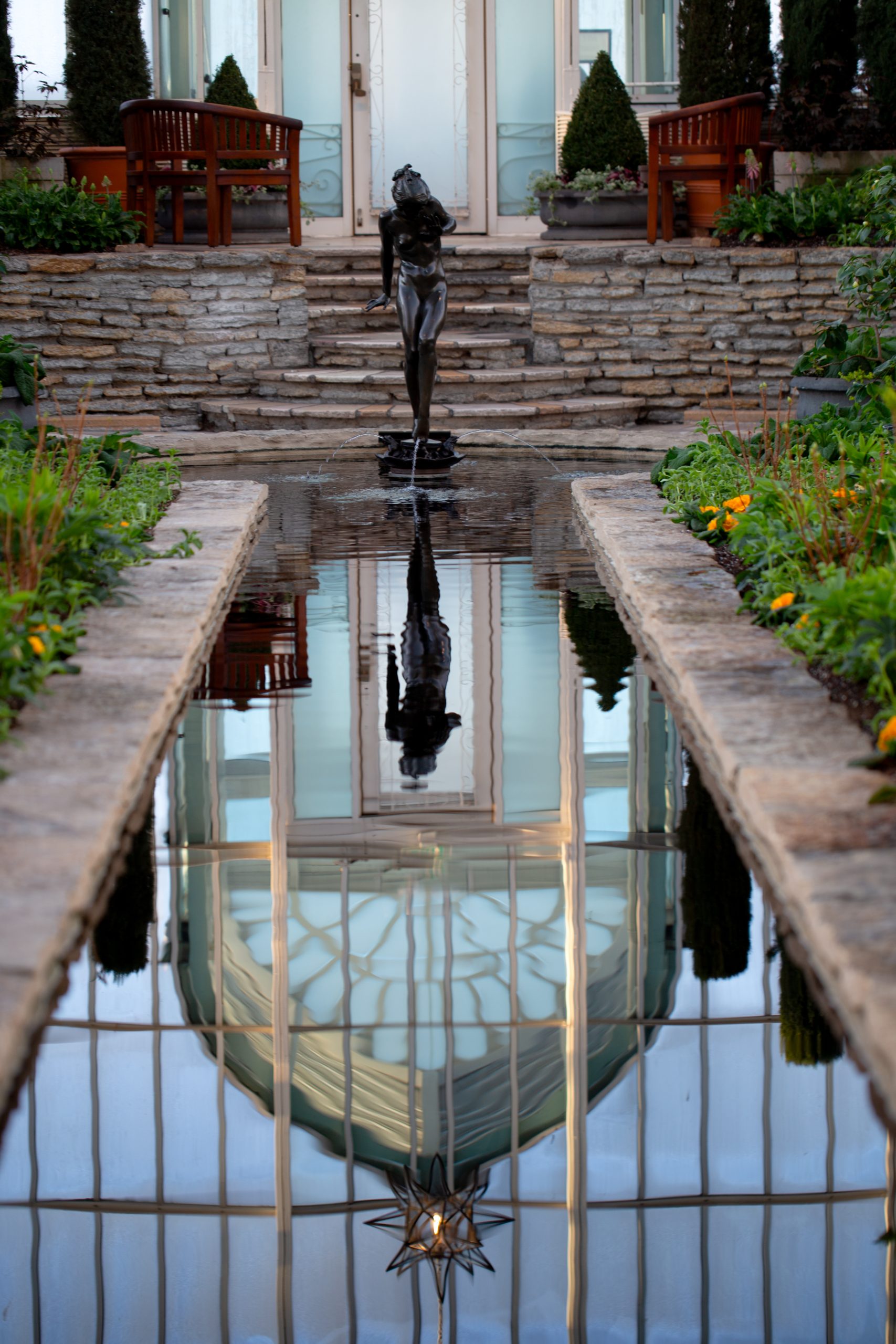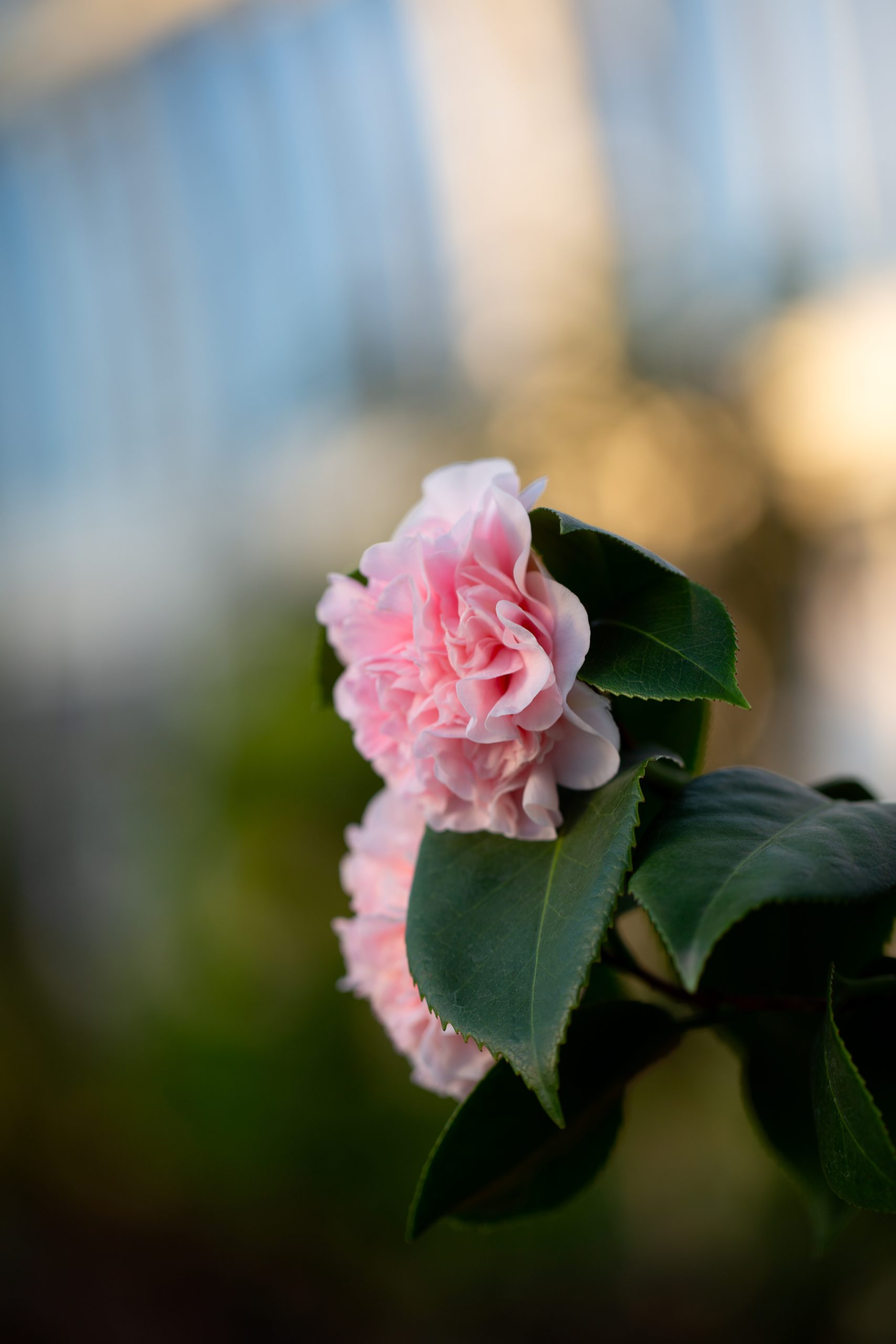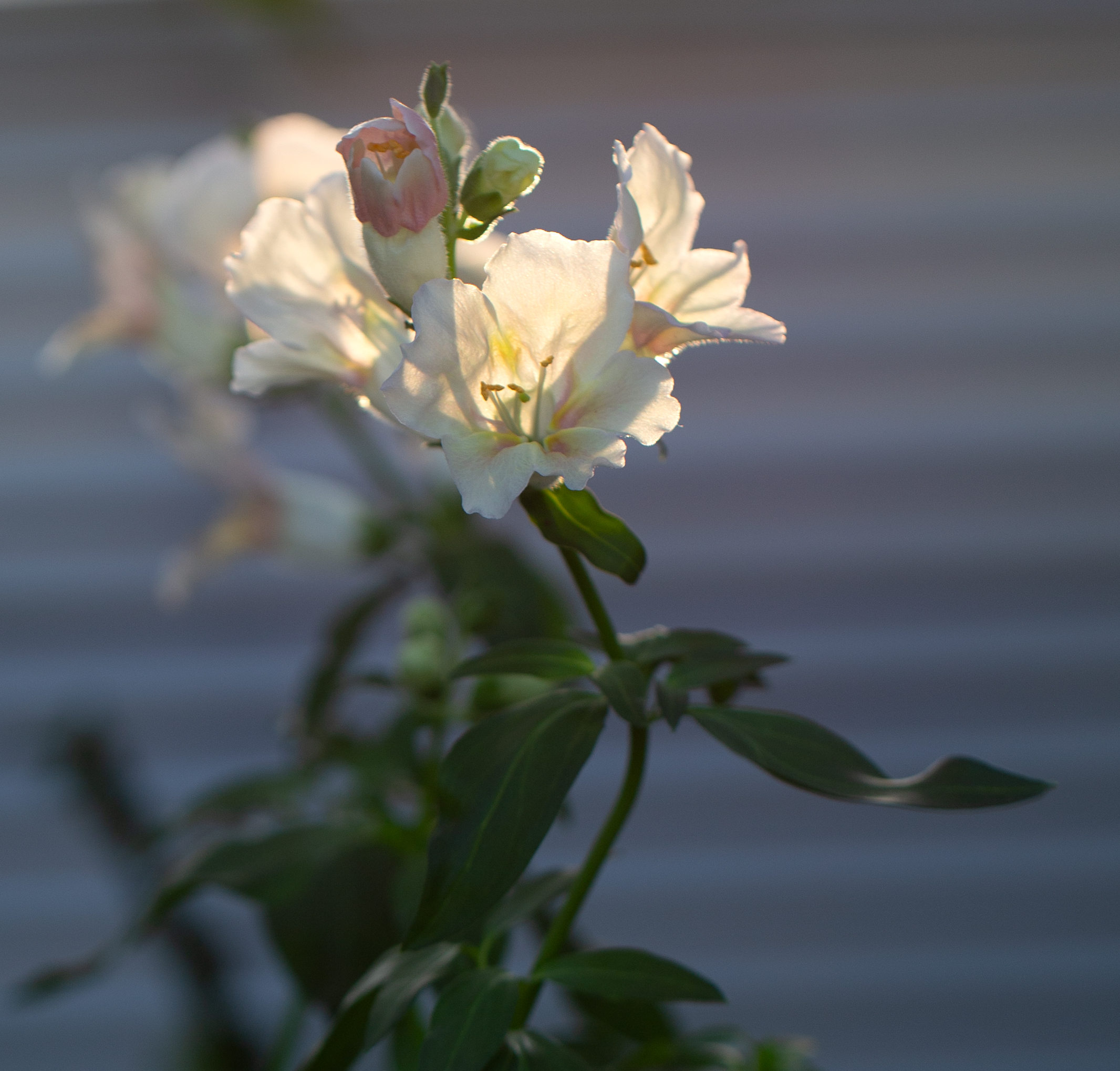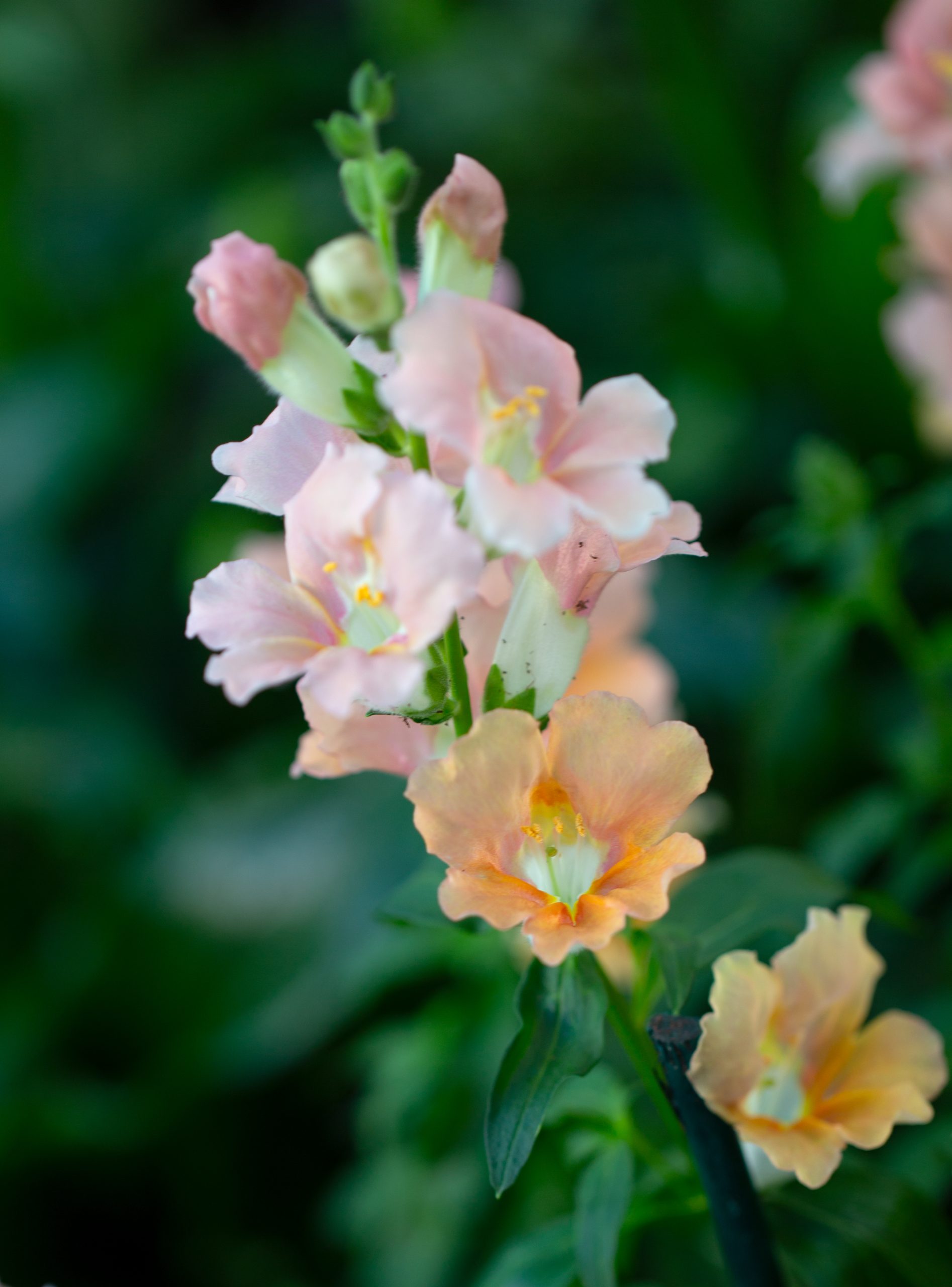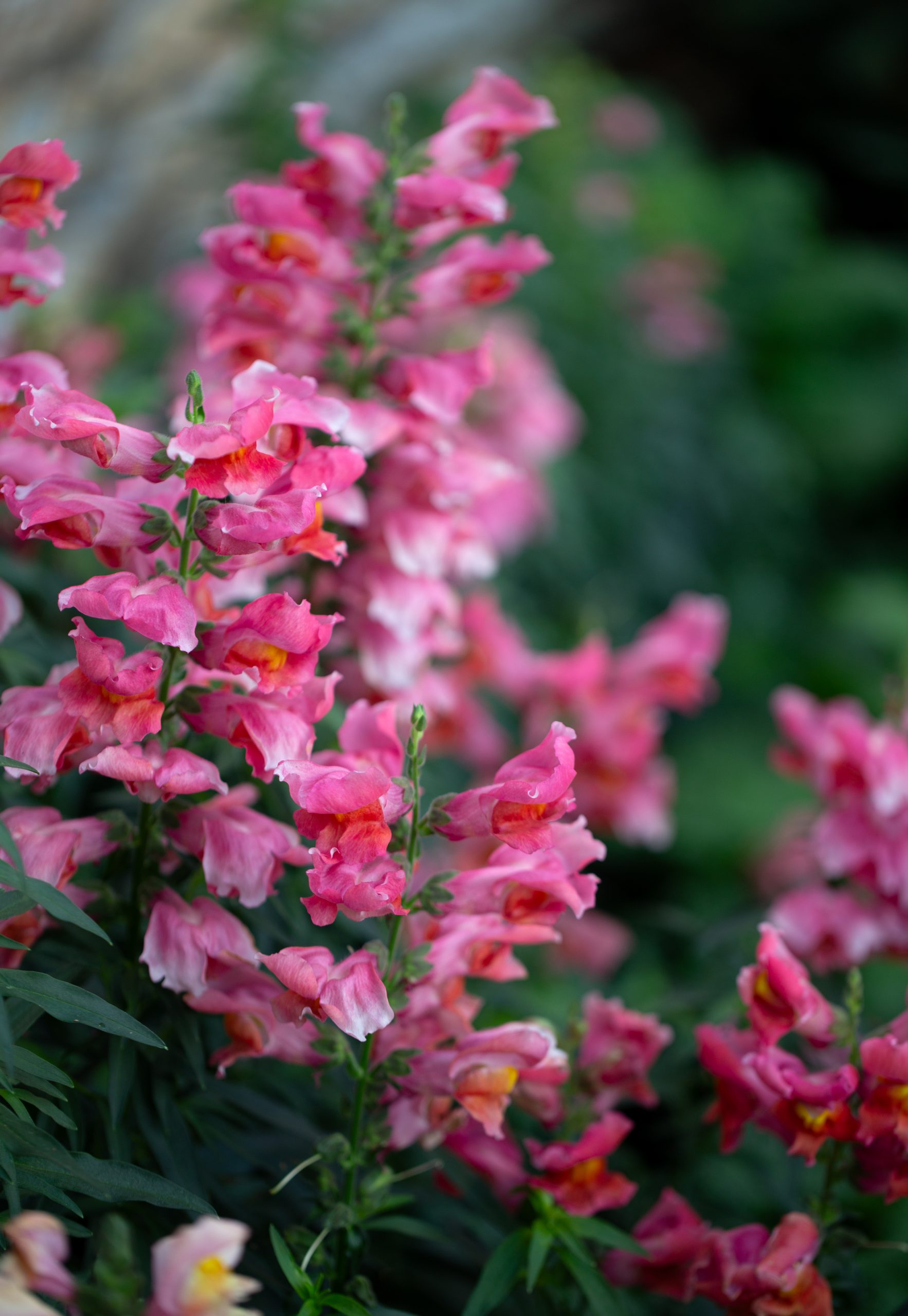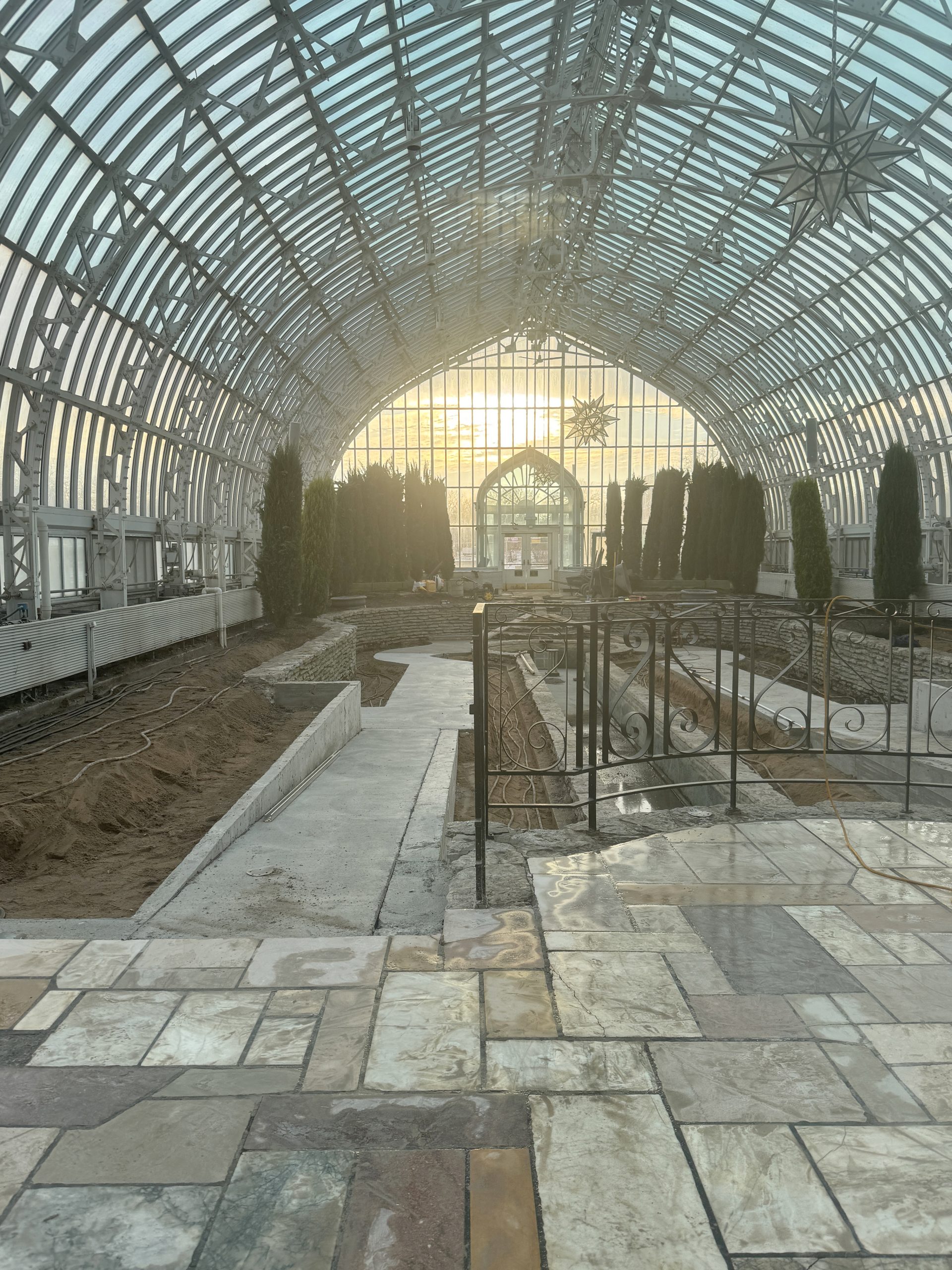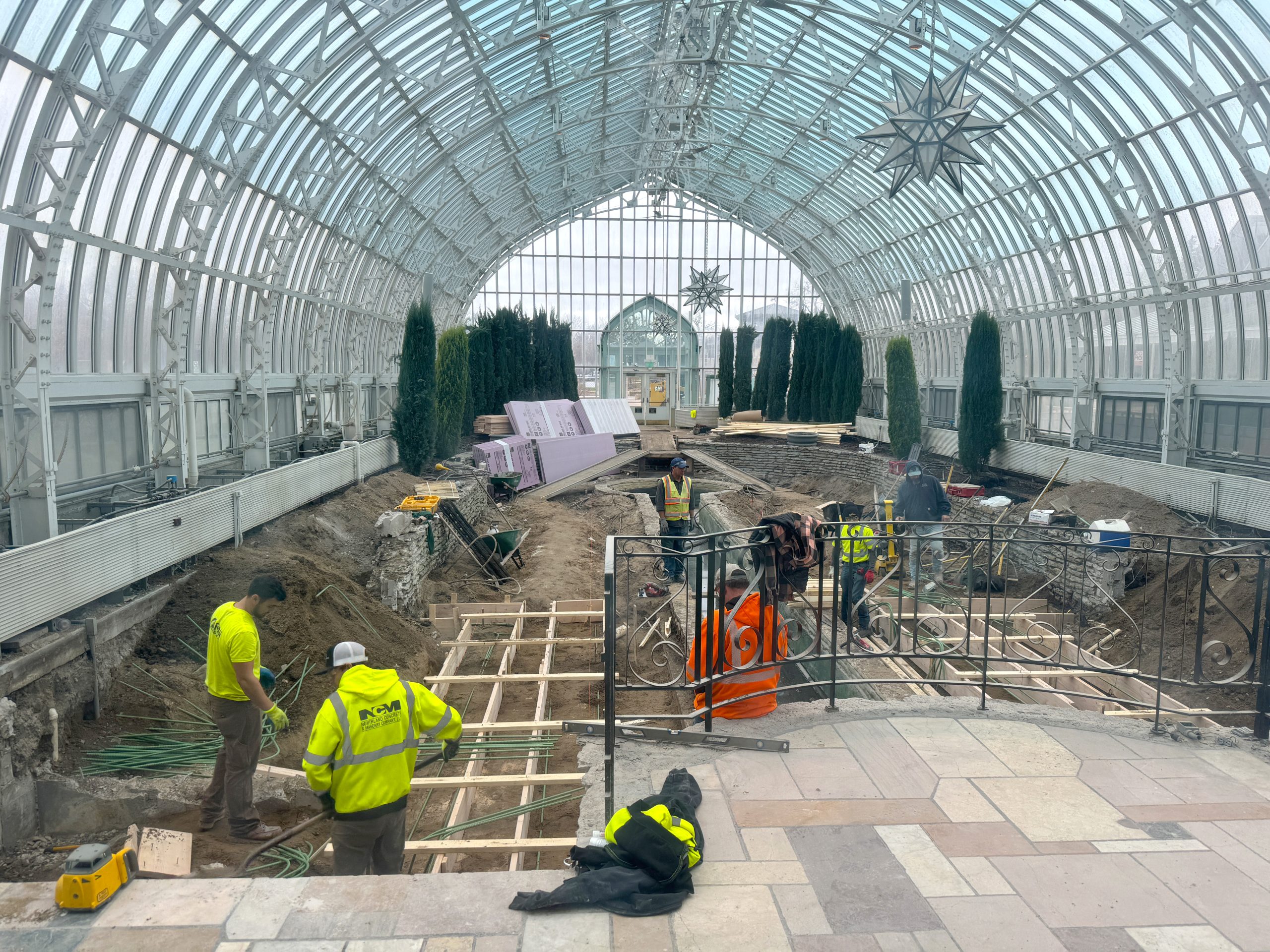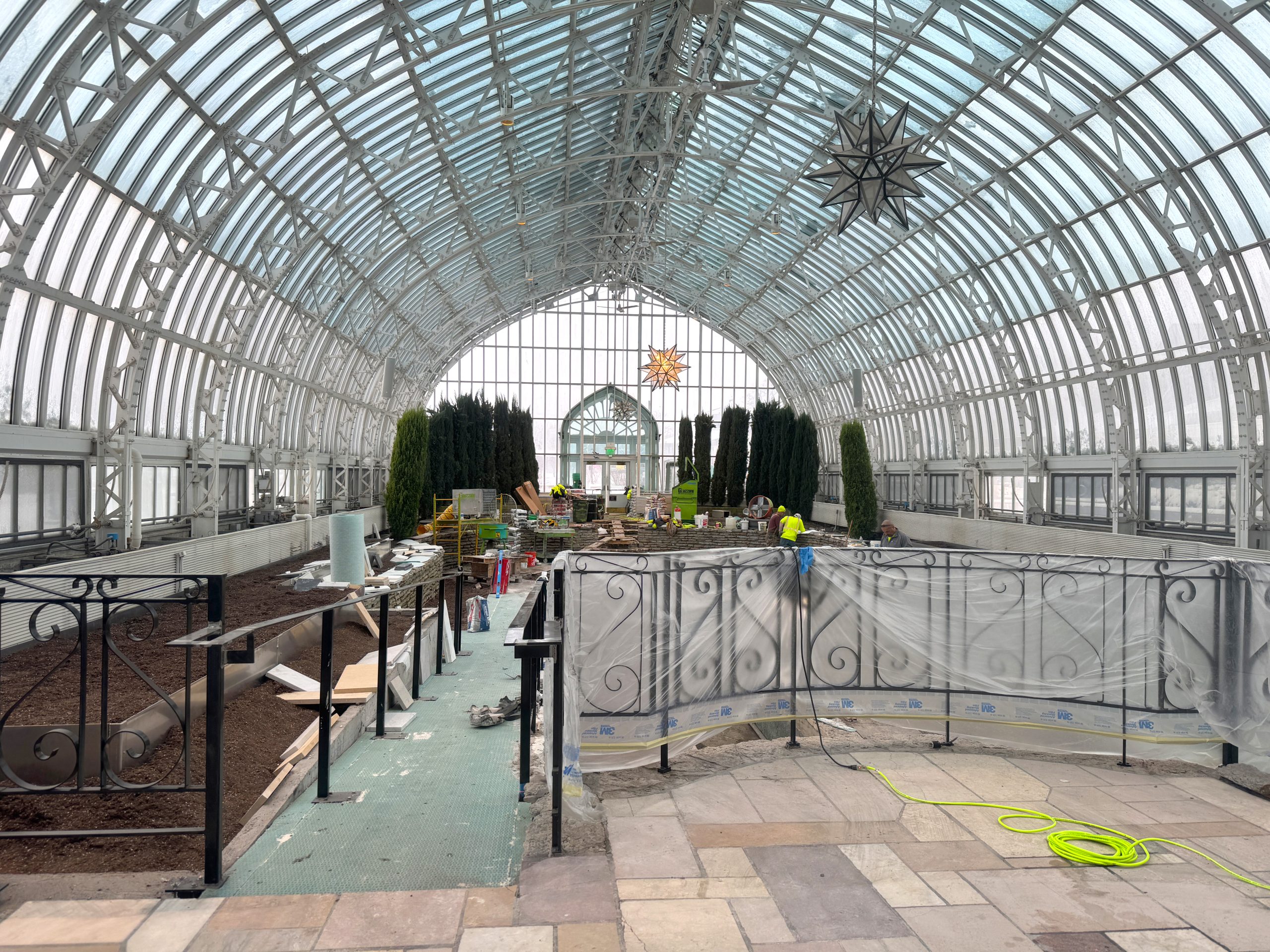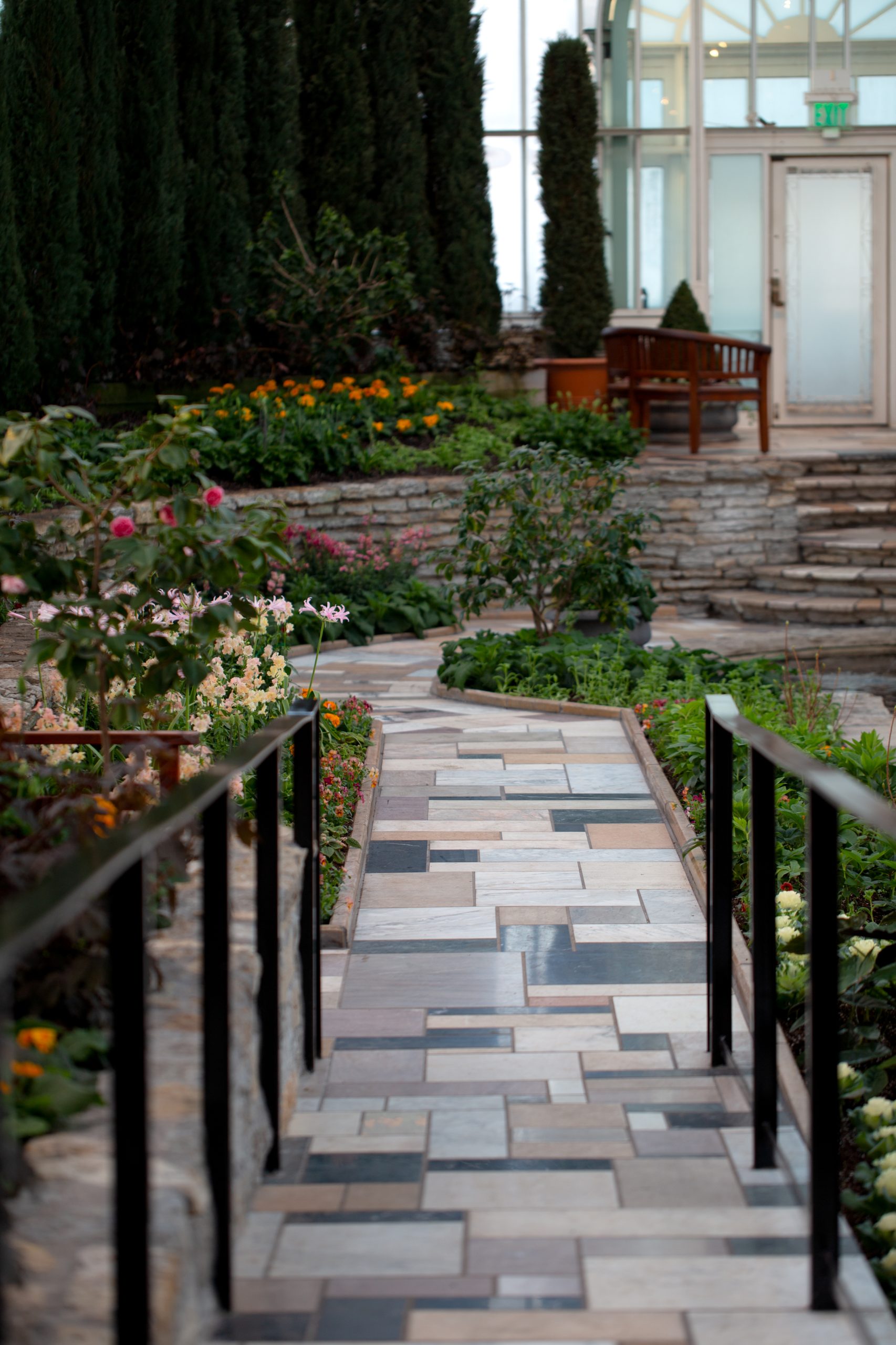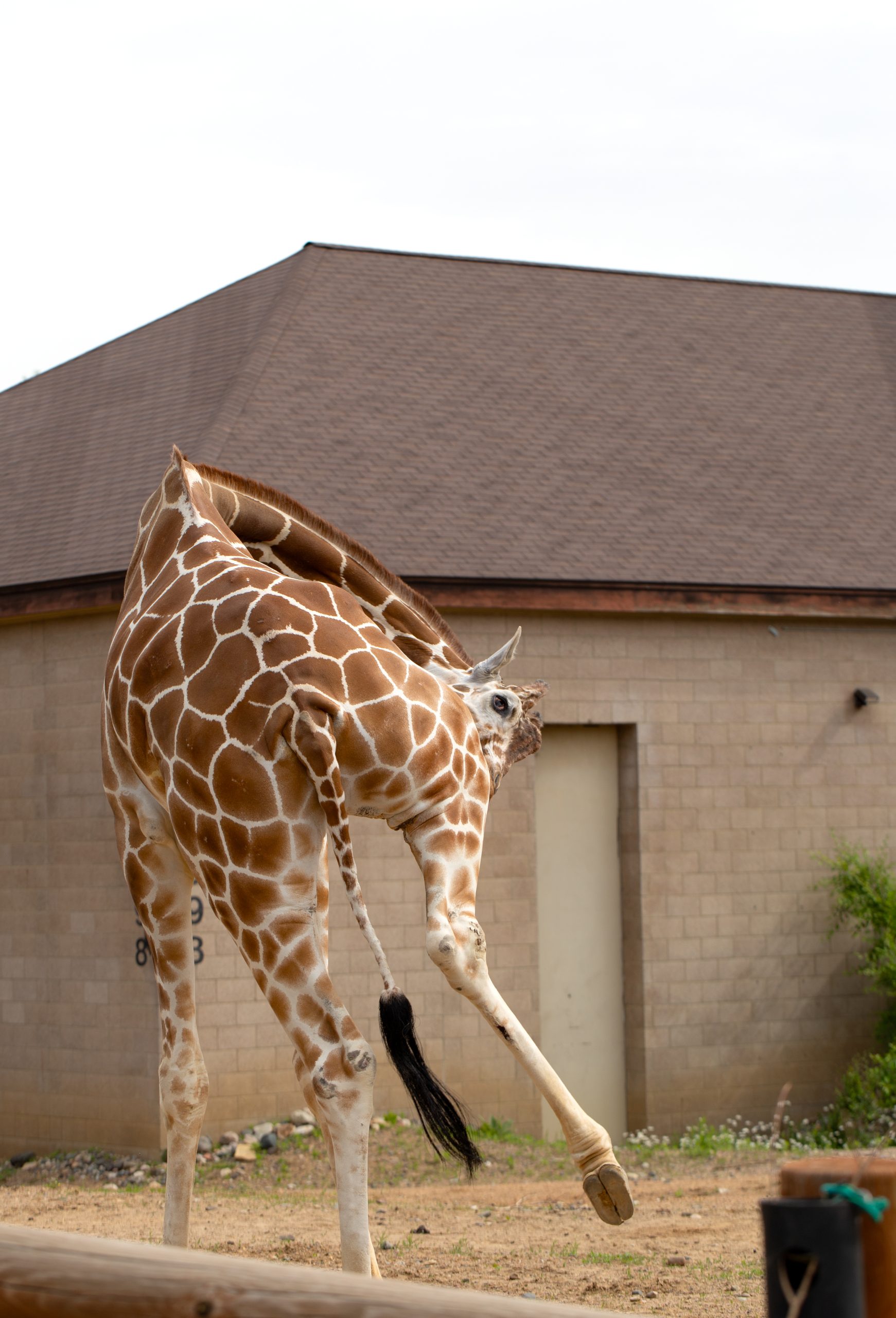
What’s the best time of day to come to Como? With more than a dozen free daily programs offered throughout the summer, the answer is all the time, and again and again. As summer heats up, make the most of every visit to Como with this roster of family-friendly programs and special events, all free to every visitor.
-
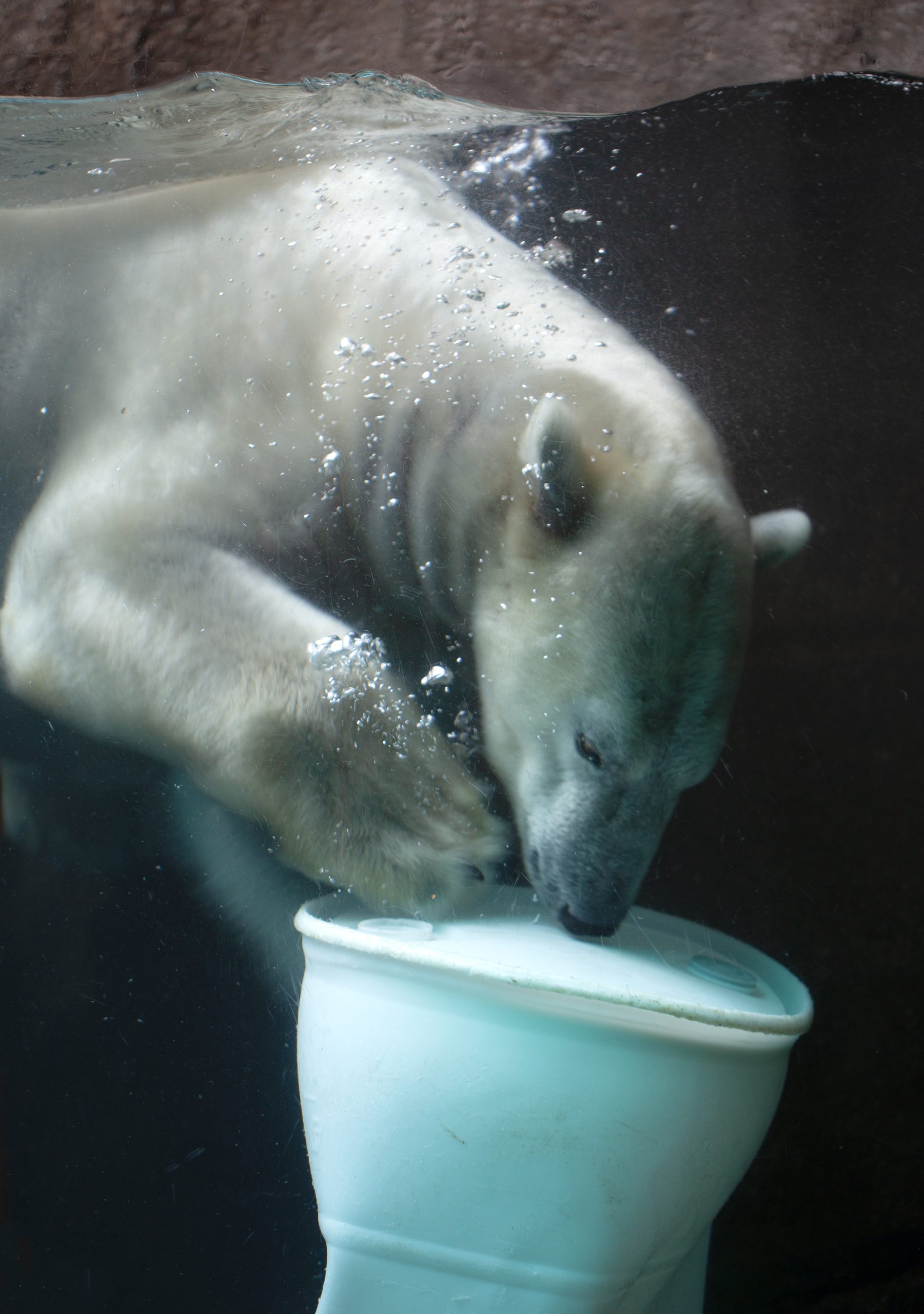
Polar Bear Program | 10:30 a.m.
Stop by Polar Bear Odyssey to see how Nan, Neil, and Kulu connect with their trainers every day, splashing down in the pools, and sniffing out special enrichments in their habitat.
-
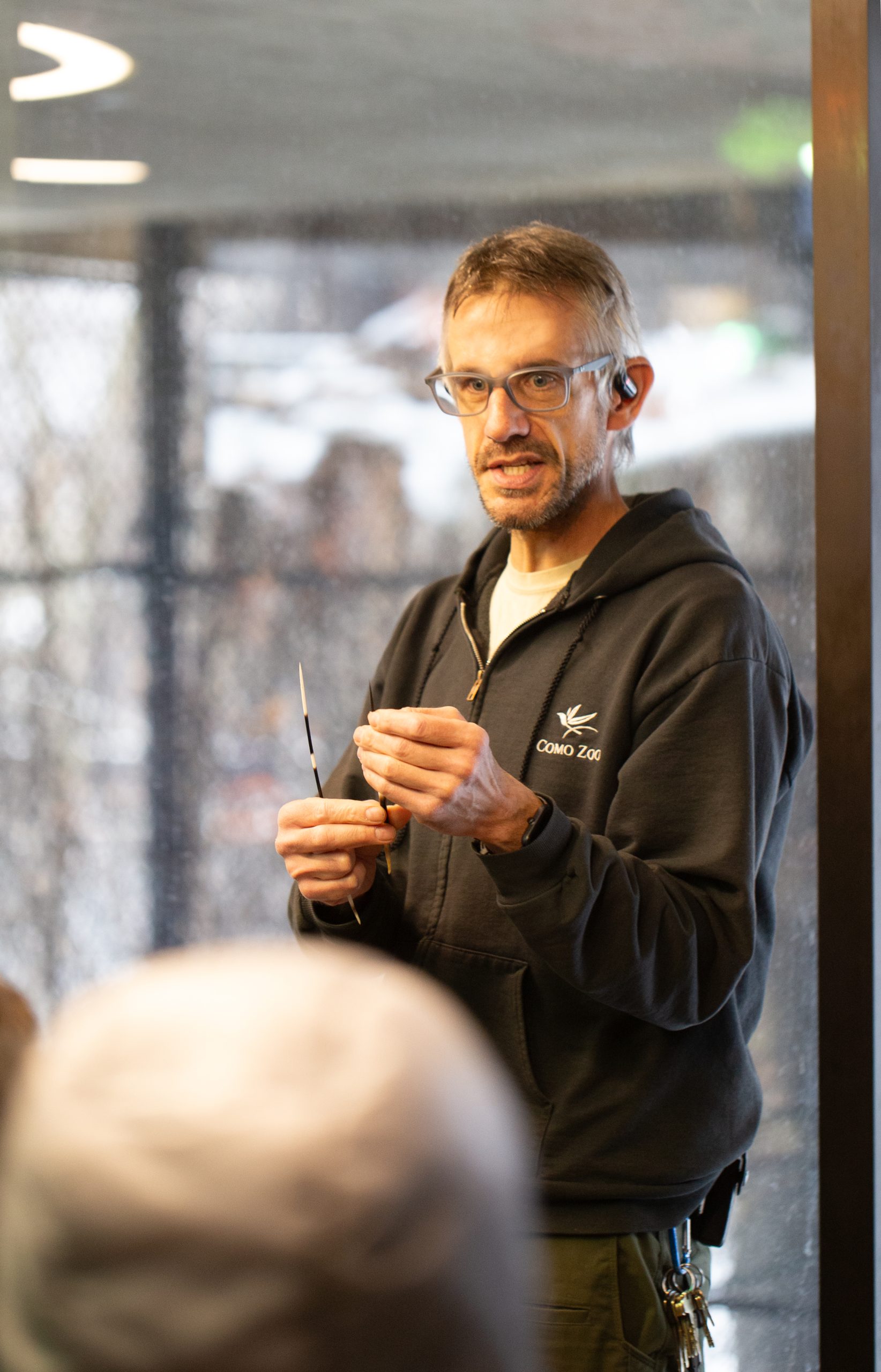
Zookeeper Talk | 11:00 a.m.
What’s it like to take care of the world’s most amazing animals? Ask one of Como’s zookeepers, who take turns sharing their behind-the-scenes insights about dozens of different animals at this daily event. Listen to Como’s public address announcements to find out where the day’s talk is taking place.
-

Blaze Sparky Show | 11:30 a.m. & 2:30 p.m.
A splashy Como tradition since 1956, the Blaze Sparky Show now highlights all of the pinnipeds that call Como Harbor home.
-
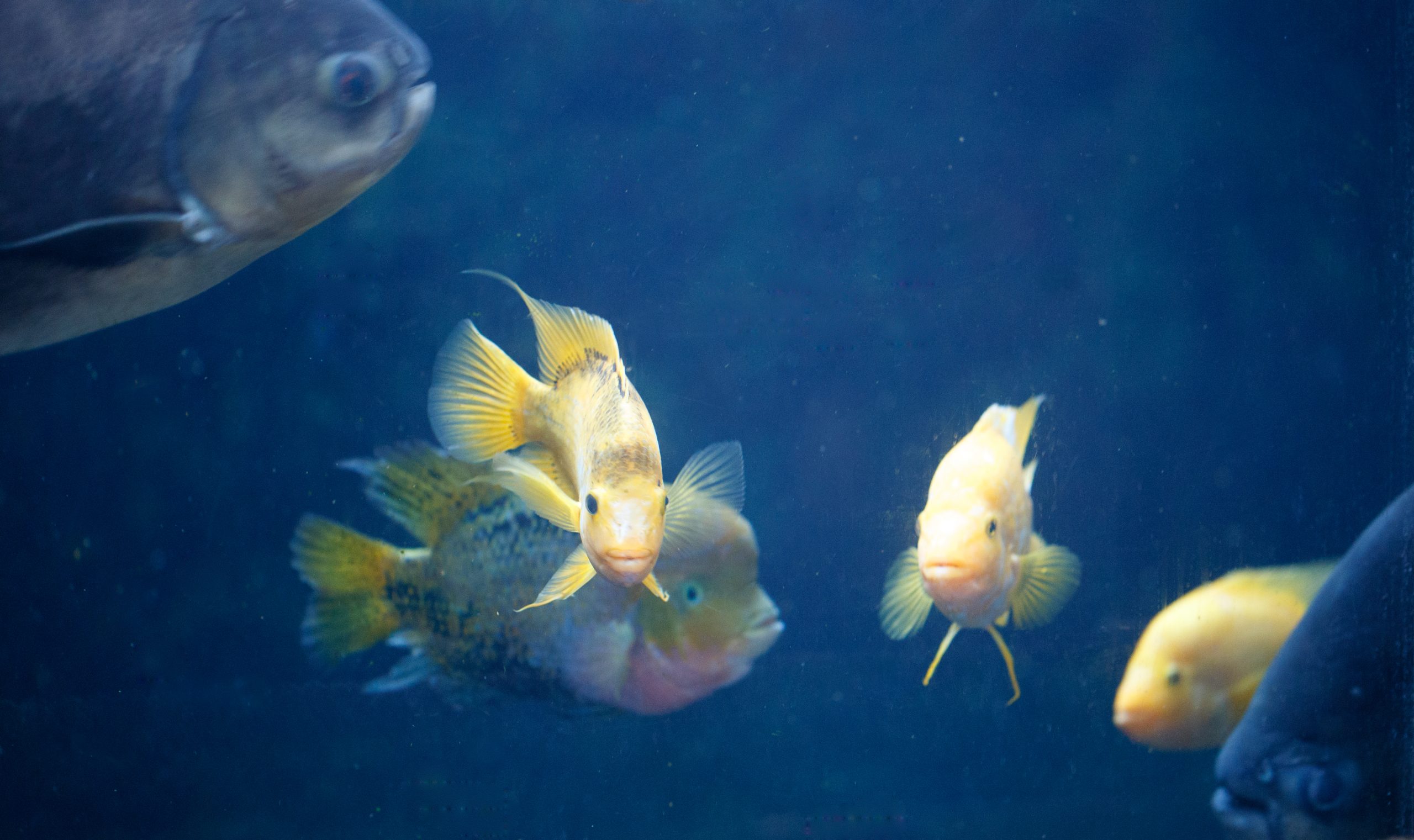
Fish Feeding in Tropical Encounters | Noon
Dive a little deeper into understanding the underwater world with this daily fish-feeding experience presented by Como’s interpretive staff.
-
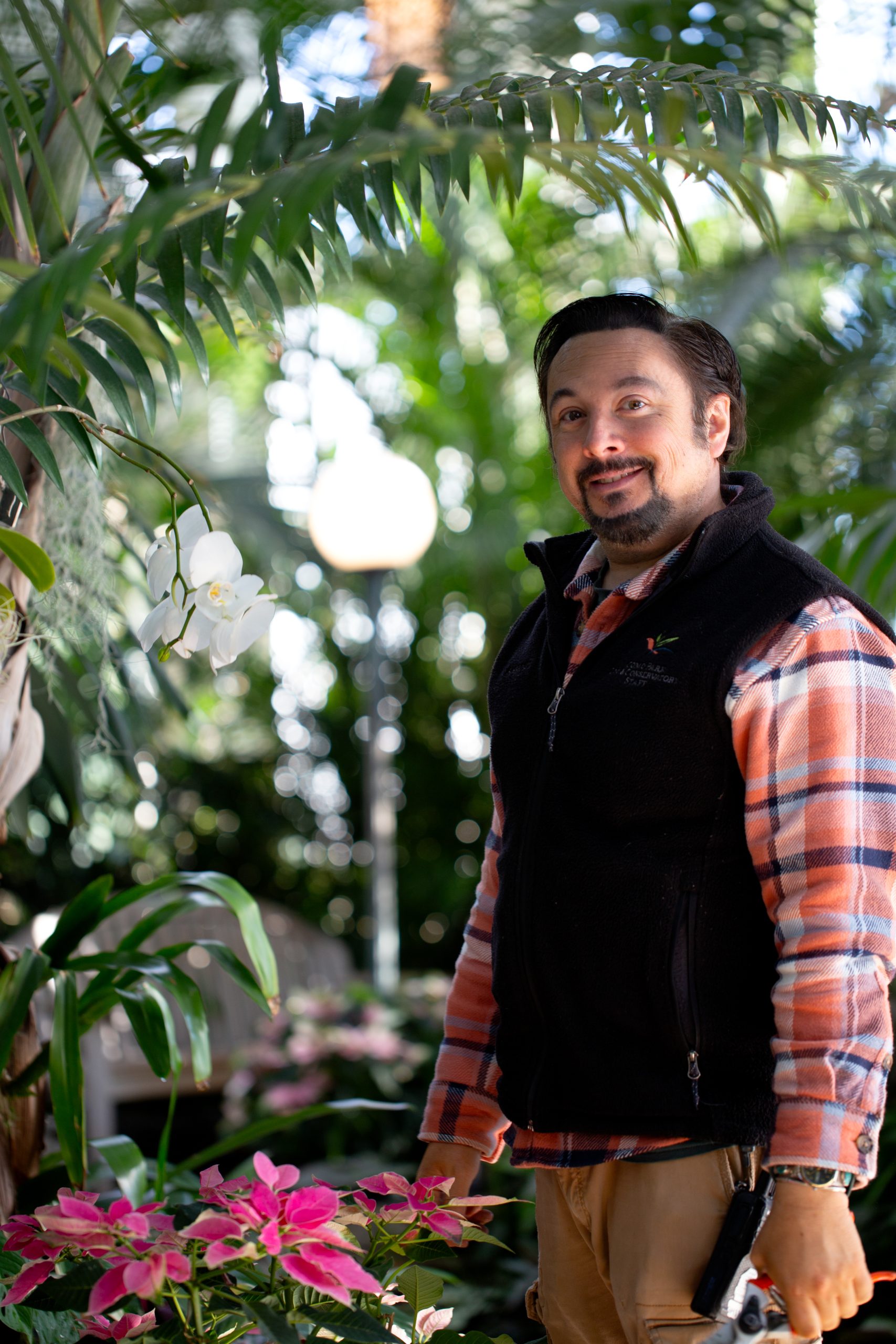
Gardener Chat | 1:00 p.m.
What does it take to keep the Marjorie McNeely Conservatory growing? Find out at this engaging Q and A, featuring a new topic in gardening and plant care every day.
-

Gorilla Program | 1:30 p.m.
Meet the greatest of the apes face-to-face in Gorilla Forest, as primate keepers connect with Como’s western lowland gorillas, while exploring ways that you can help protect their wild cousins.
-
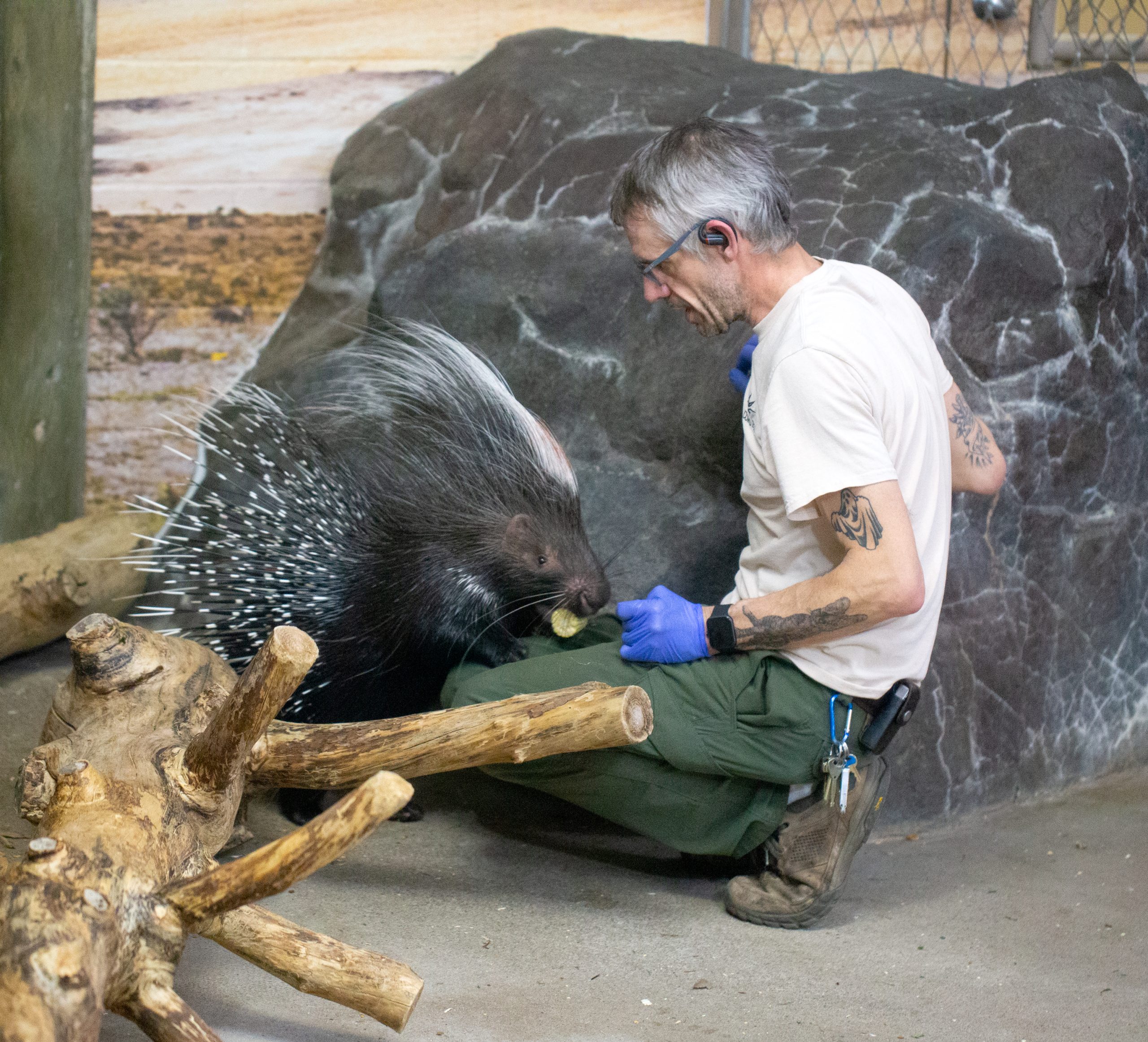
Porcupine Time | 2:00 p.m.
Como Zoo’s prickliest new arrivals, Russet and Copper, are the focus of this mid-day program, where you can learn all about the African crested porcupine.
-
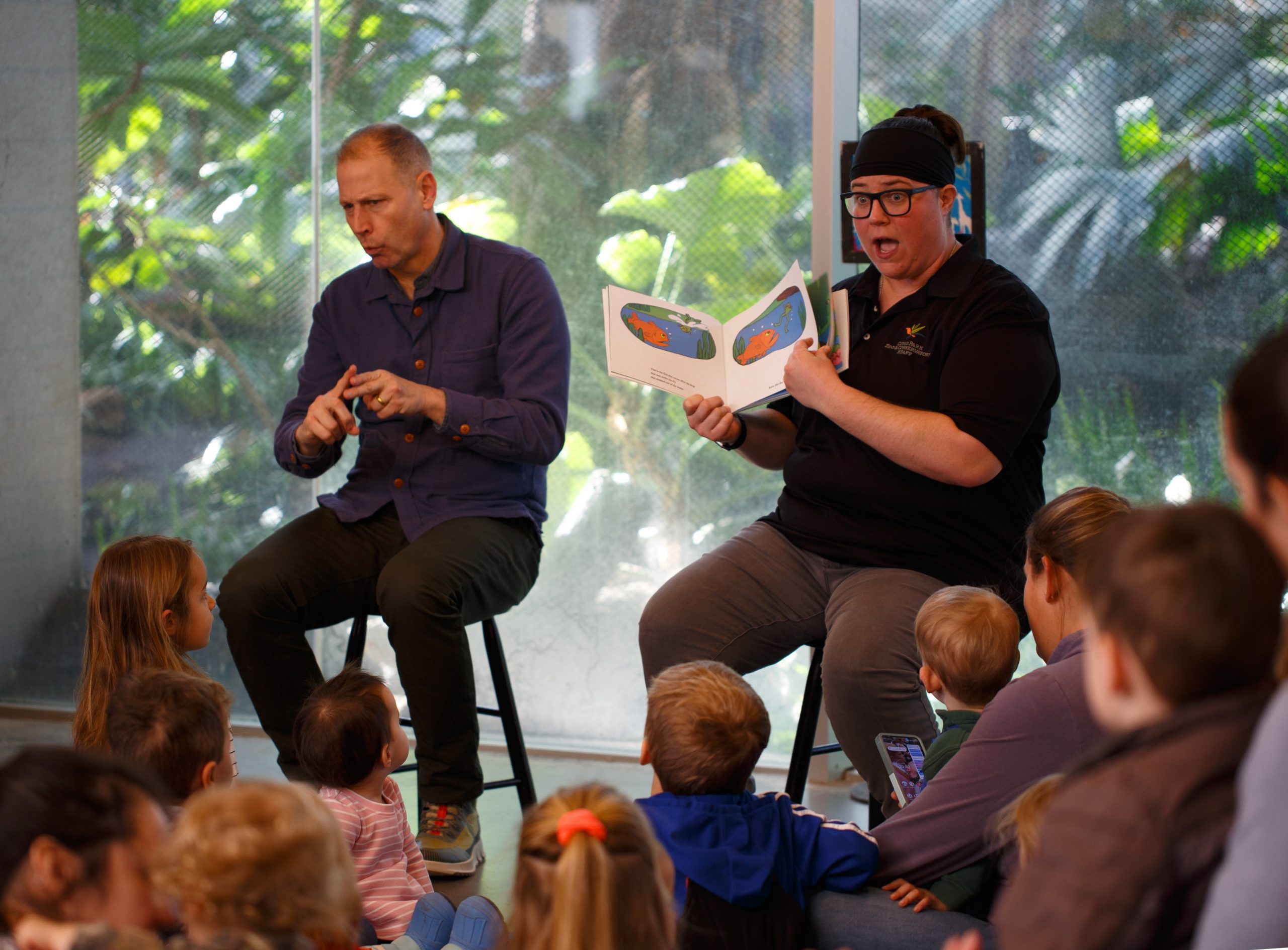
Story Time | 3:00 p.m.
Take a break in Como’s Visitor Center to listen to a nature-themed story perfect for preschoolers and other young learners.
-
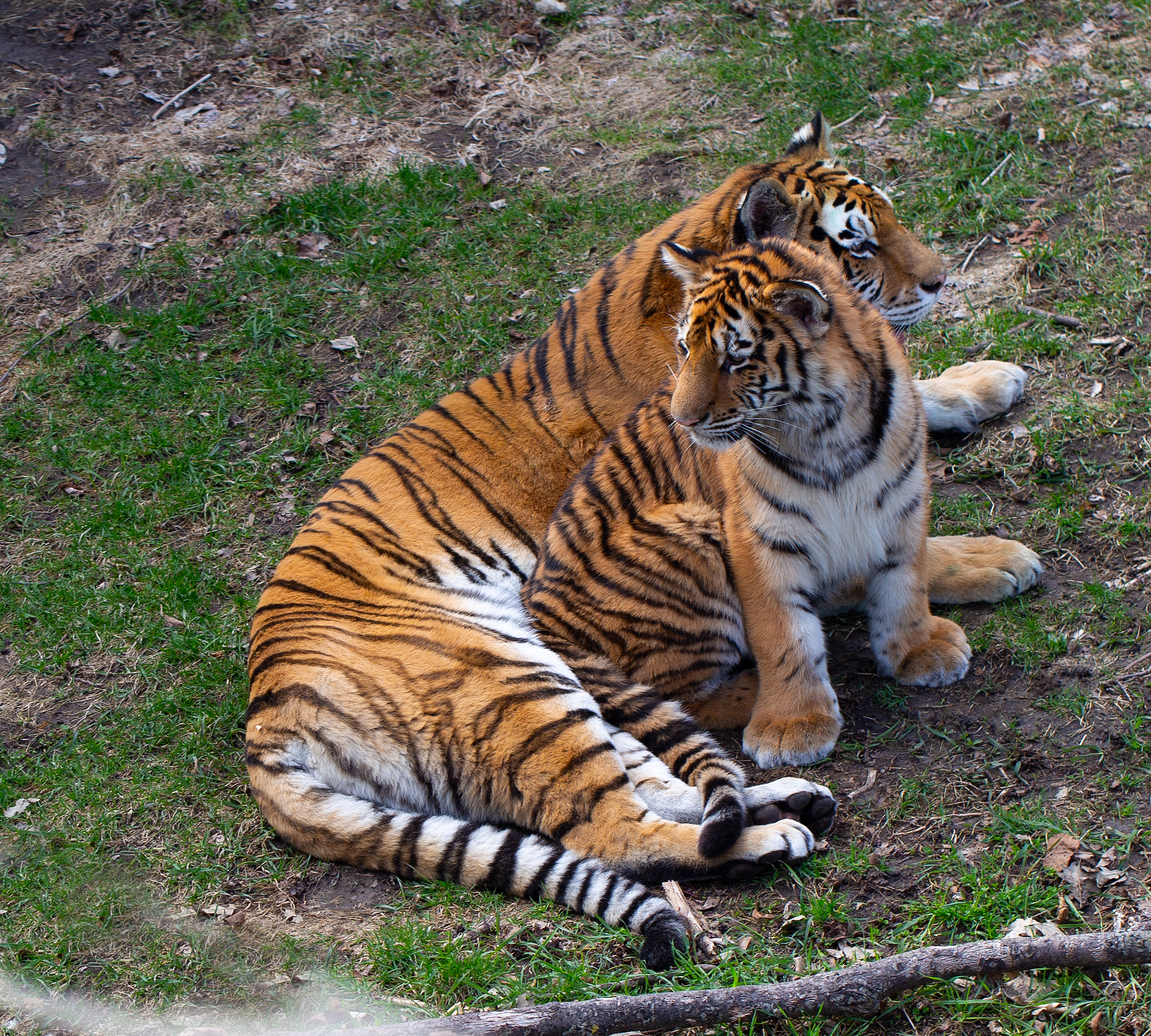
Tiger Talk | 3:30 p.m.
Tiger mom Bernadette and her twin cubs Maks and Marisa are the focus for this daily conversation, all about the care and feeding of Como’s large cats.
-
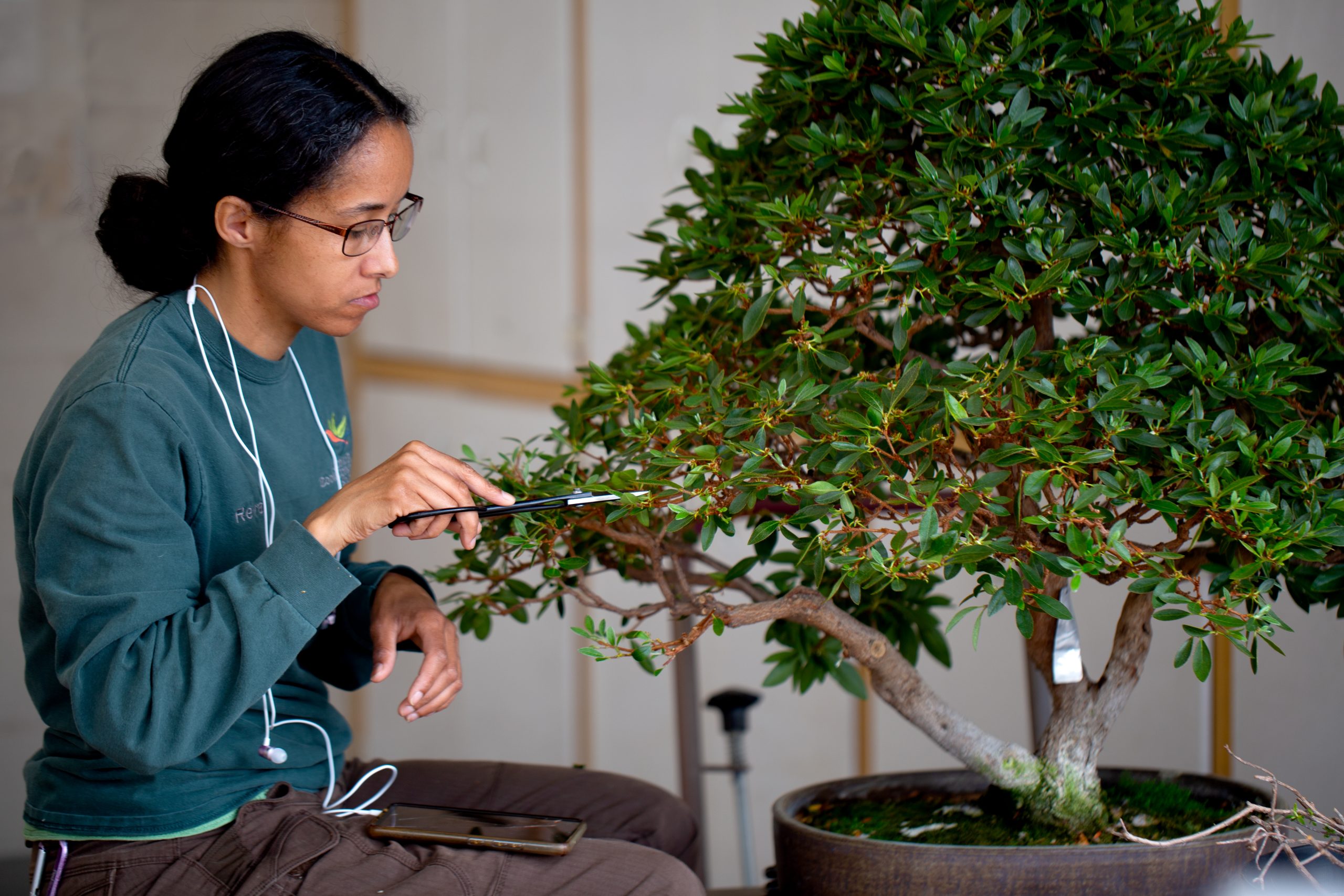
The Art of Bonsai | 4:00 p.m.
With one of the best collections of bonsai for public display in the Midwest, this daily program gives visitors the chance to learn more about the amazing trees in Como’s collection, and the history and philosophy of this ancient art form.
Special Programs
-
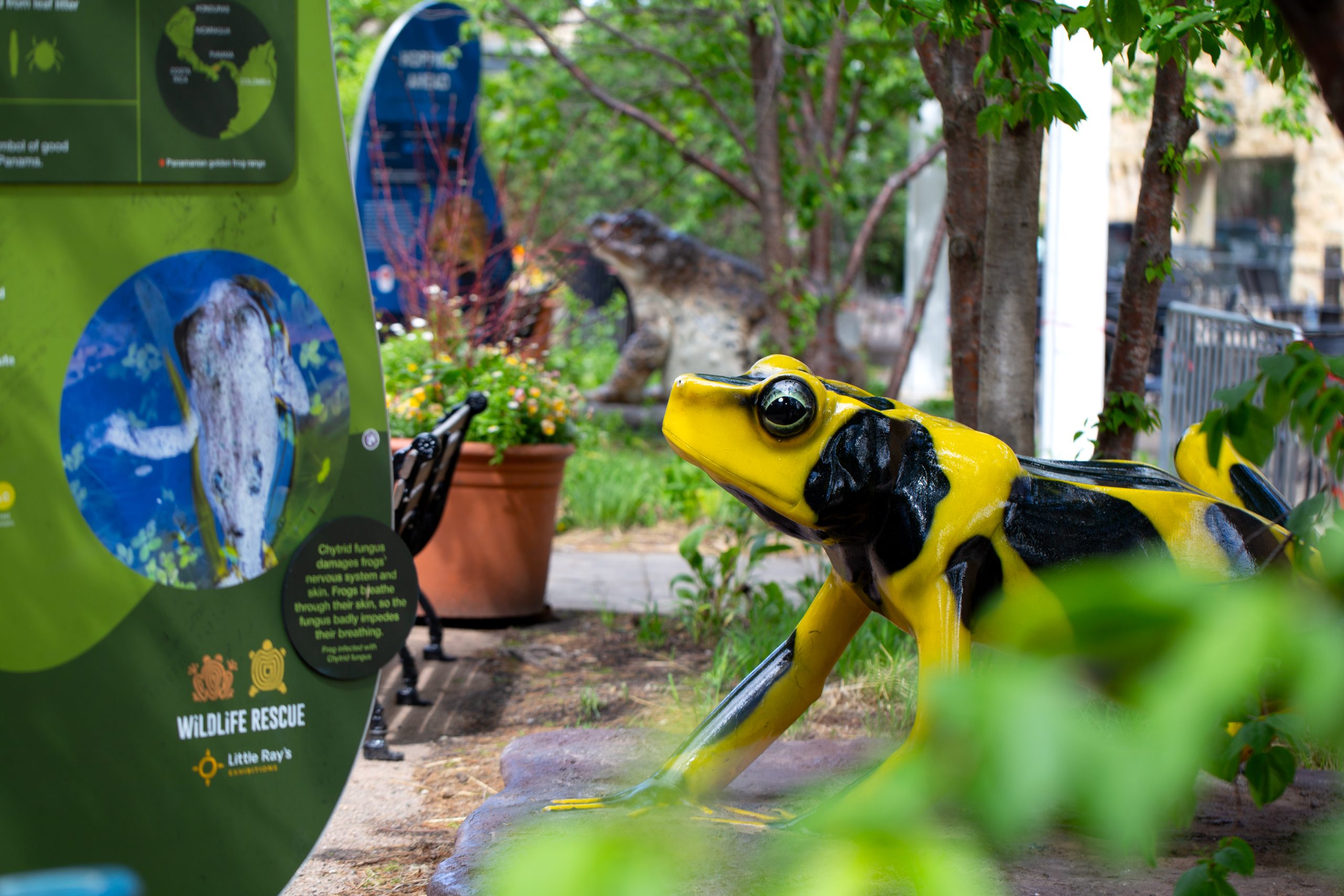
Wildlife Rescue: Tales of Conservation
Como’s latest free seasonal exhibit features 12 totally climbable animal sculptures from the black rhino to the Burmese star tortoise, highlighting endangered species that are now thriving in the wild thanks to committed acts of conservation.
-

Groovin’ in the Garden | Wednesdays from 6:00 p.m. to 8:00 p.m.
Put on your dancing shoes and pack a picnic for the Twin Cities’ favorite free summer concert series. Set against the beautiful backdrop of the Marjorie McNeely Conservatory, this outdoor concert series is fun for all ages, with favorite local acts, and fun activities for the kids. Mark your calendar for these upcoming events:
June 11 – Innocent Reggae Band – Roots Reggae
June 18 – Maria & The Coins – Singer-Songwriter Driven Pop Hooks
June 25 – Flamin’ Oh’s – Minnesota Music Legends
July 2 – Leslie Rich & The Rocket Soul Choir – 3-piece Rock Band
July 9 – Salsa del Soul – High-Energy Latin Dance Music
July 16 – Jellyjacket – All-Star Minnesota Rock & Roll Band
July 23 – Favourite Girl – Female Powered Rock Band
July 30 – School of Rock – St. Paul & Plymouth House Bands -
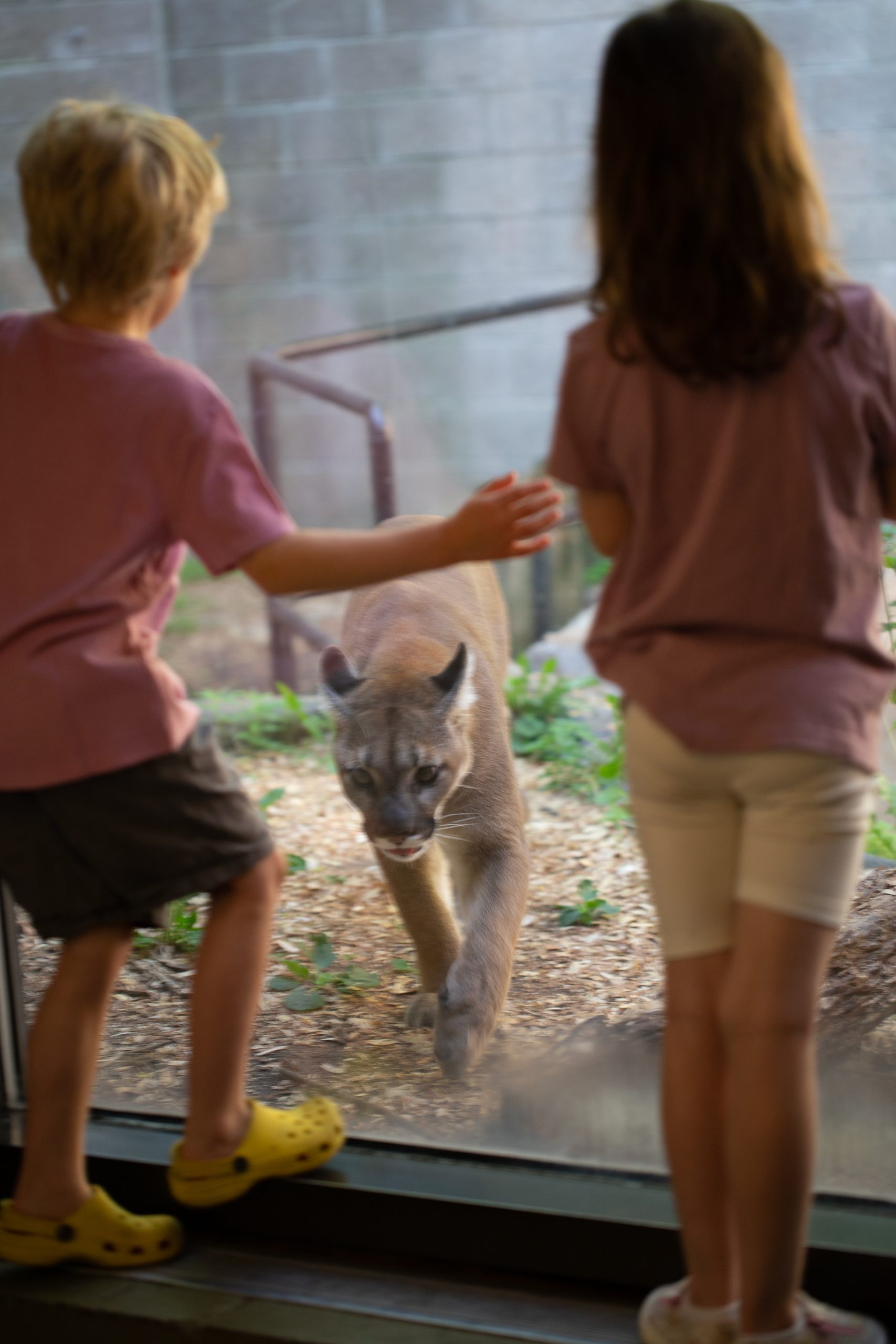
Autism-Friendly Early Entry
See Como Zoo without the crowds from 9 a.m. to 10 a.m. during these early access days:
June 7, June 18, July 12, July 23, August 9, August 20, September 13, September 21
-

Senior Strolls
Take some time to smell the roses during these special entry times, set aside for seniors.
June 10 – 6:30 p.m.–8:00 p.m.
June 17 – 9:00 a.m.–10:00 a.m.
July 8 – 6:30 p.m.–8:00 p.m.
July 22 – 9:00 a.m.–10:00 a.m.
August 5 – 6:30 p.m.–8:00 p.m.
August 19 – 9:00 a.m.–10:00 a.m.
September 9 – 6:30 p.m.–8:00 p.m.
Conservation Champion Andrea Persson traveled to Sausalito’s Marine Mammal Center to learn the secrets of seal and sea lion care
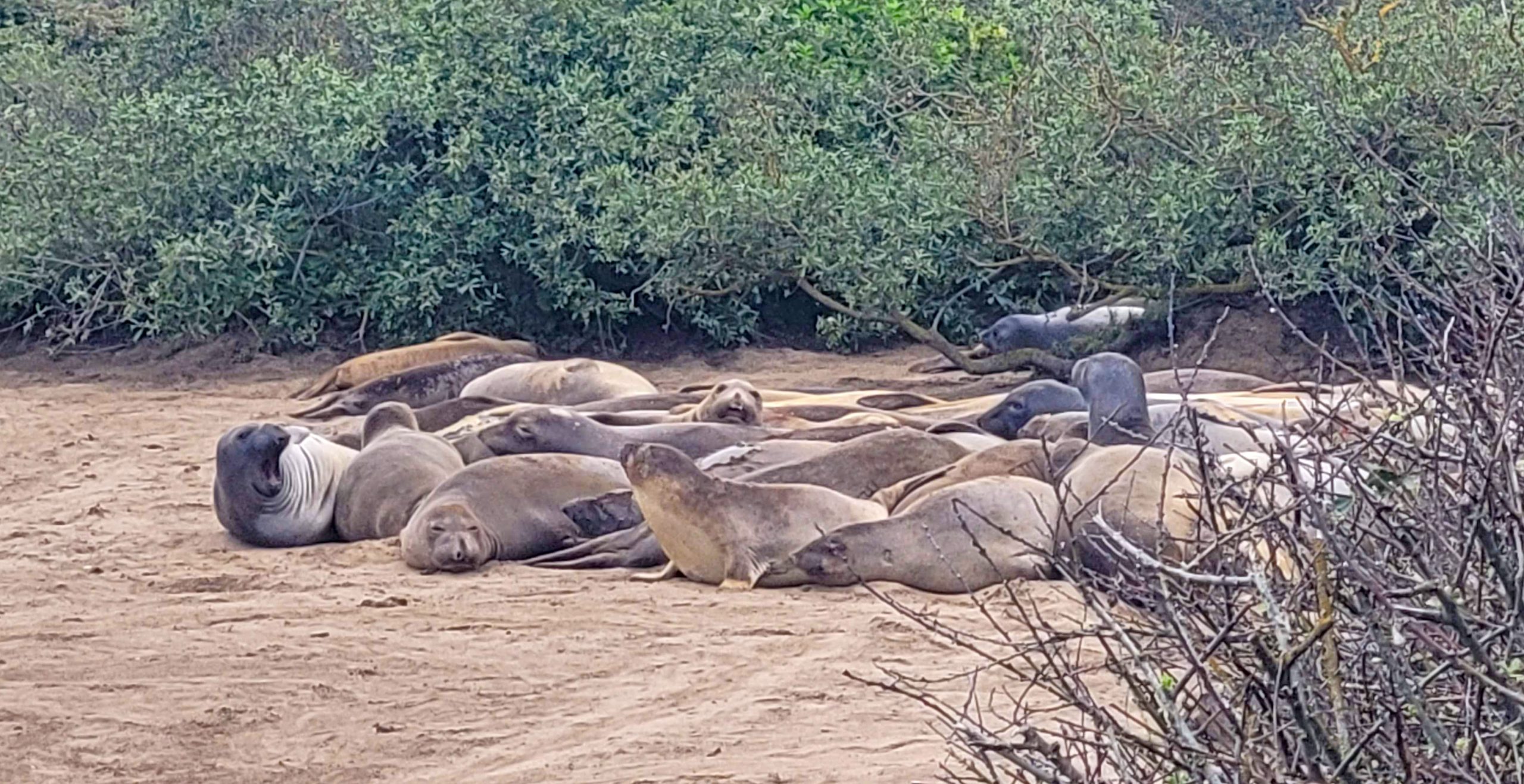
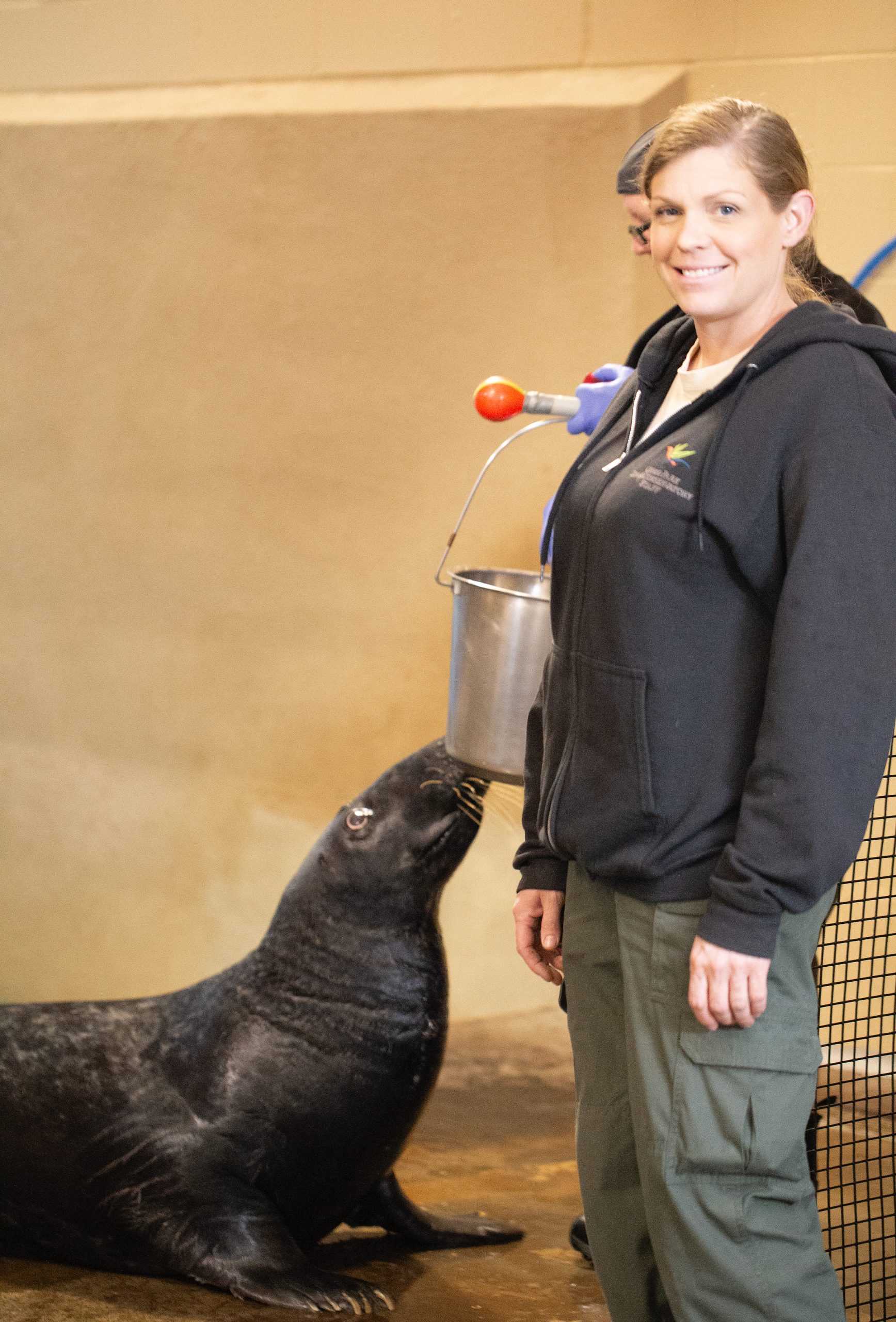
If you’ve been to a Blaze Sparky Show at Como Zoo, you know that sea lions like Sparky are capable of some amazing feats, from diving nearly 60 stories below the ocean’s surface, to holding their breath for up to 20 minutes at a time.
But some of the adaptations that work swimmingly in the sea can make veterinary care very complicated for seals and sea lions, particularly when it comes to anesthesia and other medical interventions. “They’re so trainable and willing to participate in their own health care that you can accomplish quite a lot when they’re awake,” says Como Zoo veterinary technician Andrea Persson. “But it can be much trickier when they’re sick and need to be immobilized, in part because of the dive response that allows them to conserve oxygen and also because we just don’t have to do it very often.”
That’s why Persson recently traveled to Sausalito, California, to attend an intensive veterinary training program at the Marine Mammal Center, the largest marine mammal teaching hospital in the country. Made possible by a grant from Como Friends’ Conservation Champions program, the five-day program allowed Persson to support the Center’s work, rehabilitating stranded seals and sea lions, while learning veterinary tips and tricks from experts who provide daily care to more than 80 elephant seals, harbor seals, and sea lions.
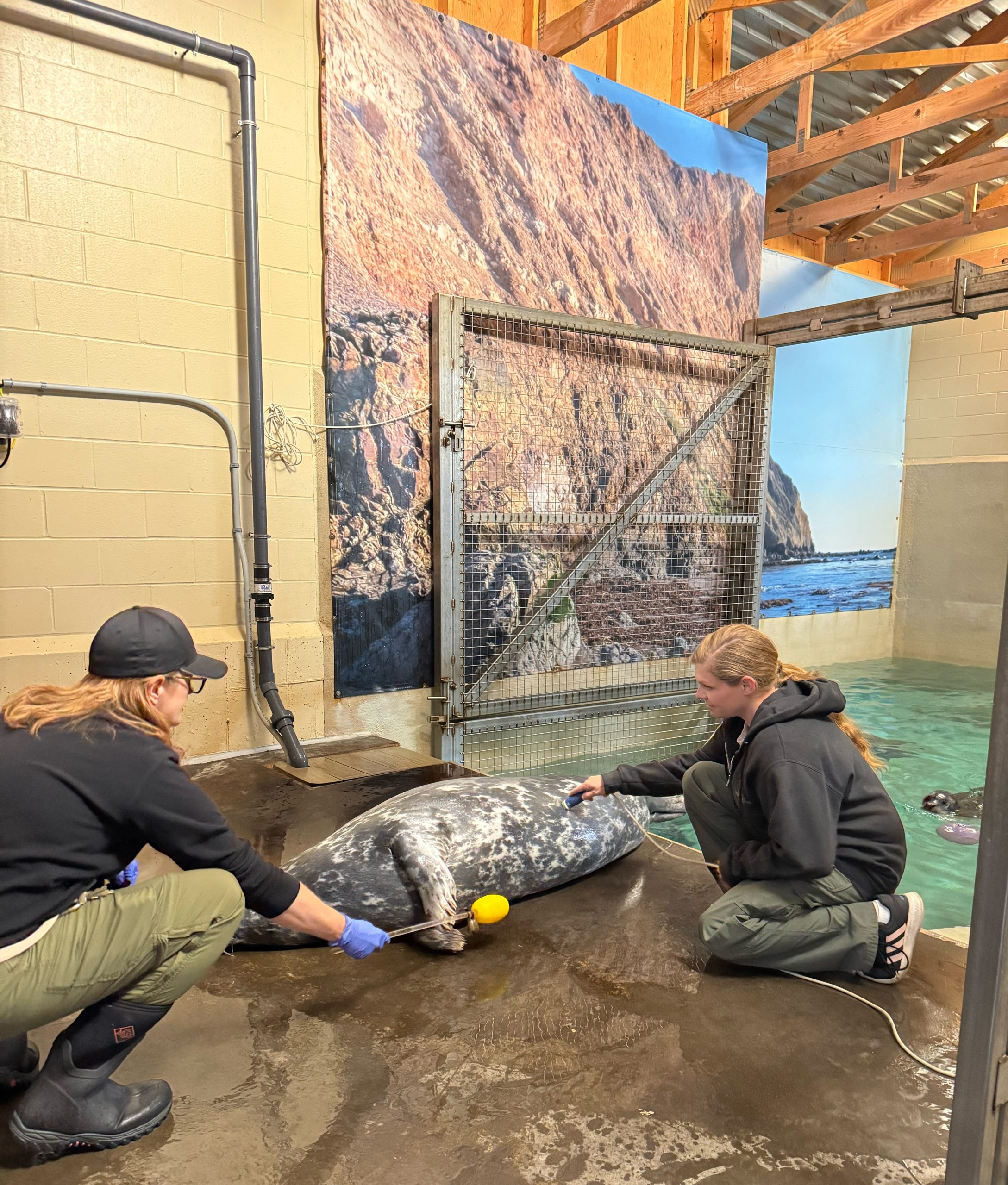
“Part of their mission is to expand the number of veterinary professionals that are equipped to deal with seals and sea lions, and it was a great opportunity for me to get concentrated hands-on experience,” says Persson, who cares for hundreds of different species at Como Zoo as part of her work with Como’s new on-site veterinary team. “One of my main objectives was to get good at collecting blood, because it’s one of the most important diagnostic things we can do with an animal, but it’s probably something I’ve done less than 10 times on a seal in my 20-year career.”
Drawing blood from a seal requires making a puncture near the animal’s spine. “One of my main objectives was to become proficient in blood collection. Blood samples are very important in providing information on the health of the animals we care for and with our relatively small population of seals at the zoo I had limited opportunities to refine my venipuncture techniques. It was great to be able to collect blood on multiple animals each day while I was at the MMC and I am now very confident in my ability to collect blood from our animals at the zoo.”
Since 1975, the Marine Mammal Center has rescued more than 26,000 marine animals along 600 miles of California coastline and in Hawai’i, typically answering more than 10,000 distress calls about sick, injured, or entangled marine mammals every year. During Persson’s stay in April, the Center was providing safe harbor to dozens of orphaned elephant seal pups, which are born at about 75 pounds and weigh nearly 300 pounds just a month later when they’re fully weaned from their mothers. In spite of their impressive size, young seals can often be separated prematurely when strong storms wash them off of beaches before they’ve learned how to survive on their own. Climate change makes the problem worse, as rising sea level and storm surges are more likely to sweep mothers and pups away from each other.
Distressed elephant seal pups are routinely rehabilitated at the Marine Mammal Center, but before they can be returned to the ocean, they need to be taught how to eat an adult diet of fish, squid, krill, and algae. “But you have to do it in such a way that you’re not habituating them to people,” says Persson. “It’s very difficult to get them to eat, because if they get even a little bit of water in their mouth with the fish they don’t know what to do, and they start gagging.”
The time Persson spent with pinniped pups may soon come in handy thanks to a new breeding recommendation for Como Zoo’s Atlantic gray seals, Wally and Medusa. And getting the chance to see wild harbor seals and sea lions on the California coast gave her even more appreciation for the species. “I would say the whole experience was invaluable, and gave me so many ideas to bring back to Como Zoo to improve care for our animals,” says Persson. “I’m very grateful.”
Private contributions from people like you are critical to support conservation efforts at Como Zoo and in the wild. Thank you!
The Marjorie McNeely Conservatory’s Summer Flower Show opens June 13, and regular visitors will notice it has a whole different vibe.
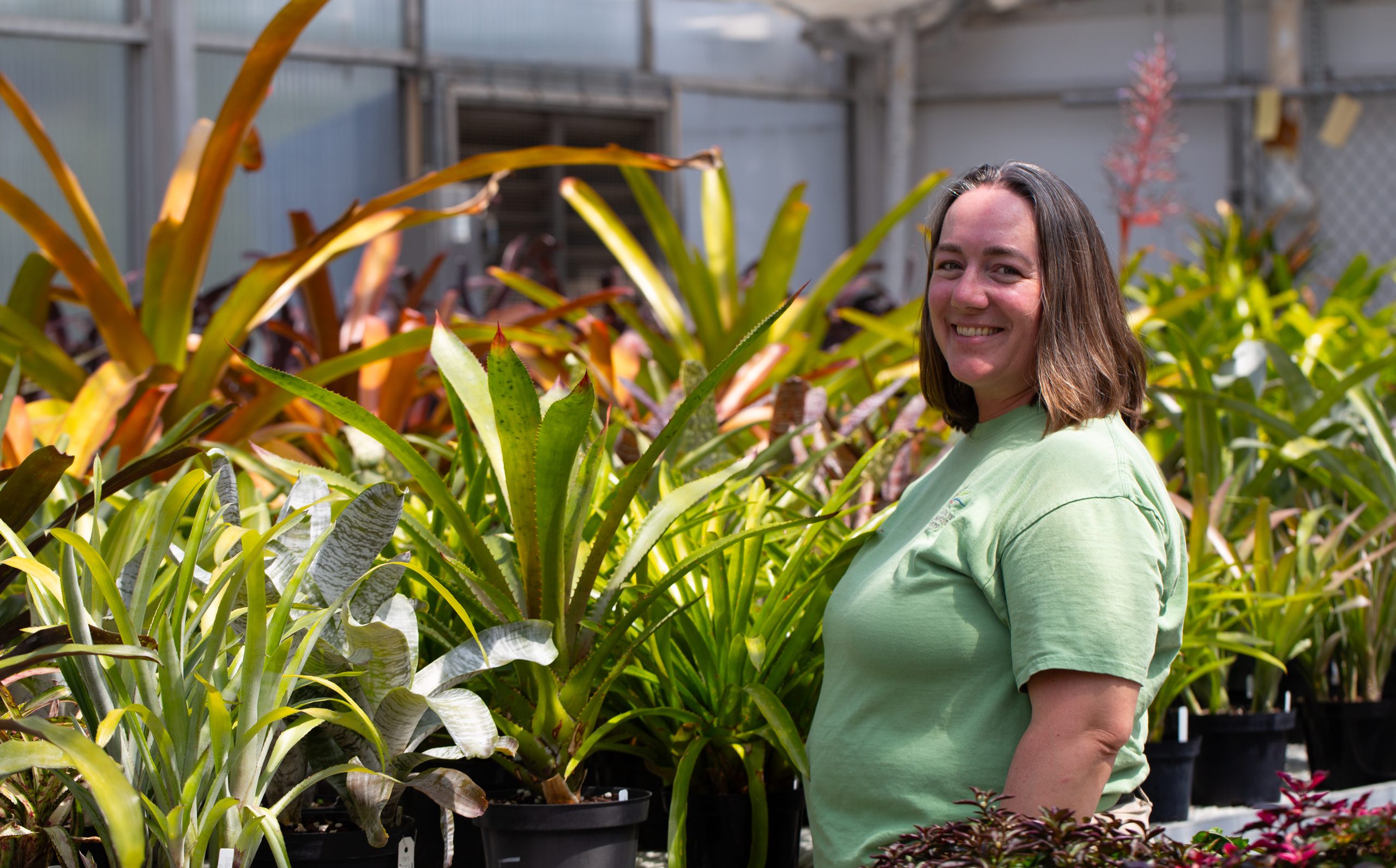
While Como’s longest-running flower show will still feature dozens of tropical annuals, the starring role this season will belong to Como’s exceptional collection of bromeliads.
“We’ve never used the Sunken Garden as a showcase room for a plant collection before, but we have such a variety of bromeliads currently,” Como Senior Horticulturist Ariel Dressler says, noting that Como visitors recently bestowed the “Cutest Plant” award on a tiny pineapple bromeliad. “We always want to put plants in a place where they’ll thrive and be happy, and with such a long show [that runs through September 14], bromeliads will do well. They’re such a charismatic plant, that to see them en masse will be a real treat.”
Bromeliads are also celebrating a birthday of sorts at Como. Fifty years ago, in September 1975, the horticultural staff established the Marjorie McNeely Conservatory’s first bromeliad garden. Como currently has 638 living bromeliads in its collection, from 350 different species, the best of which are often displayed in the understory of the historic Palm Dome.
To create the sheer number of plants needed for the Summer Flower Show display, horticulturist Diane Rafats propagated hundreds of bromeliad “pups” from Como’s own collection, coordinating their care to ensure they’re ready to bloom in time for the show. Hibiscus and citrus, colorful coleus, orange-red canna, coral-flowered fuchsia, and purple gomphrena will also be featured in the display, transforming Minnesota’s most beautiful room into a tropical paradise.
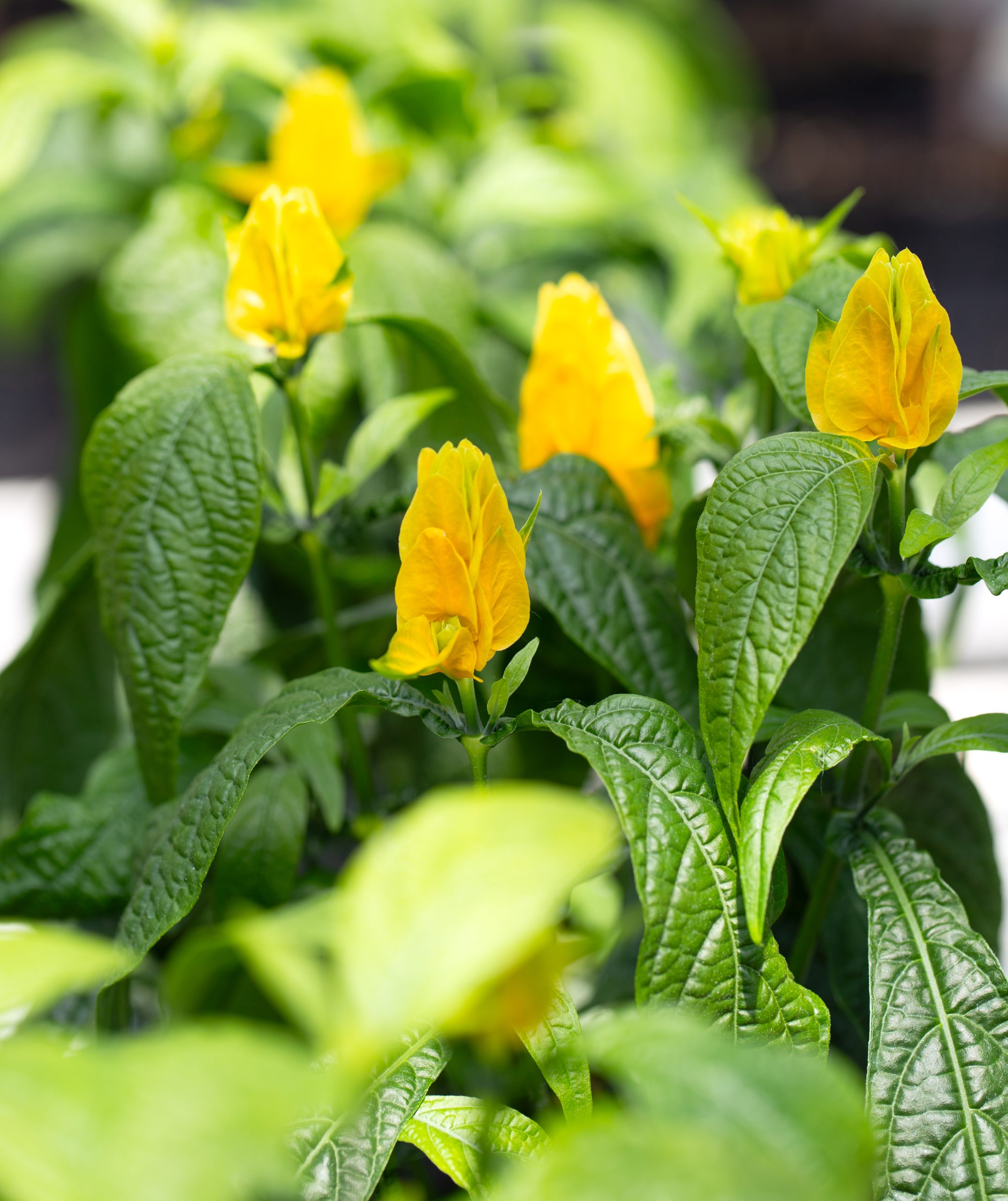
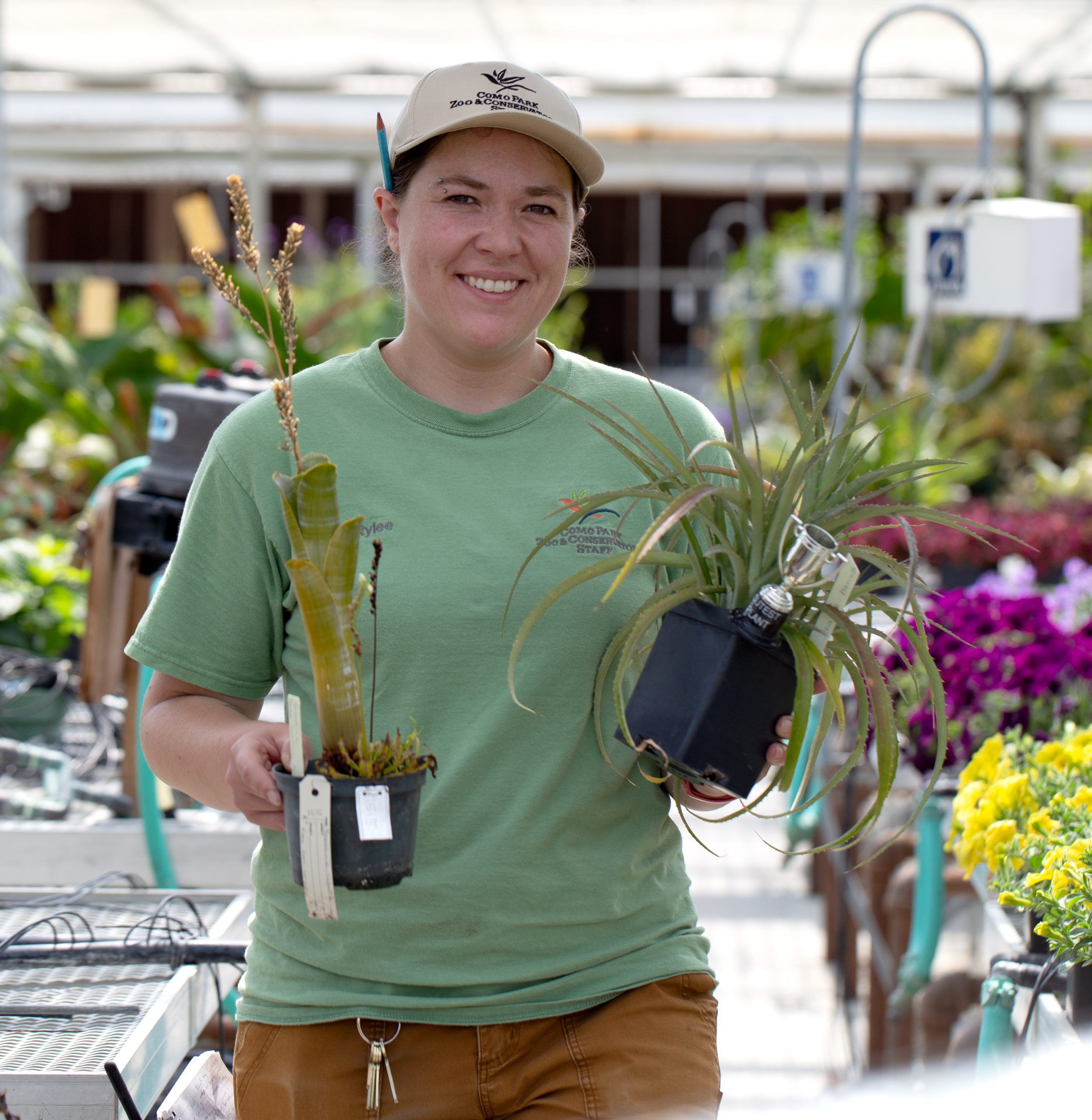
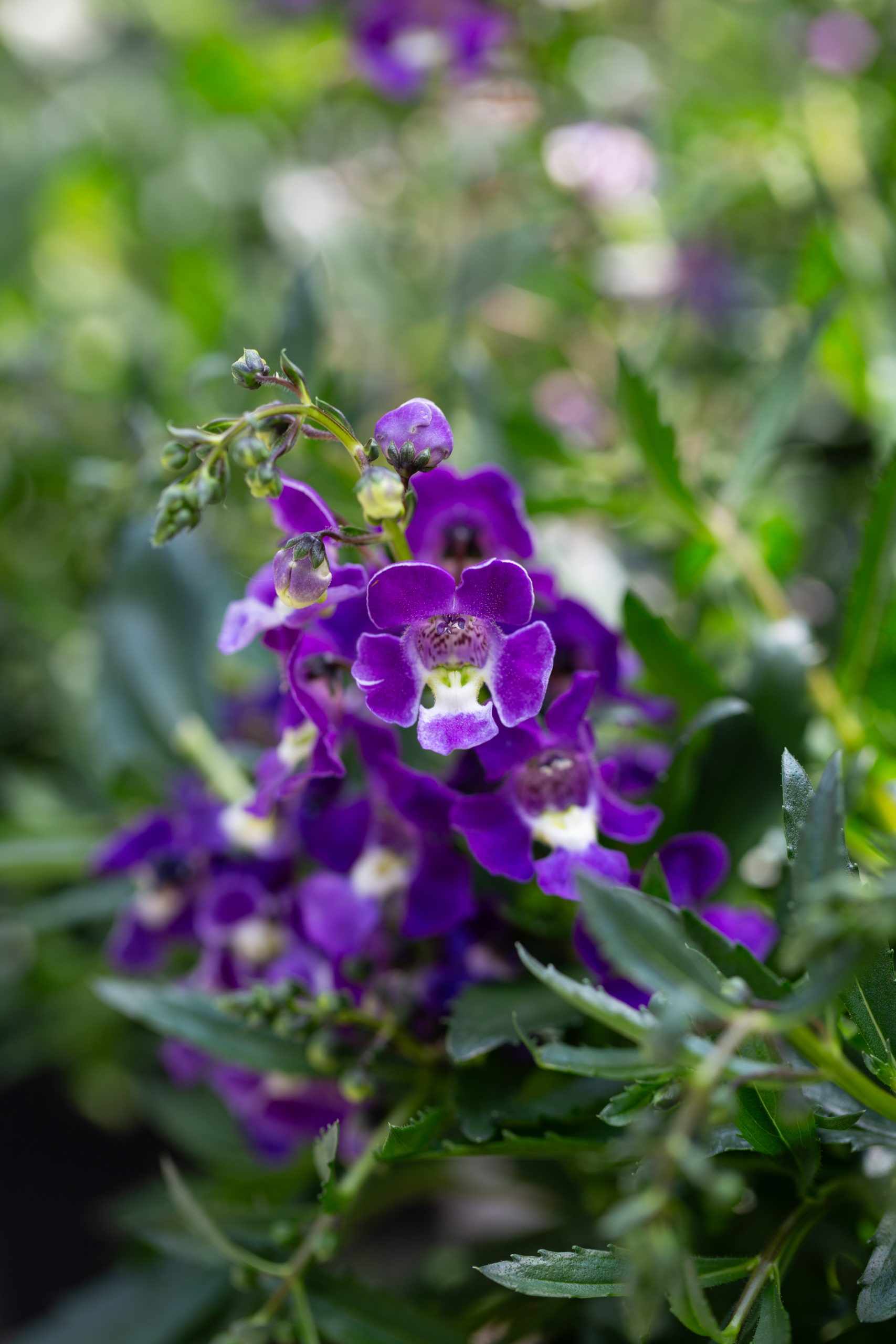
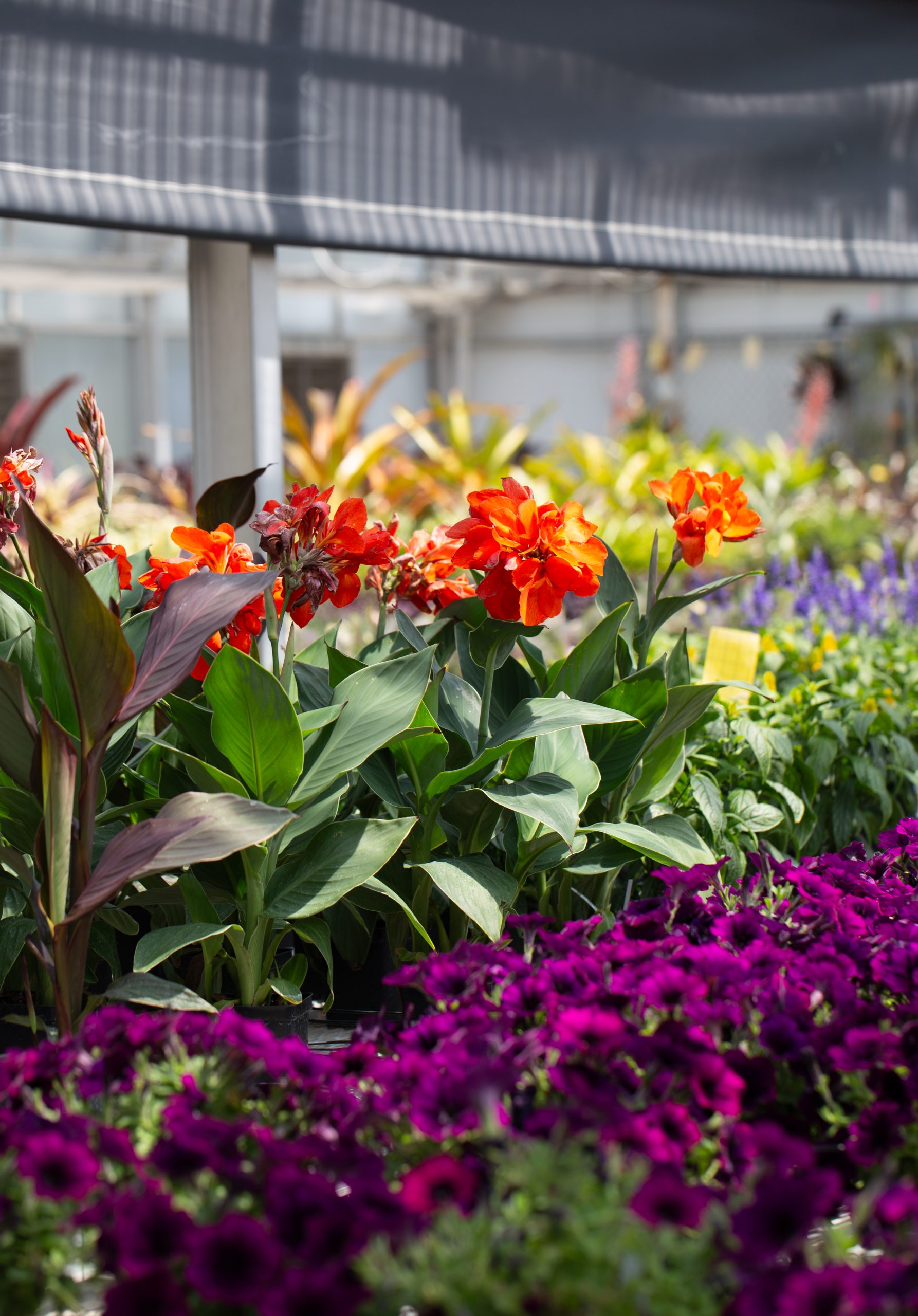
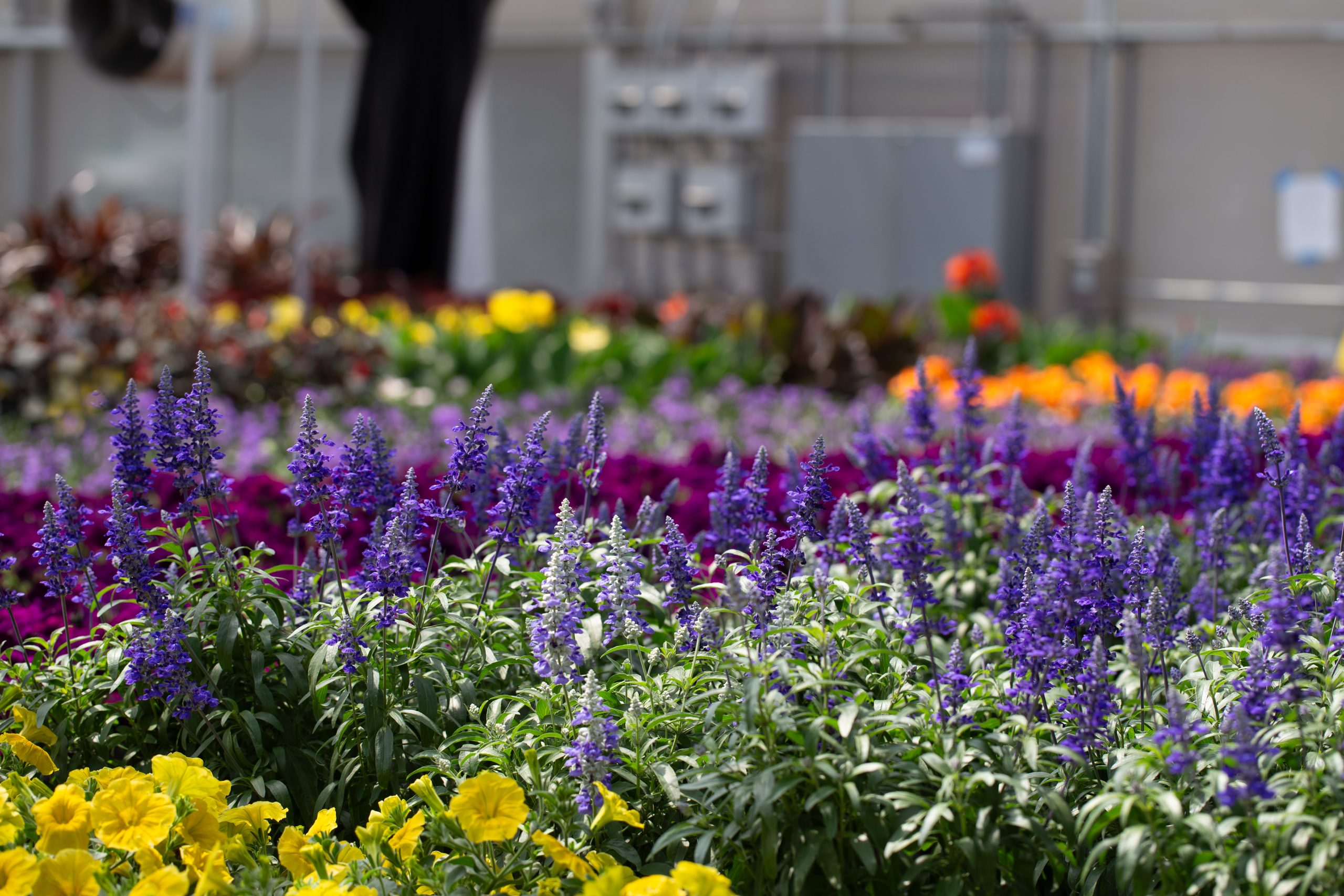
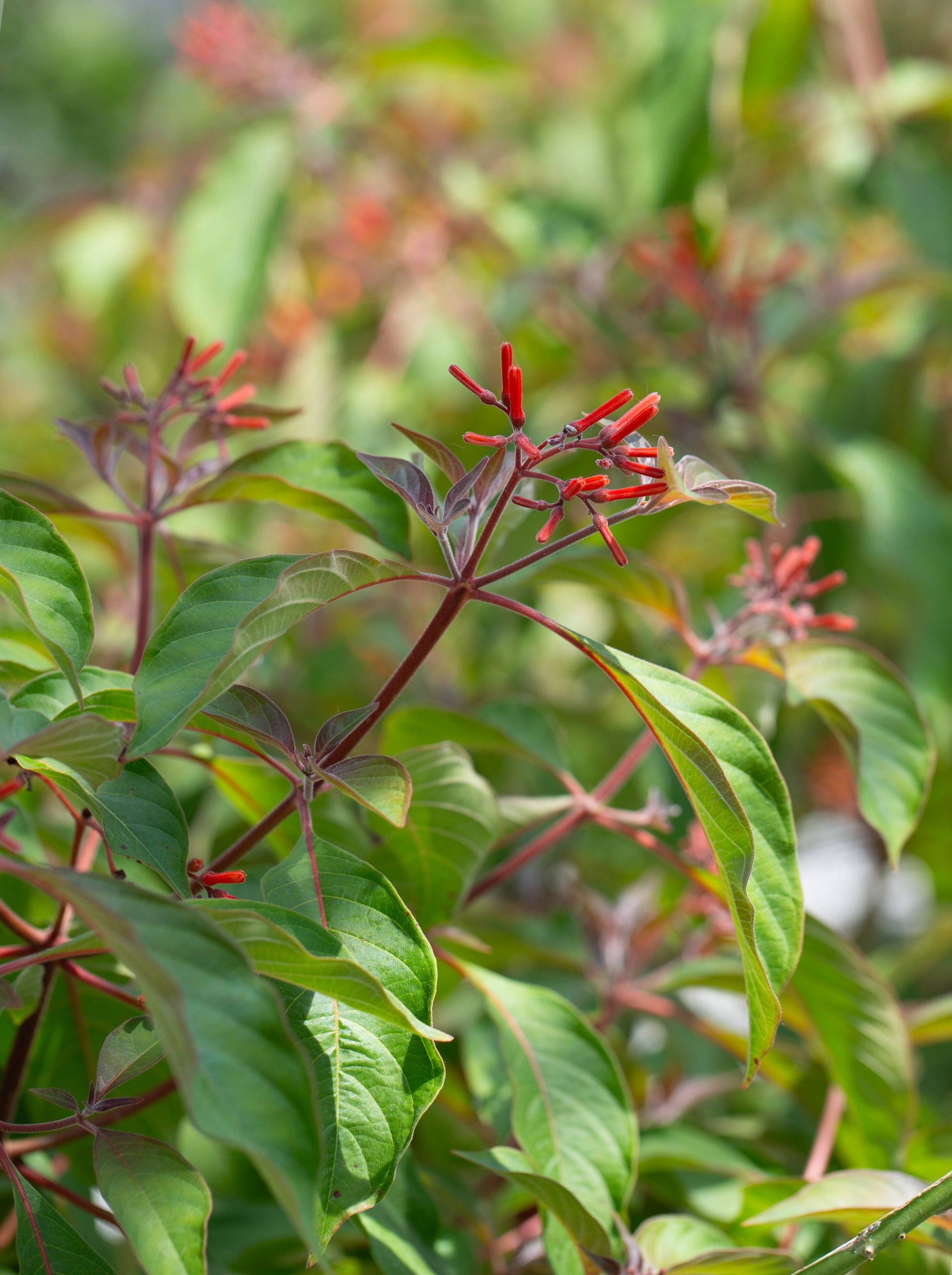
Your support for Como Friends helps ensure the Marjorie McNeely Conservatory’s seasonal flower shows are always free to every visitor. Thank you!
As she prepares to retire this year, founding president Jackie Sticha looks back on 25 years with Como Friends
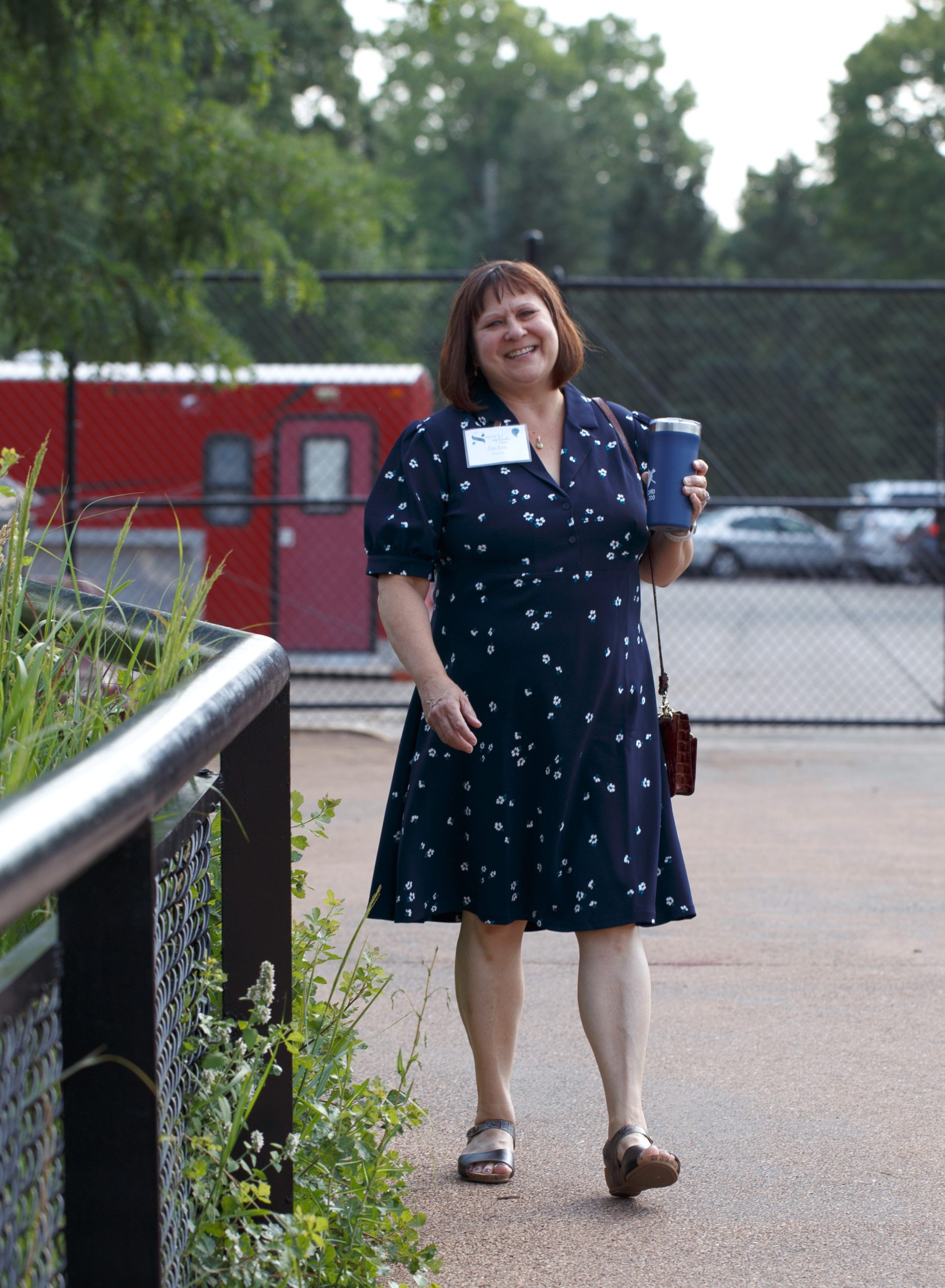
Nearly every day, Como Friends President Jackie Sticha takes a walk around the grounds of Como Park Zoo and Conservatory, but those first bright days of spring are always her favorites. “There’s really nothing like being at Como on a beautiful busy day, with thousands of people of all backgrounds and ages, tourists and teenagers, senior citizens, families and kids on field trips,” she says. “I often overhear conversations that are quite inspiring, or that make me chuckle. And I love the way the whole place buzzes with energy.”
The long-tenured president of Como Friends, Sticha can claim credit for a lot of that buzz. Since the organization’s founding in 2000, she’s led annual fundraising strategy, advocacy initiatives, and three successful capital campaigns that have contributed $52 million in new funding for the historic Como Zoo and the Marjorie McNeely Conservatory and leveraged an additional $50 million in state funds made possible through Como Friends’ advocacy work. These funds have had a big impact, creating new classroom space that serves thousands of students every year; unveiling cutting-edge habitats like Como Harbor, Polar Bear Odyssey, and The Ordway Gardens; and expanding programs that connect visitors to the wonders of the living world.
But 25 years ago, as an early hire of the newly formed Como Zoo and Conservatory Society, a merger of four different nonprofits and docent groups, Sticha’s first job was figuring out how to establish a strong public/private partnership that could protect the future of one of the Twin Cities’ most beloved institutions. “With 100 years of history, nearly everyone has a memory of coming to Como as a child, with their children, with their grandchildren,” she says. “Another strength was the passion and knowledge and commitment of the Zoo and Conservatory staff, and their vision for what could make Como even better.”
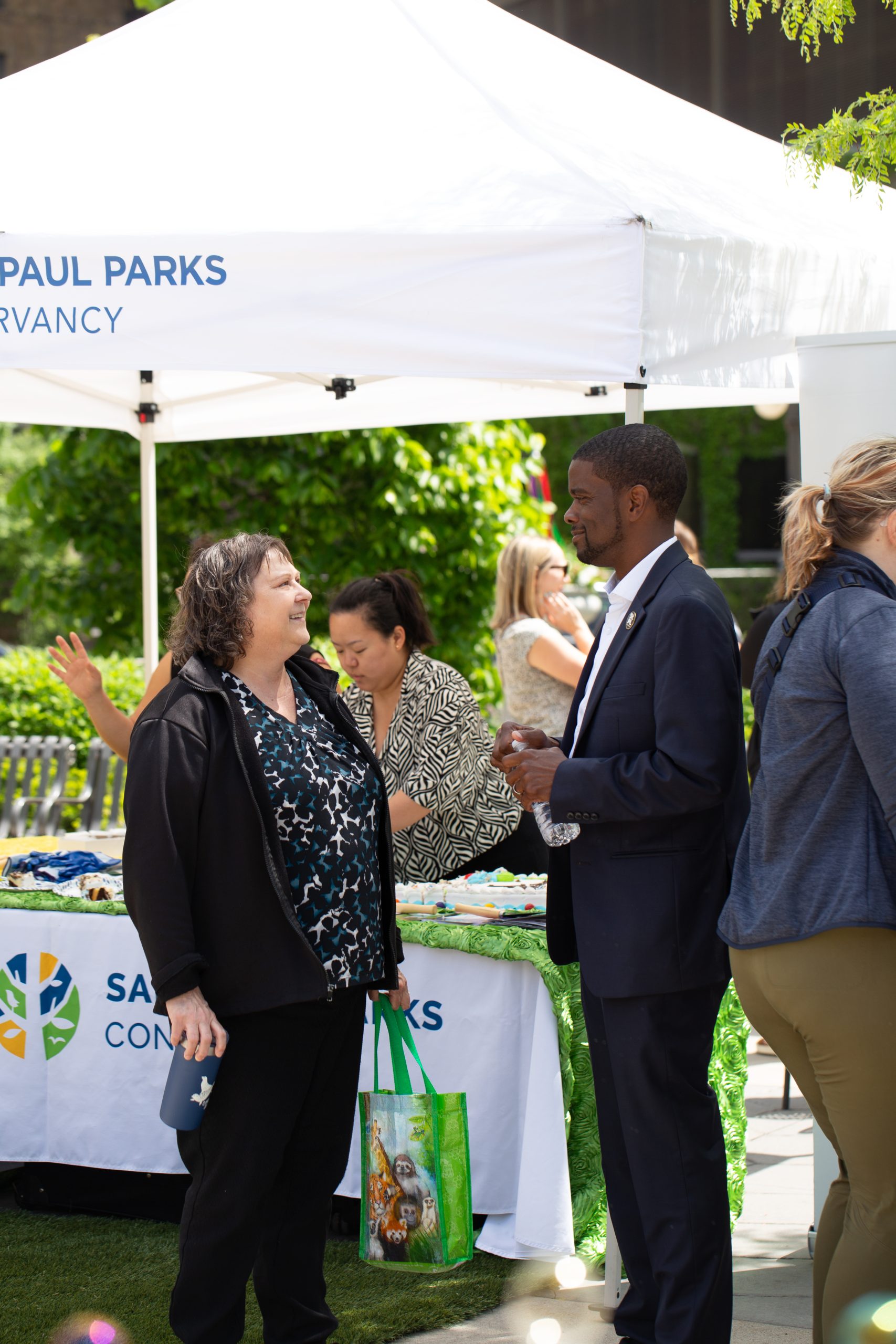
With strong support from the city and its parks department, an engaged board of directors, and such visionary volunteer leaders as Leonard Wilkening, Arlene Scheunemann, Bob Piram, and Paul Verret, the Society (renamed Como Friends in 2008) launched a major capital campaign to unite the Zoo and Conservatory through the Visitor Center, and to provide much-needed updates to the historic campus with new spaces for animal support, plant collections and administration. “What drew me is that this was a brand new organization with some really big ideas,” she says. “We all had to build new relationships to move forward, and while we definitely made mistakes along the way, it was often out of an excess of enthusiasm for what was possible.”
During the most challenging times, Como Friends’ first board chair, the late Leonard Wilkening, would give Sticha this advice: “Just give it five years, and it will all work out.” His timeline was prophetic—within the first five years of their partnership, Como Friends and Como Park Zoo and Conservatory unveiled the new Visitor Center, Tropical Encounters, the new Fern Room and the first ever Orchid House to the public, with behind-the-scenes improvements that included a new Animal Support Building and administrative offices retrofitted in Como Zoo’s iconic WPA-era building. “As we all began working together, we started having more and more success,” Sticha says. “But unveiling the Visitor Center was the real turning point, because it was the first visual demonstration of what the future at Como would look like.”
Since then, Como Friends has led the charge on two additional capital campaigns, one for Como Harbor, and another to create Polar Bear Odyssey and The Ordway Gardens. Como Friends also secured the major gift that renamed the Marjorie McNeely Conservatory, and a $1 million endowment to create a permanent source of support for the Charlotte Partridge Ordway Japanese Garden.
During Sticha’s tenure, Como Friends finished each fiscal year with an operating surplus and increased the annual contribution to Como Park Zoo and Conservatory. Como Friends’ steady growth provided stability for Como, creating a dependable source for their annual operations and funding for ongoing improvements.
When public funding for Gorilla Forest was threatened, Como Friends expanded its profile to include advocacy work, joining Como each legislative season to support the campus’s role as both a community asset and an economic powerhouse that welcomes nearly two million visitors each year—the largest audience for any cultural institution in the state. Como Friends also successfully diversified its revenue streams with a mix of popular fundraising events like Bouquets, Sunset Affair, and Como After Hours; strong relationships with foundations and corporate funders; growing individual giving programs; and a successful gift shop operation, Garden Safari Gifts. “We’ve grown and learned a lot since our early years, but we’re still a relatively small team for the amount of money we raise, and for the extensive retail operation that we have, but we have a smart and nimble staff who are so innovative and creative in coming up with solutions for how we can be successful, and then working together to execute them,” Sticha says.
As she looks ahead to retiring this summer, Sticha says many of her favorite memories were made learning from supporters energized by their love of plants and animals, and working with families who have passed their commitment to Como from one generation to the next. She also thinks often of community leaders like Wilkening; the late Nancy Nelson, who raised funds for the Polar Bear Odyssey campaign with her husband Russ; and fundraising consultant Jim Scarpetta and others who were instrumental in making Como Friends’ vision a reality. “Every time we finish a new project, I think how pleased they would be to see how much progress Como has made.” She also thinks about some of her favorite animal ambassadors, including the late Amanda the orangutan, who once spiced up a behind-the-scenes tour by spitting a mouthful of water and orangutan kibble in Sticha’s direction. “Orangutans can hold a lot of water in their mouths, so it was like walking into a lake,” she laughs. “But I wasn’t offended at all. I felt like she’d chosen me.”
As Como Friends looks ahead to announcing the appointment of its next leader, she has some advice for her successor: “Have fun. Being at a job for 25 years is a long time to be in one place, but I’ve never been bored because Como is so dynamic, with living animals and gardens that are always changing and evolving. Between our staff, our board, and our donors, there are so many wonderful people connected to Como and it’s fun working with them, and working together for something that is so meaningful to our community.”
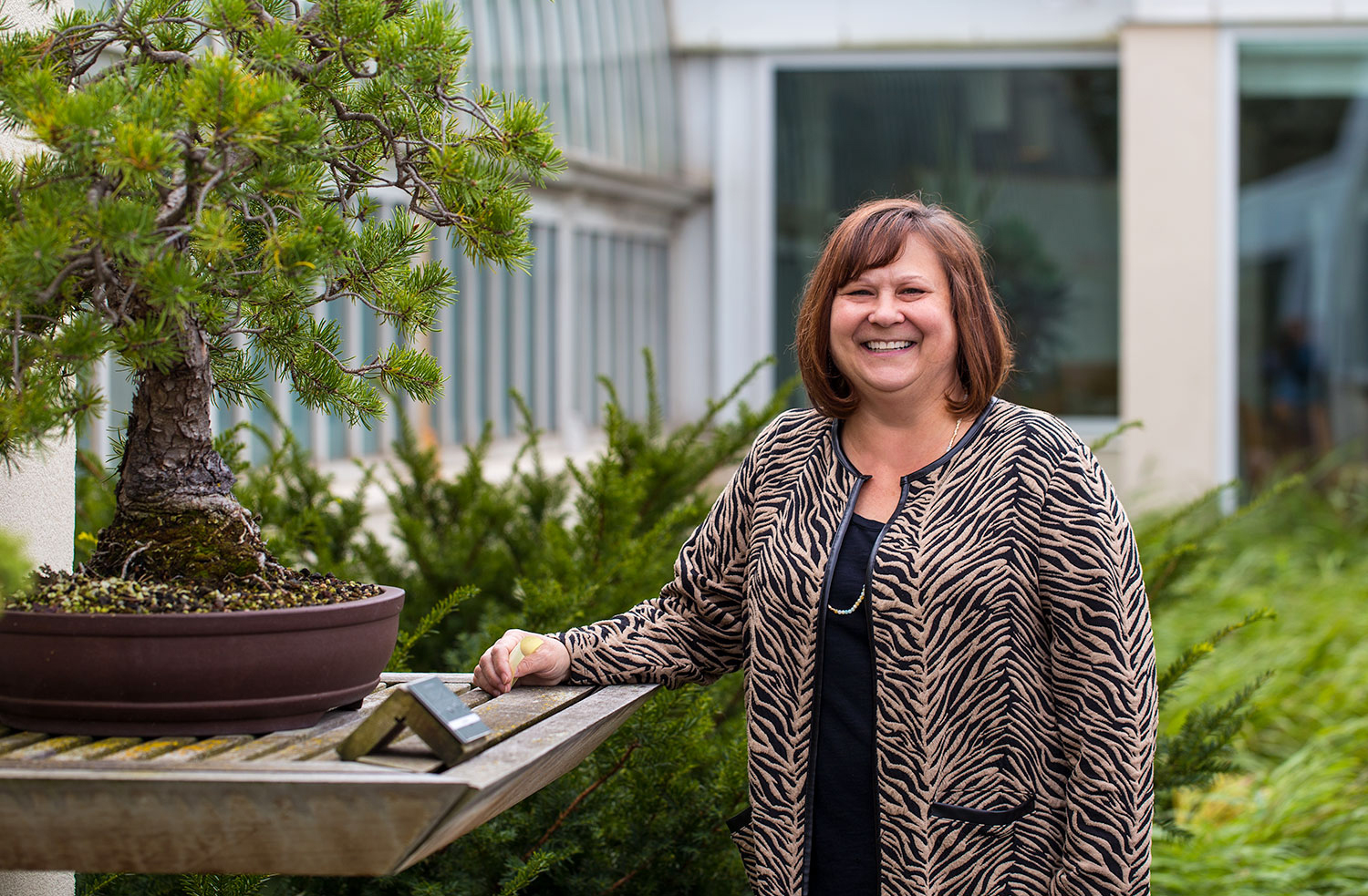

As studbook keeper for polar bears, Allison Jungheim preserves the health and genetics of North America’s most majestic species

When she shares observations about the polar bears in her care, Senior Keeper Allison Jungheim can sound like she’s talking about her closest friends, bubbling about Nan’s bossy behavior, bragging about Kulu’s impressive weight gain (“At 940 pounds, we should probably stop calling him little Kulu”), and beaming at Neil, the mild-mannered male who first came to Como Zoo with his brother Buzz back in 2001. “He is my bear,” she says.
Jungheim brings the same enthusiasm to her role as studbook keeper for North America’s polar bears, responsible for tracking the genetic health and history of some 60 individuals living in partner zoos across Canada and the U.S. A project of the Bear Taxon Advisory Group through the Association of Zoos and Aquariums, the studbook is one of the ways that zoos work together to ensure that managed populations of polar bears are living their best lives.
Similar to your family’s own electronic medical records that allow for more coordinated health care, “keeping all of that data in one place is super important for the longevity of animals,” Jungheim says. “The studbook also gives me the ability to look back at historic animals and current animals, to see who’s related to whom, and who should breed with whom.”
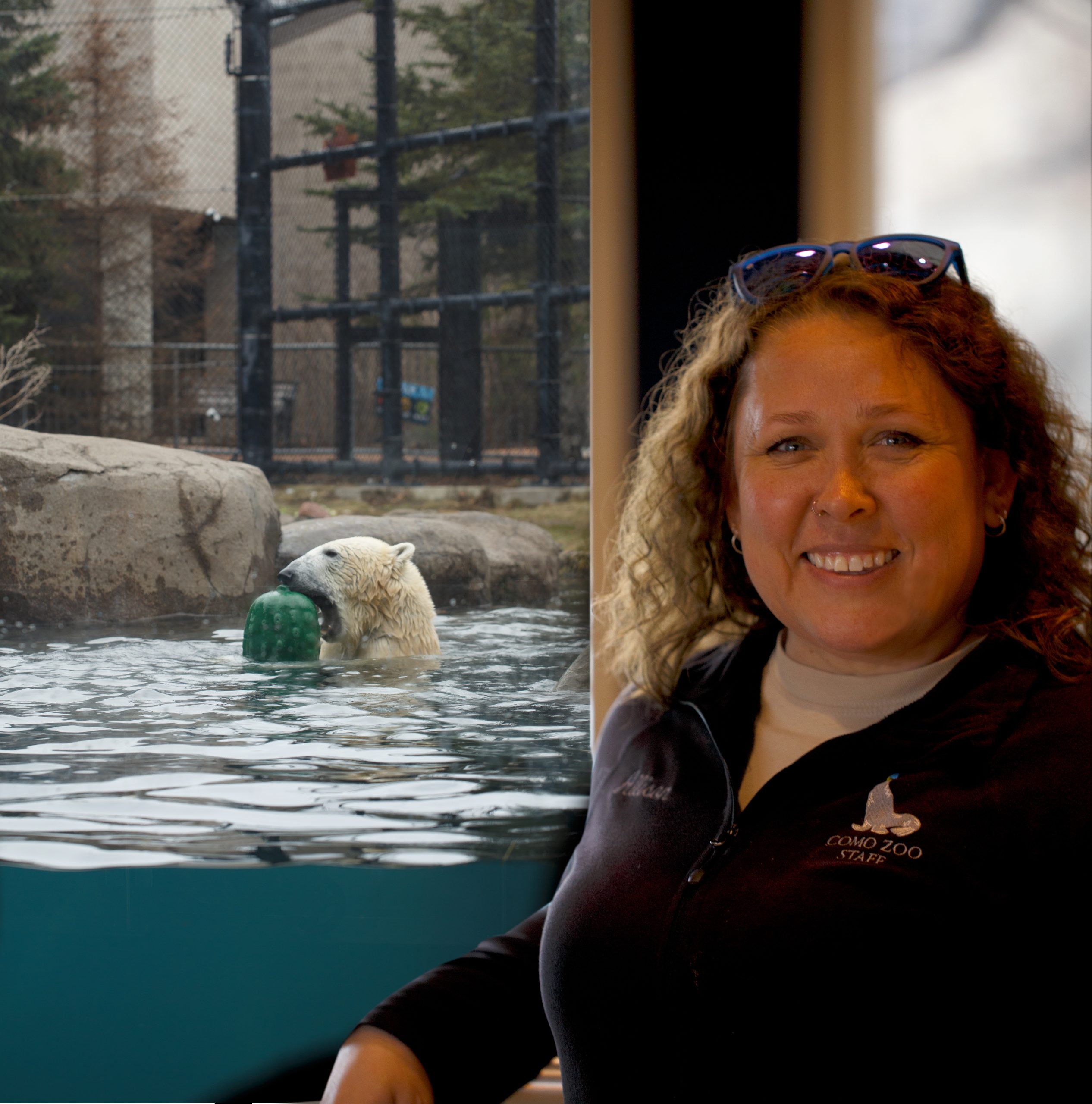
While Como Zoo’s keepers have earned national recognition for their success at reducing polar bear repetitive behaviors and developing tools for improving polar bear blood draws, Jungheim’s longtime leadership in polar bear preservation is a volunteer effort. “I don’t get any extra money or funding for managing the polar bear studbook, but it’s worth it to be part of the bigger picture, helping polar bears around the country, and not just here at Como.”
Polar bears require just the right conditions for successful breeding, both in zoos and in the wild. While polar bears will typically mate in early spring, they’re one of more than 130 animal species with delayed implantation, meaning that fertilized eggs don’t implant in the uterus until months later. The delay allows females to build up the fat reserves they’ll need to support themselves and their cubs during a long denning period. “But if the female doesn’t gain enough weight, or have good enough body condition, she may not implant that embryo or embryos at all,” explains Jungheim. The long dormancy period means that if one breeding pair is unsuccessful, zoos don’t have much time to establish a new pairing.
“That’s one reason why collaboration with other zoos is so important,” she says, noting that the polar bear community of keepers, managers, and veterinary staff have regular virtual meetings throughout the year, sharing breeding and denning news, and exploring new strategies. “One of the things we’re trying is to create more choice for mates by pairing more than just one male and one female,” she says. “Our thought is that by giving mate choice, it gives the male the chance to share the love with other females, and increases competition for breeding, and hopefully, increases success rates.”
With that strategy in mind, Como Zoo is getting ready to welcome a new female bear from a partner zoo, who might make a good breeding partner for Kulu. “With an aging population of bears, we’re trying to shake things up,” Jungheim says. If the pairing works, she may even have a couple of new names to add to the polar bear studbook.
Funding from Como Friends enabled Allison Jungheim to travel to attend an in-person polar bear conference, strengthening the network of connections zoos rely on to help bears live their best lives.
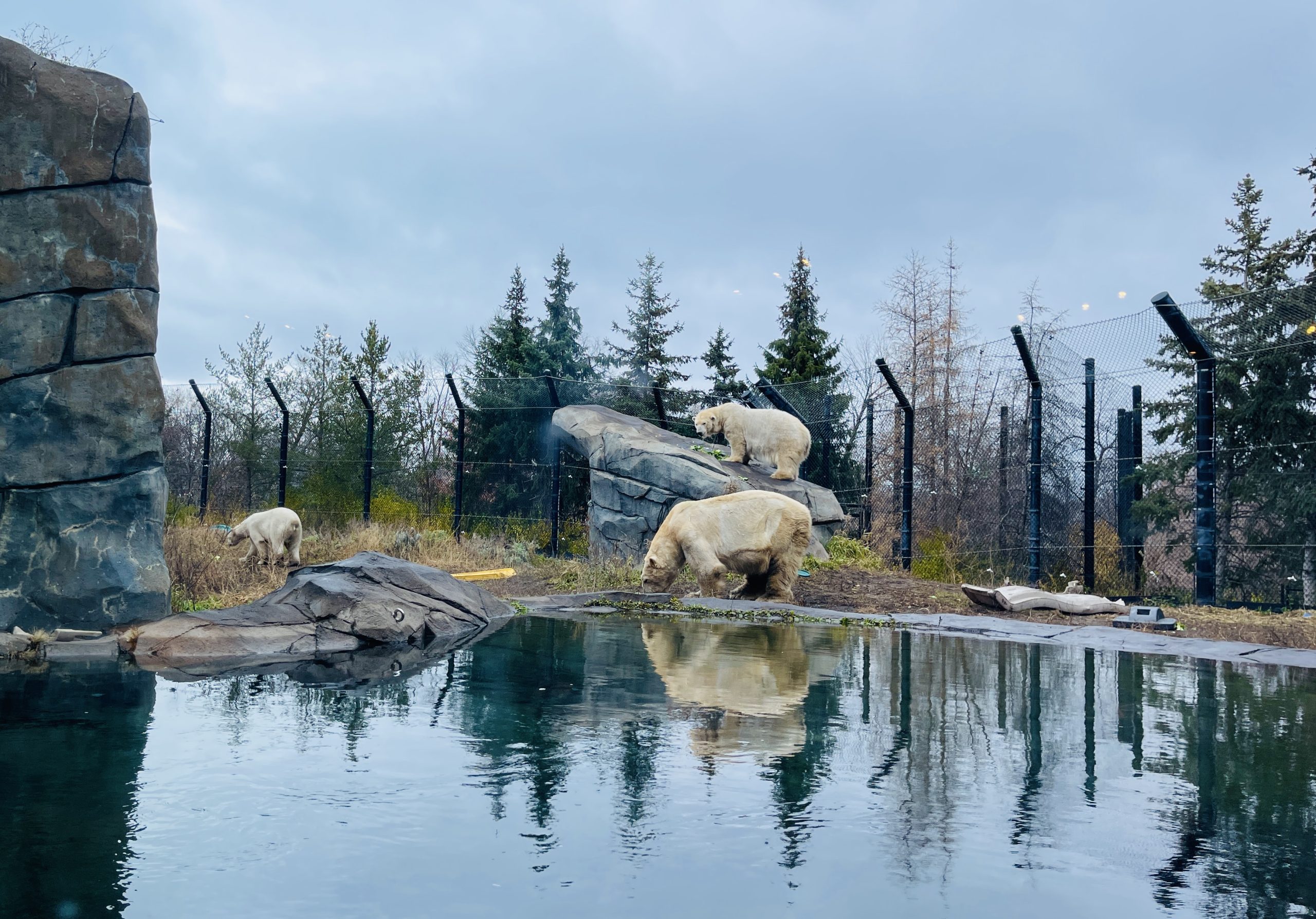
Celebrate Party for the Planet at Como on
April 26 and 27 | Presented by Xcel Energy
There’s no better place to celebrate Earth Day 2025 than Como Park Zoo & Conservatory, where our annual Party for the Planet is a two-day weekend celebration for visitors of all ages. Powered by our friends at Xcel Energy, this year’s Earth Day theme, “Our Power, Our Planet,” celebrates the movement toward renewable energy. With family-friendly activity stations, and splashy public programs like our Blaze Sparky Show, Party for the Planet is a great way to learn more about what you can do to protect our environment on Earth Day and every day.
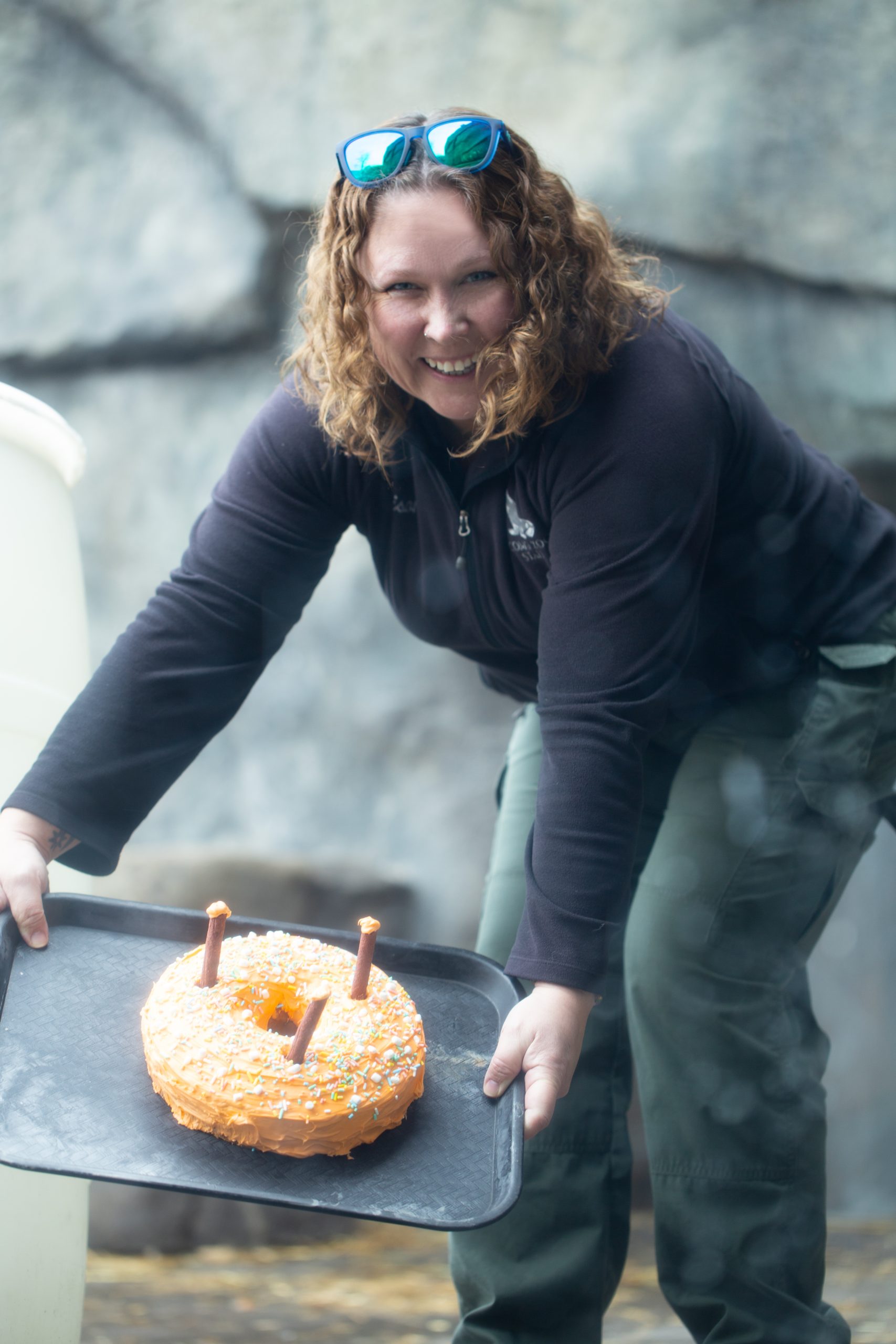
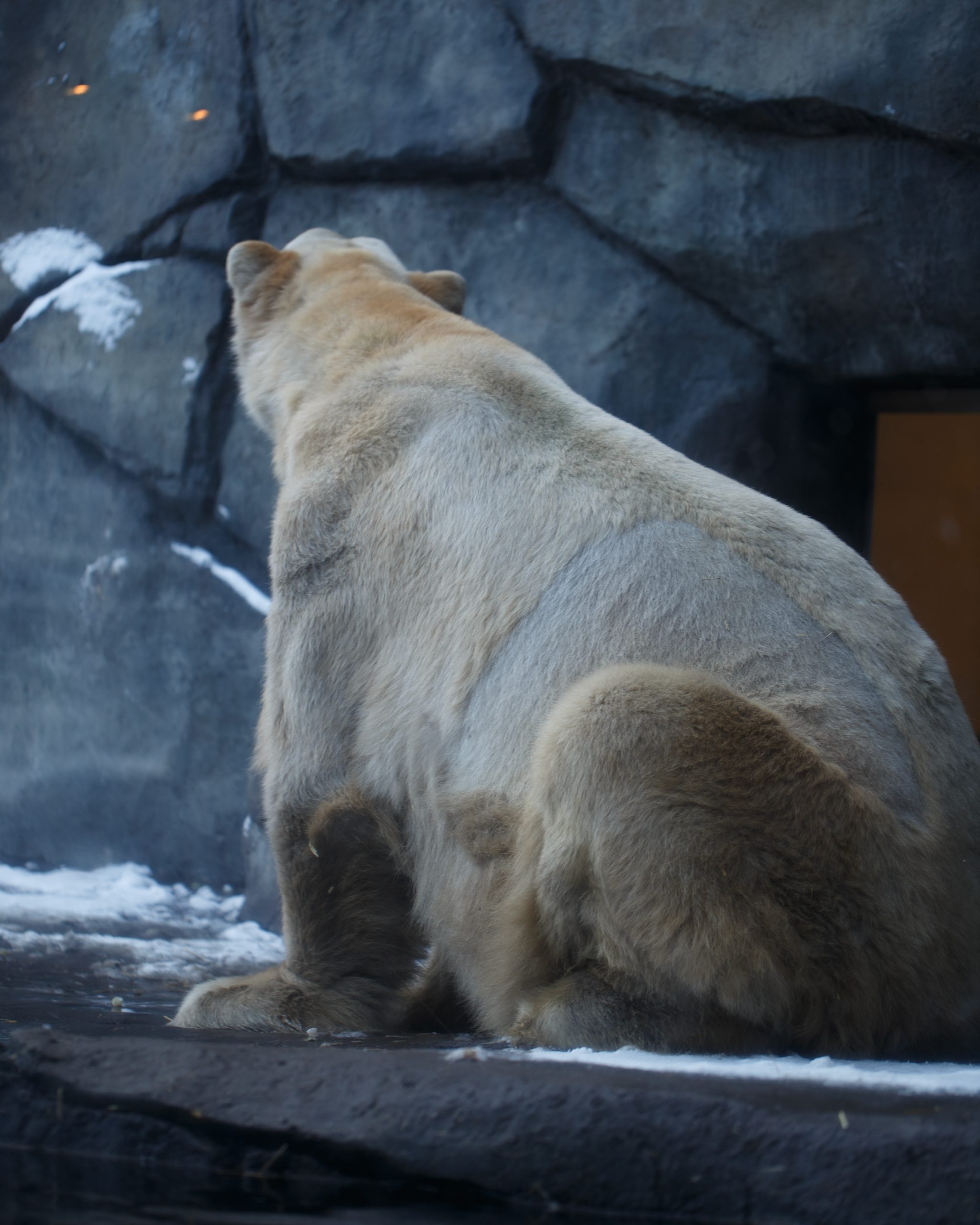
Como’s redesigned Residency Program is bringing the power of plants and animals to third graders across the state

Residency Program students from Roseville’s Central Park Elementary School recently welcomed two new African crested porcupines to Como Zoo’s Large Cat Building by making artwork for their habitat. The porcupine pair were recently relocated to Como following the closure of SeaQuest in Roseville.
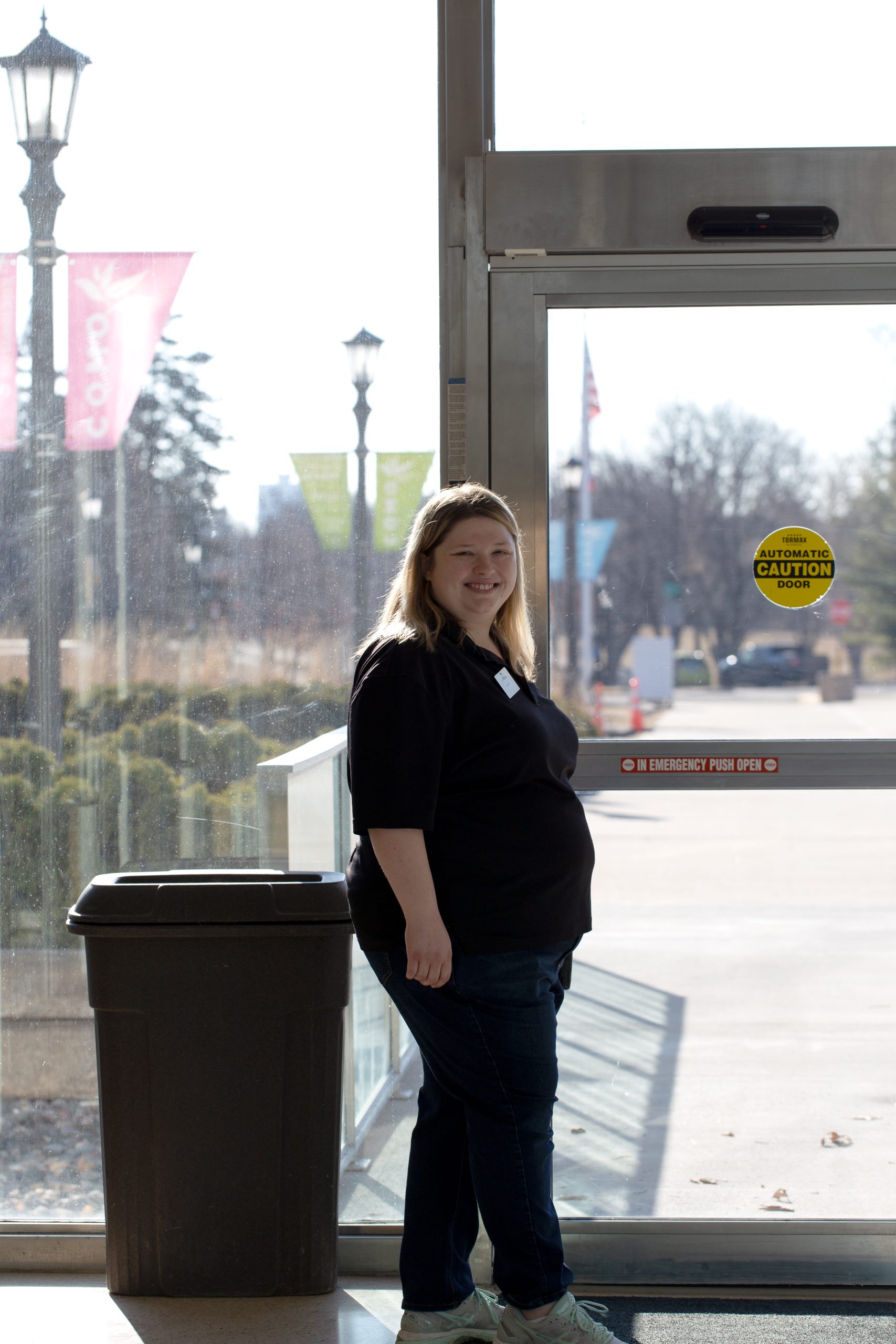
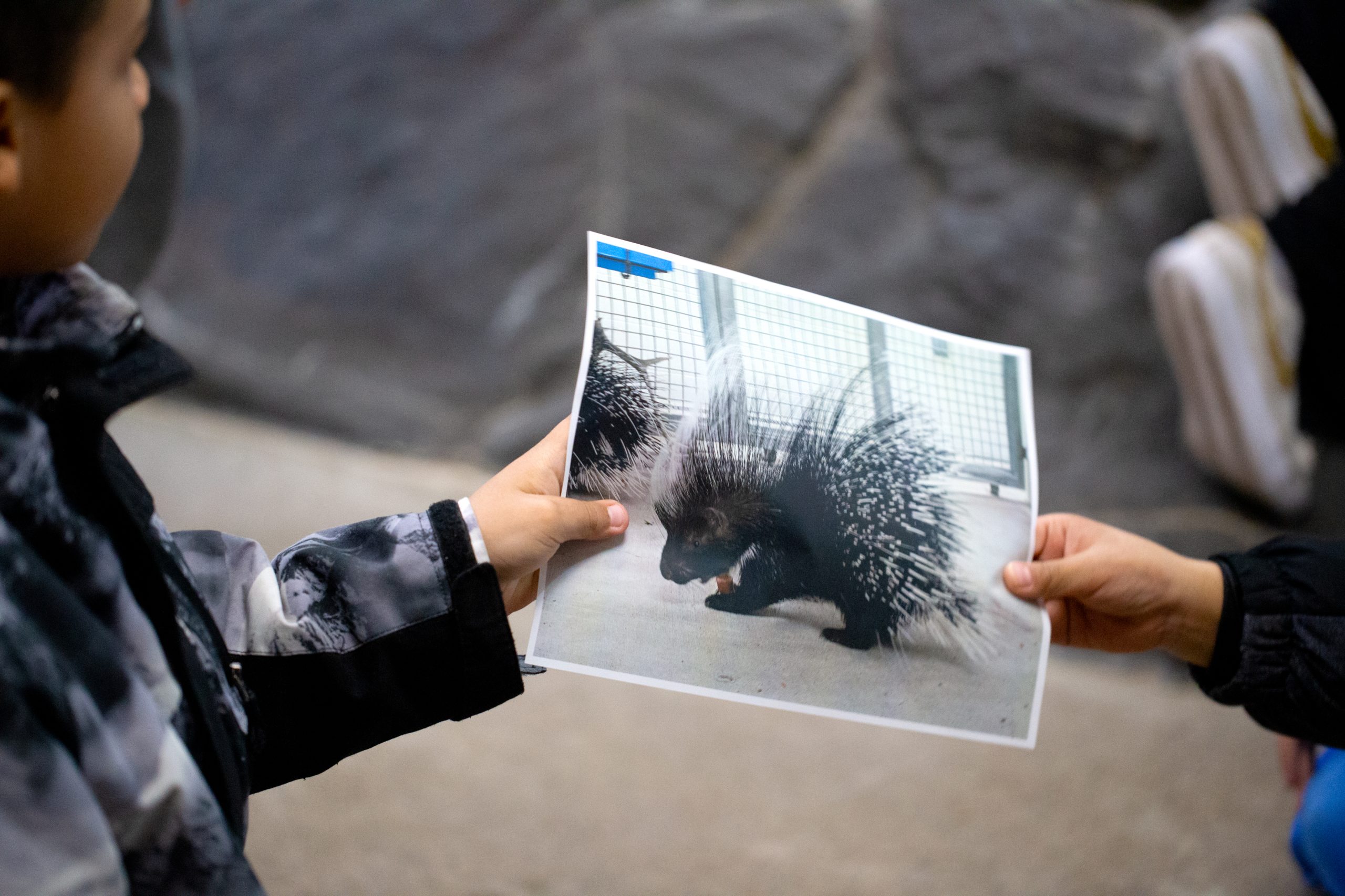
Melrose, Minnesota, is more than a 90-minute drive to Como Park Zoo and Conservatory—longer during rush hour—which makes a field trip to the Twin Cities out of the question for most classrooms.
But thanks to Como’s new and improved Residency Program, 25 third graders in Ms. Brown’s class at Melrose Area Elementary School recently got the chance to spend quality time with Katie Raeker, an educational specialist who knows nearly everything there is to know about Como’s plants and animals. During the course of four days in April, Raeker visited the class for nearly five hours every day, bringing live plants, biofacts, fun animal profile videos and boxes and boxes of art supplies to teach a program called Exploring Ecosystems, that compares the biomes of Minnesota to those of the Brazilian rainforest.
“What’s really fun about teaching kids in greater Minnesota is that they often have first-hand experience with the animals I often bring up in class,” says Raeker. “If I show them a pair of antlers, they know the difference between a deer and a moose. And if I ask ‘How many of you have seen a wolf?’ lots and lots of hands go up. Compared to the kids we teach in the Twin Cities, it leads to very different conversations.”
Taking Como’s education curriculum on the road is the latest iteration of Como’s Residency Program, an immersive conservation program offered free of charge to area schools and made possible by Minnesota’s Legacy Amendment. Several years ago, this popular program got its start by inviting classrooms around the Twin Cities to relocate to Como, using both Como Zoo and the Marjorie McNeely Conservatory as the backdrop for days of cross-disciplinary learning. Put on pause during the pandemic, the Residency Program resumed in January 2025, simultaneously offering on-site experiences for third grade classrooms around the Twin Cities, and off-site programs for third graders across the state.
In fact, the same day Raeker was teaching in Melrose, Residency Program Specialist Grace Coughlin was leading a group of third graders from Roseville’s Central Park Elementary into a new habitat in the Large Cat Building that is now home to two new porcupines. Large cat keepers Hans Jorgensen and Caitlin Allessi greeted the group, and invited them to decorate the glass enclosure with big rolls of craft paper and magic markers.
“So many of the teachers have been telling us how grateful they are for the opportunity to have an art component to the program,” says Residency Coordinator Madeline McCullough. “The other thing we’re hearing is that they really appreciate our multi-modal approach with our curriculum. There’s movement throughout the day, videos and slideshows and pictures, class discussions, and very tactile experiences with biofacts and plants. The curriculum makes them feel supported, and it works to reach many different types of learners.” Another strength of the program: McCullough, Coughlin, and Raeker are all former classroom teachers, skilled at shaping lesson plans to fit the needs of participating classrooms.
With a waiting list of schools eager to sign up, Como has prioritized Title I classrooms where a significant portion of students are from disadvantaged backgrounds, or are eligible for free or reduced-price lunch. In addition to the free classroom experience, Como reimburses local schools for the full cost of bus transportation to campus, ensuring that cost is no barrier to participation. While nearly half of the programs happen right on Como’s campus, for many participating students, it’s their very first trip to Como Park Zoo and Conservatory. “Even though Como is in the backyard for a lot of our participating schools, a lot of kiddos have never been to a zoo before,” says Coughlin. “It’s really fun to show them around and to see their faces the first time they see a giraffe, or watch a sea lion swimming in the water.”
The focus on third graders helps area schools meet state science standards, while connecting with kids in the sweet spot for conservation education. “It’s the perfect age for this program, because they’ve been in school enough years that they have the basic skills down, and they’re a little bit more independent so they can be critical thinkers and sponges for information,” says Raeker.
“Also third graders have no filter, and they have so many interesting questions,” says Coughlin. “Kids are always excited to find out that Como is free and open every day. And a lot of them really want to know when they can come back with their parents.”
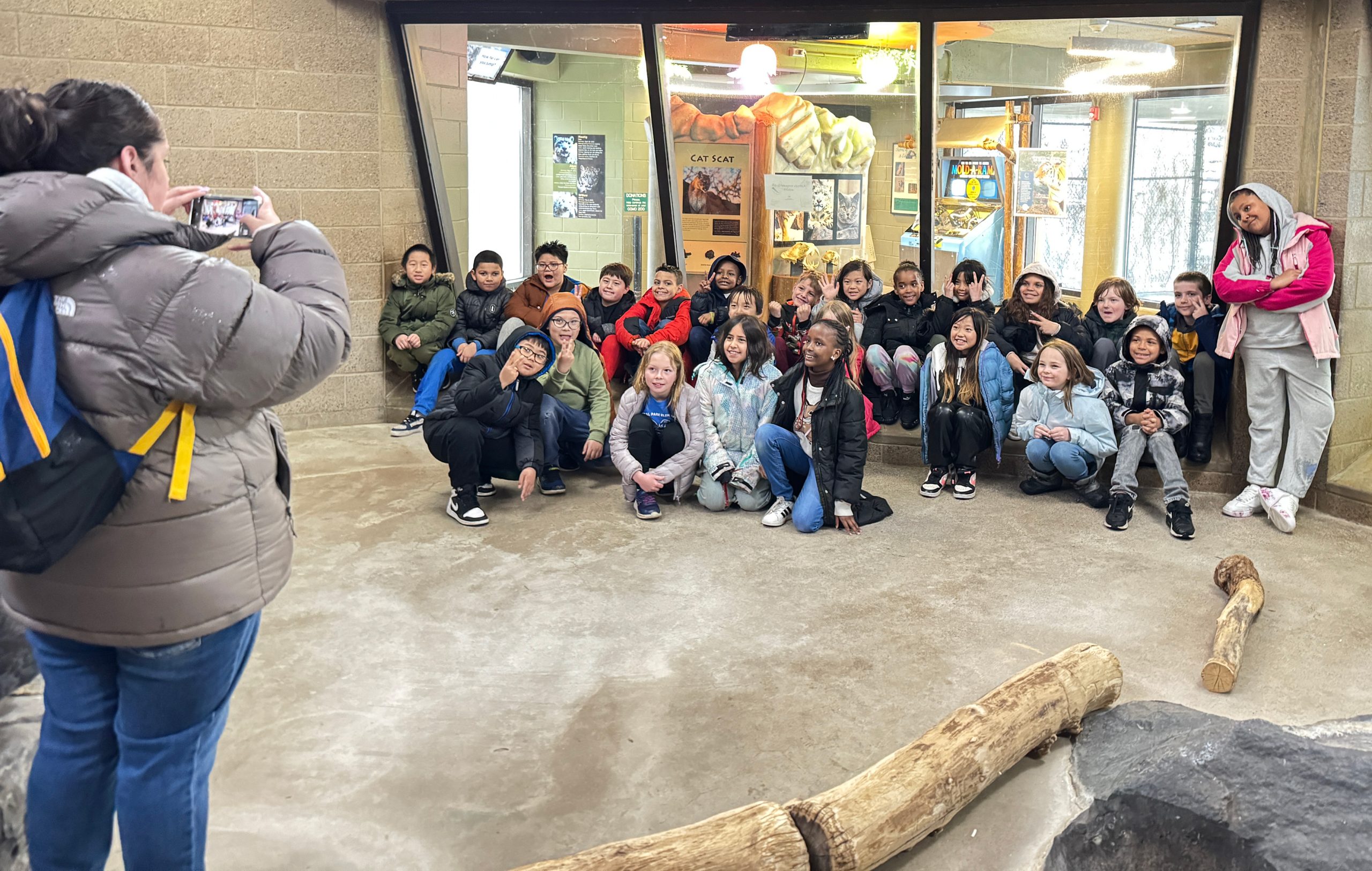

Meet Ray Watson, the Marjorie McNeely Conservatory’s new horticultural curator
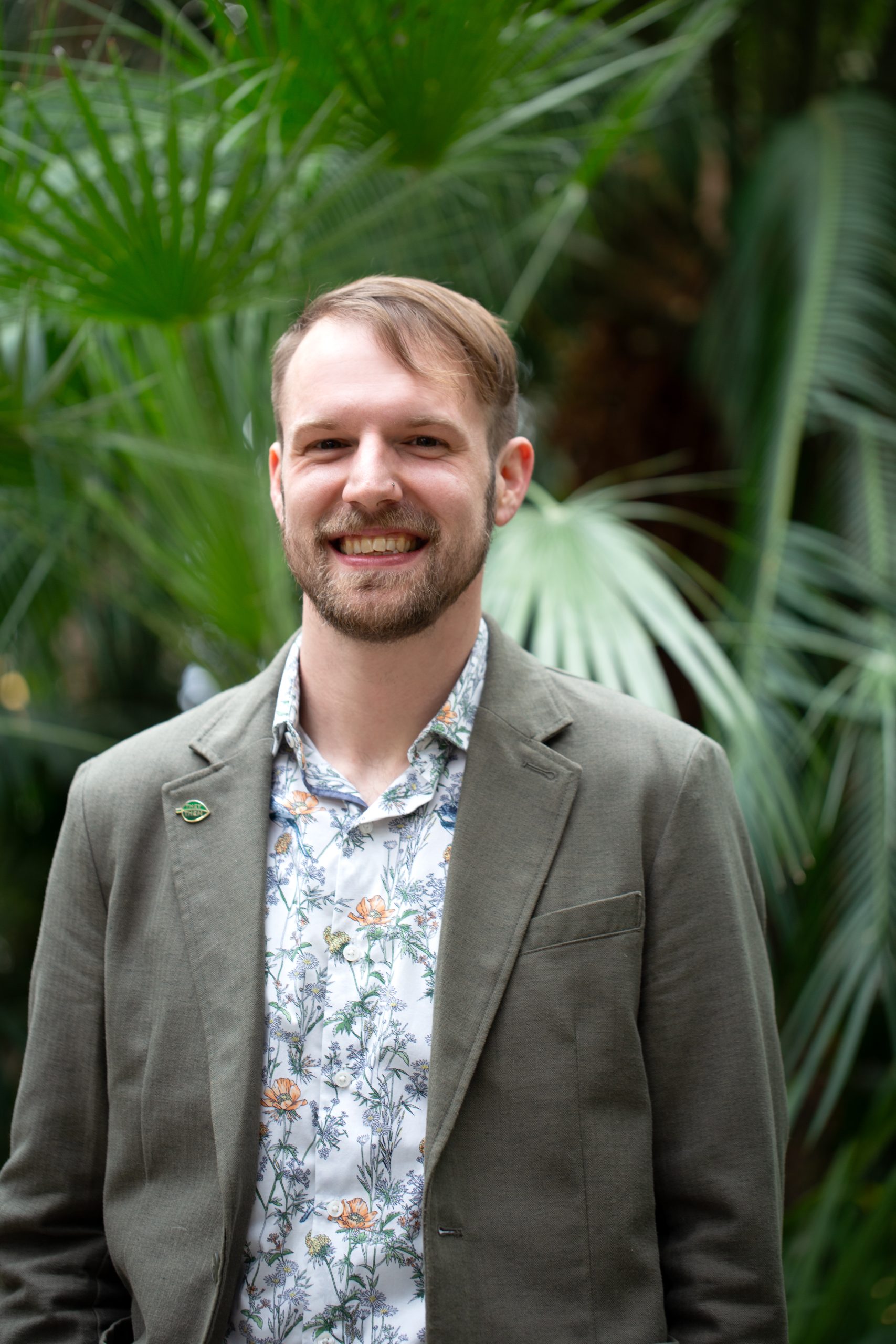
Since taking on the role as curator at the Marjorie McNeely Conservatory, Ray Watson has been impressed by just how passionate Como’s horticulturists are about the plants in their care.
“Within my first week here, every staff member I met apologized for gushing and going on about what they’re interested in, whether that’s staghorn ferns, or carnivorous plants, or orchids,” Watson says. “That enthusiasm is why the plants here are so beautiful and well cared for, and I think the passion that people who work here have for plants evokes something in visitors as well.”
Watson’s own passion for the conservation of living things has been the common thread on a career path that’s taken them from farm work and landscape design, to education and youth engagement, to genomic research and COVID science. “The Marjorie McNeely Conservatory is really fortunate to have found someone with Ray’s unique mix of skills and interests, from field conservation, to curriculum writing, to greenhouse operations,” says Como Friends’ president Jackie Sticha. “Their perspective will definitely help strengthen and grow the plant collections at Como, and how those resources connect visitors to our conservation mission.”
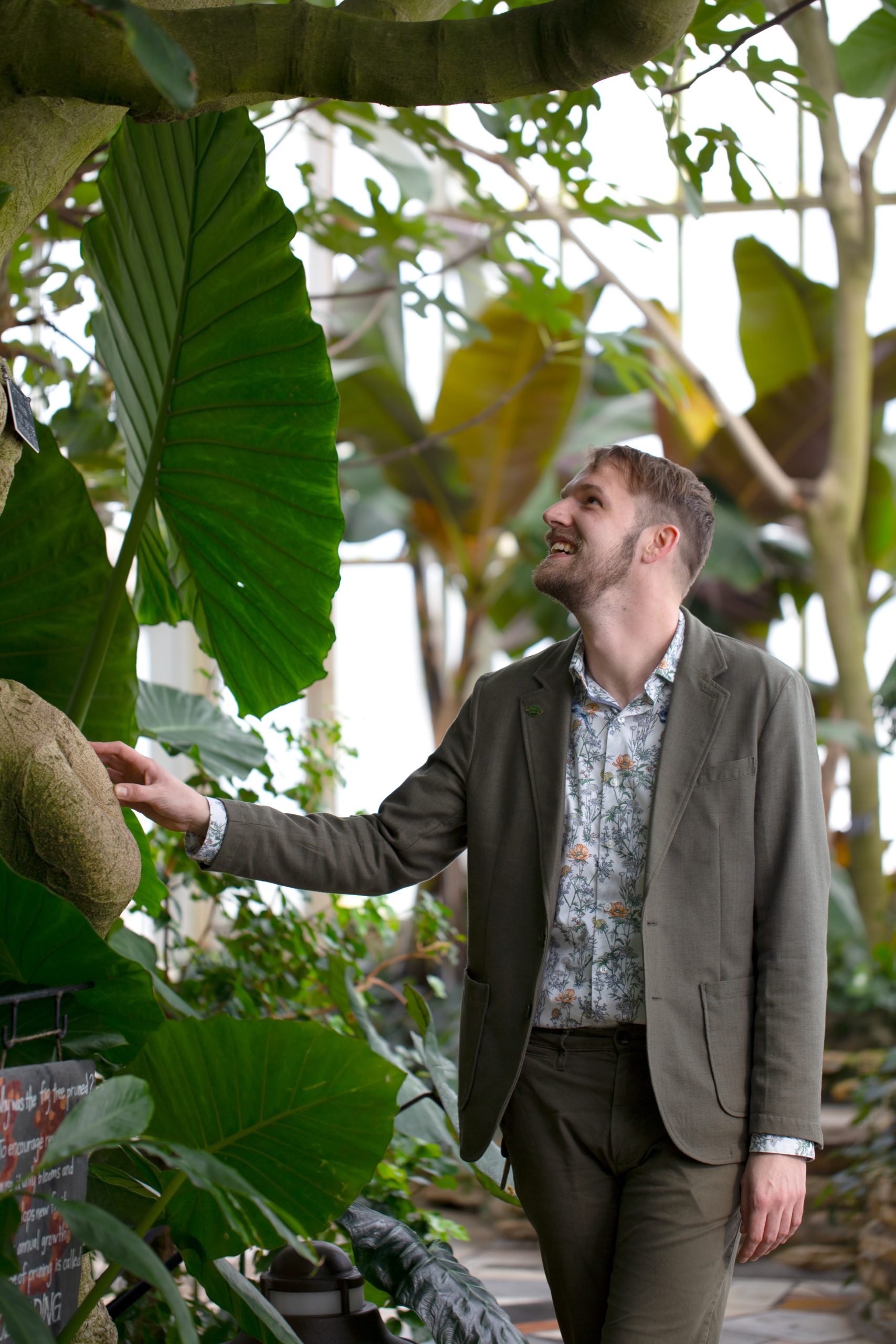
A graduate of Swarthmore College, Watson earned a double major in religious studies and biology, where their research focused on hormones and mating behavior in forked fungus beetles. In graduate school at the University of Virginia, Watson earned a master’s degree in Ecology and Evolution, diving deep into the genetic evolution of domesticated sunflowers. Watson also served as a visiting scholar at the University of California, Berkeley and worked as an educator with the Smithsonian National Museum of Natural History’s Youth Engagement through Science program, writing curriculum as well as collecting and managing research populations of teaching specimens.
Moving to Minnesota with their partner, Watson joined the University of Minnesota’s Genomics Center just before the start of the pandemic, going on to lead a team of researchers in developing COVID testing protocols. But a first visit to the Marjorie McNeely Conservatory’s North Garden inspired them to think about returning to plants as the focus of their work.
“Though I really enjoyed my role in research and development, during the pandemic, I realized that I was more of a public servant than a scientist,” Watson says. “This role really appealed to me because it was a marked shift toward providing that direct service to the public, using the resources that are available here from the city to benefit everyone in the community.”
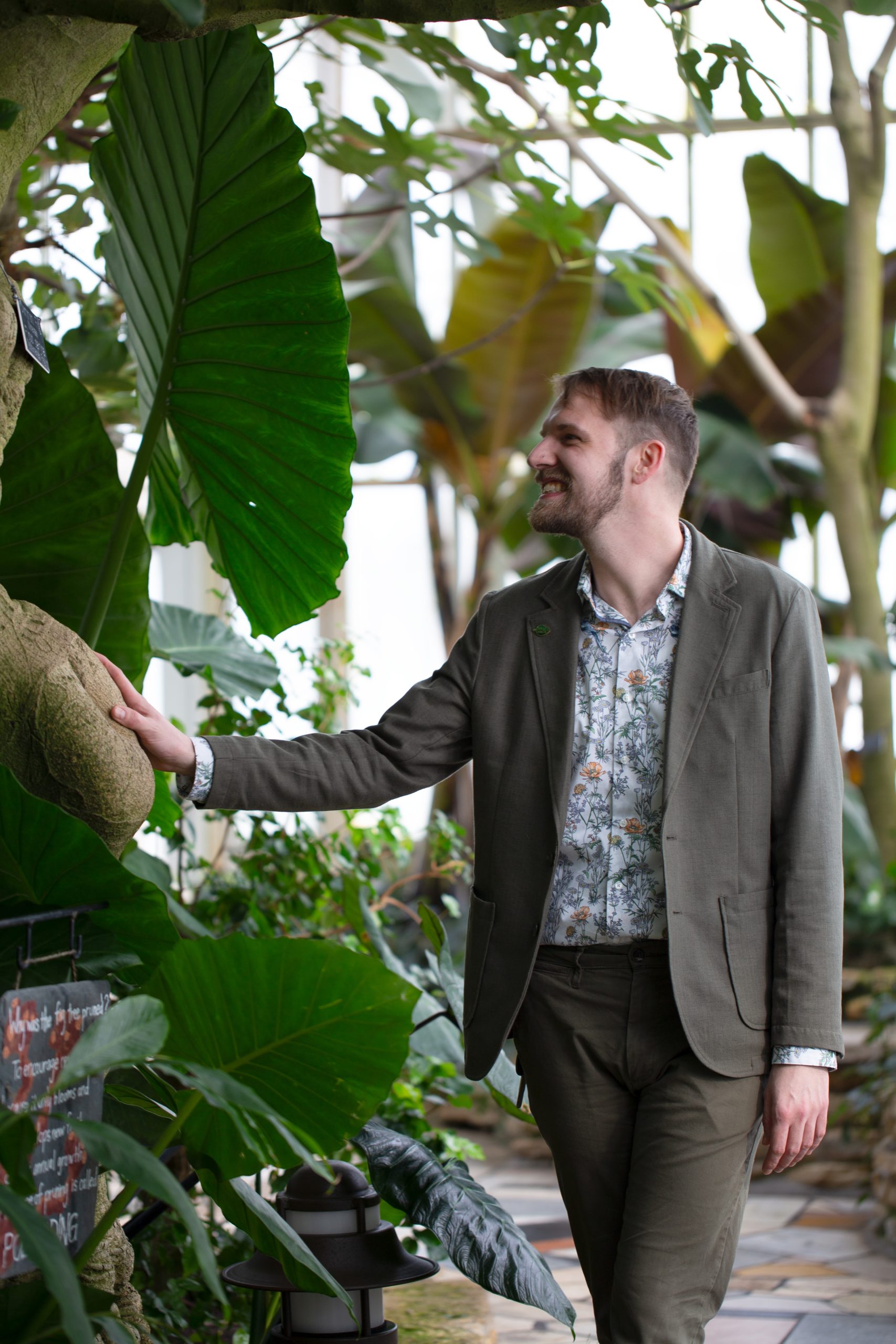
One of Watson’s favorite spots in the Marjorie McNeely Conservatory is the North Garden, home of a long-standing fig tree they’ve affectionately dubbed “Figaro.” To keep the fig from overgrowing its setting, the tree was recently pollarded by Watson and horticulturists Jennifer Love, Isaac Zaman, and Rylee Werden. Pollarding is an age-old system of repeated methodical pruning in which the upper branches of a tree are removed. The result is increased growth at the cut points and a dense head of foliage and branches. A pollarded tree has characteristic knobs at the end of the main branches, like you see today.
Thanks to your generous support, the horticulture team has a lift and other essential tools to carefully trim and maintain the beautiful trees throughout Como’s indoor garden spaces, keeping them healthy and vibrant for everyone to enjoy.
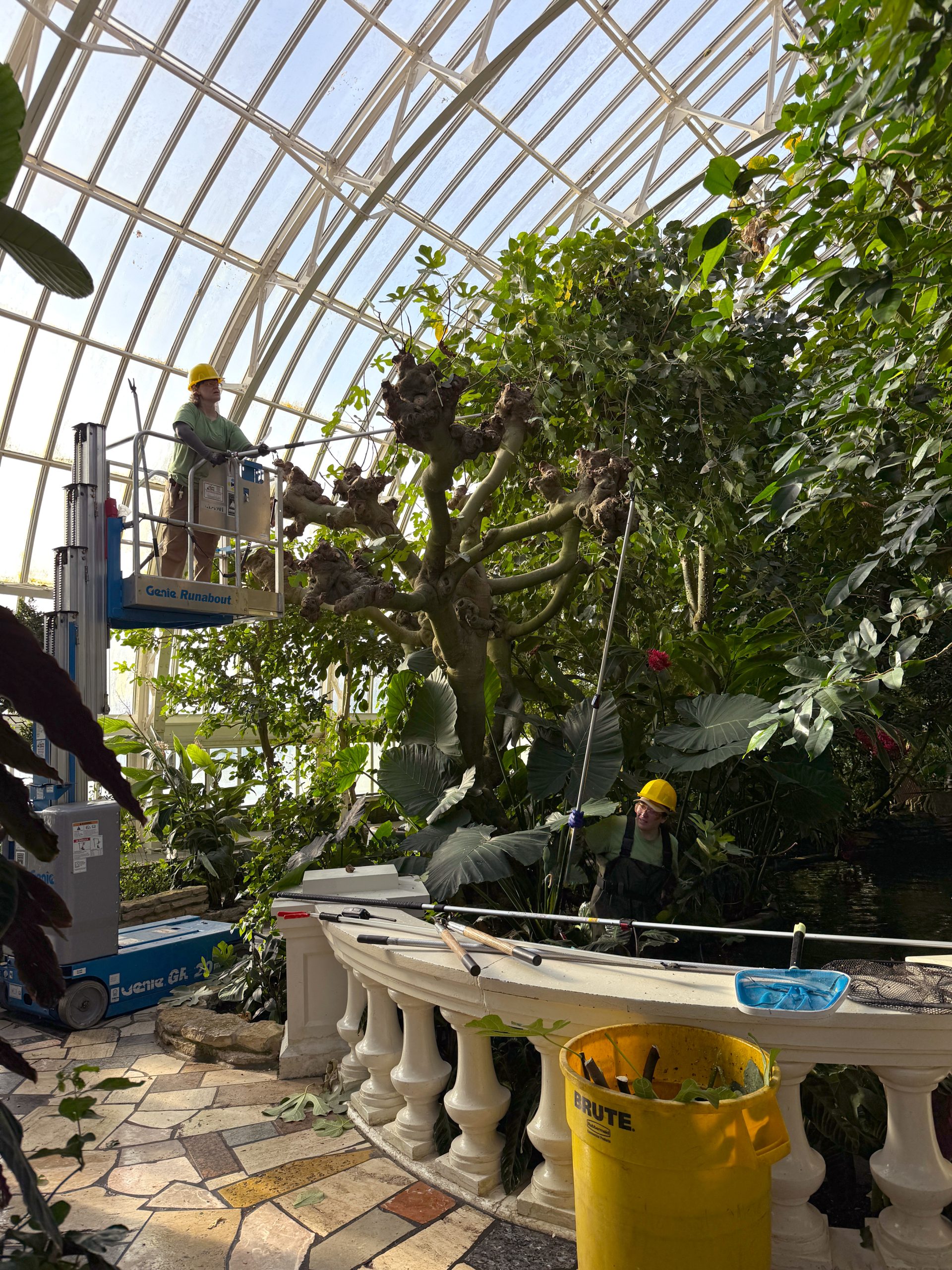
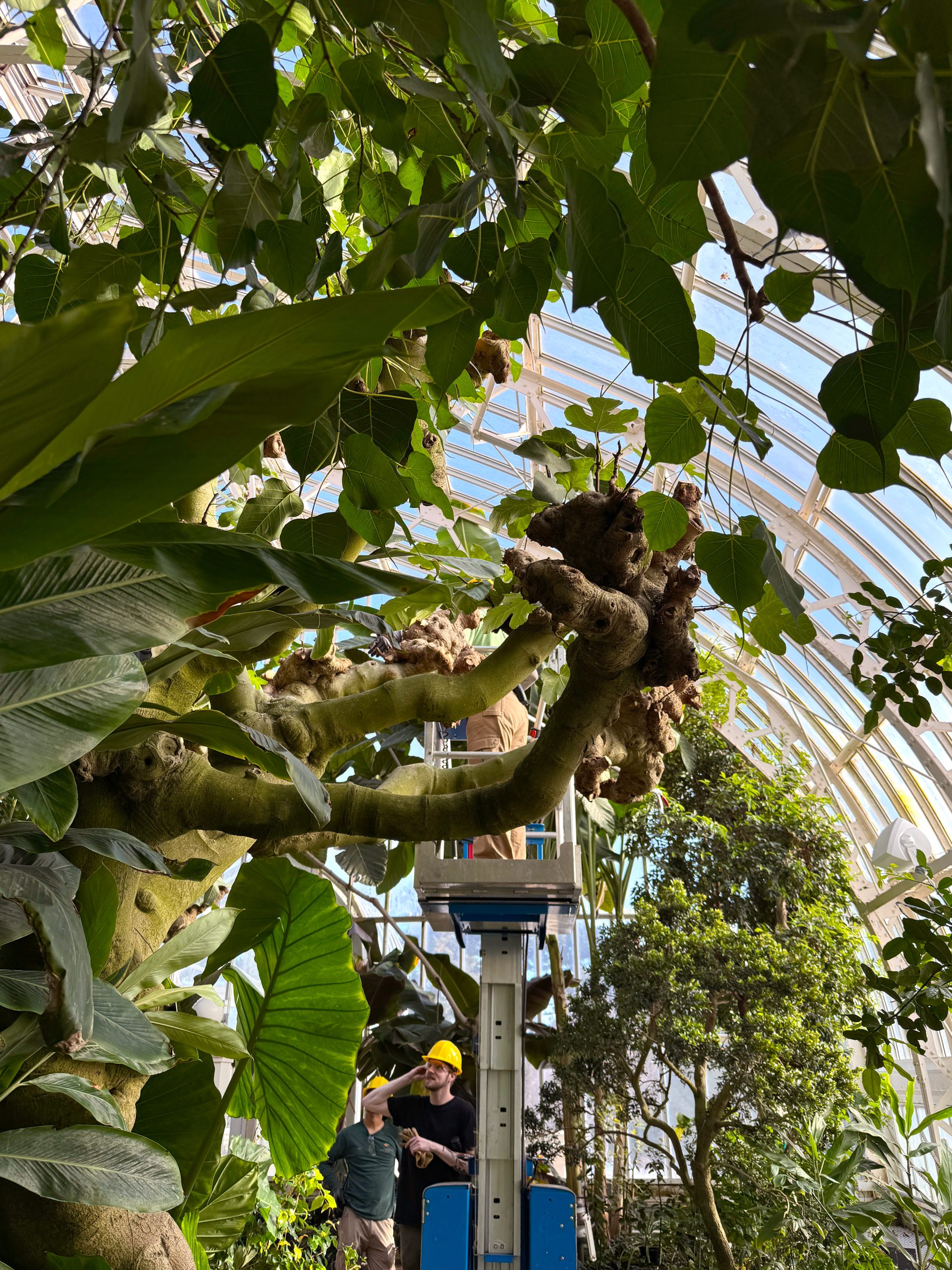
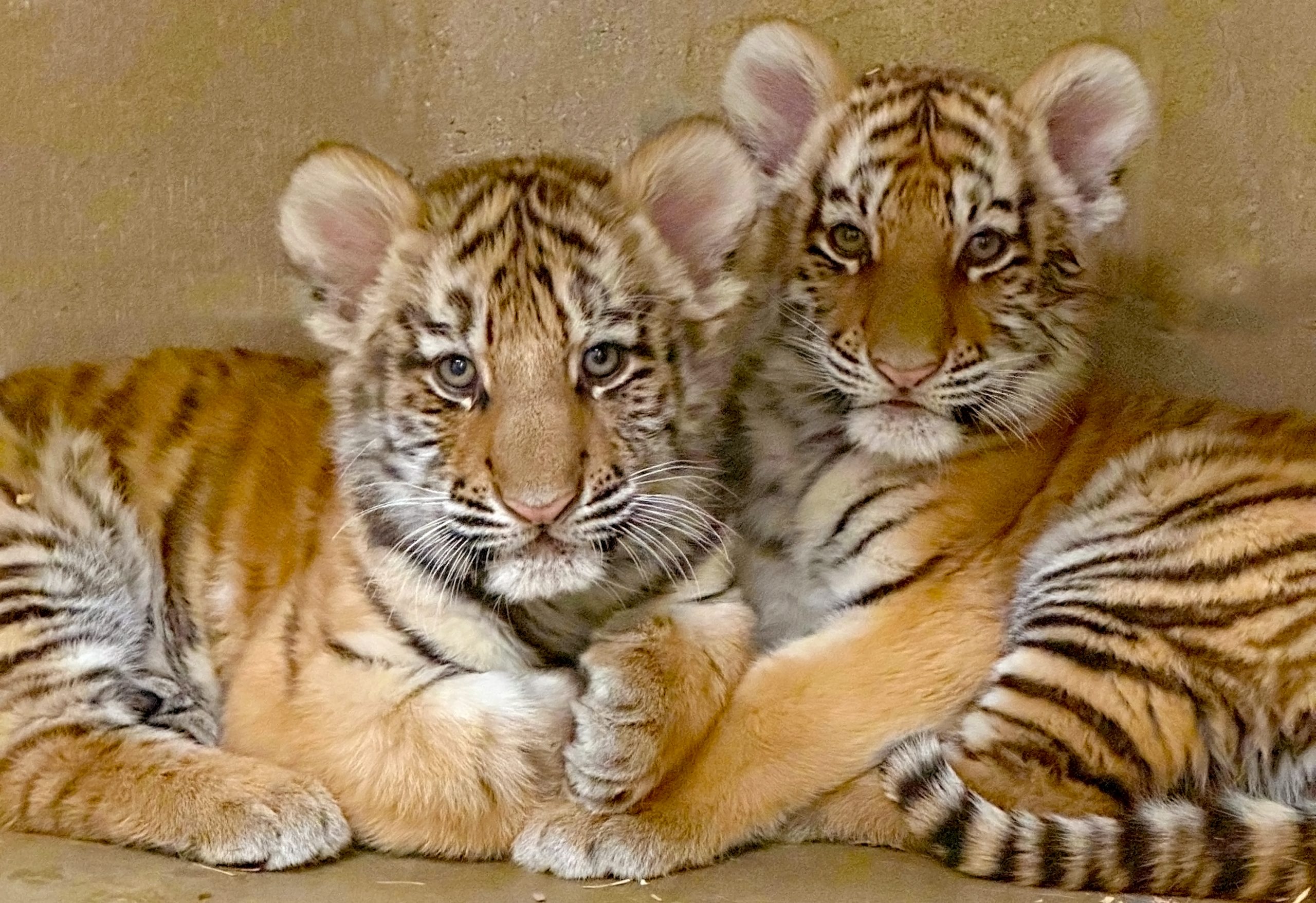
This winter, get to know a few of Como Zoo’s newest arrivals
Como long-time volunteers and supporters suggested the names for the two cubs—Maks (pronounced Max) and Marisa, both associated with strength and tenacity. The name Marisa is also a nod to Marisa Paulat, a retired Como cat keeper who was instrumental in the care of large cats during her 43 years at the zoo.
Marisa and Maks
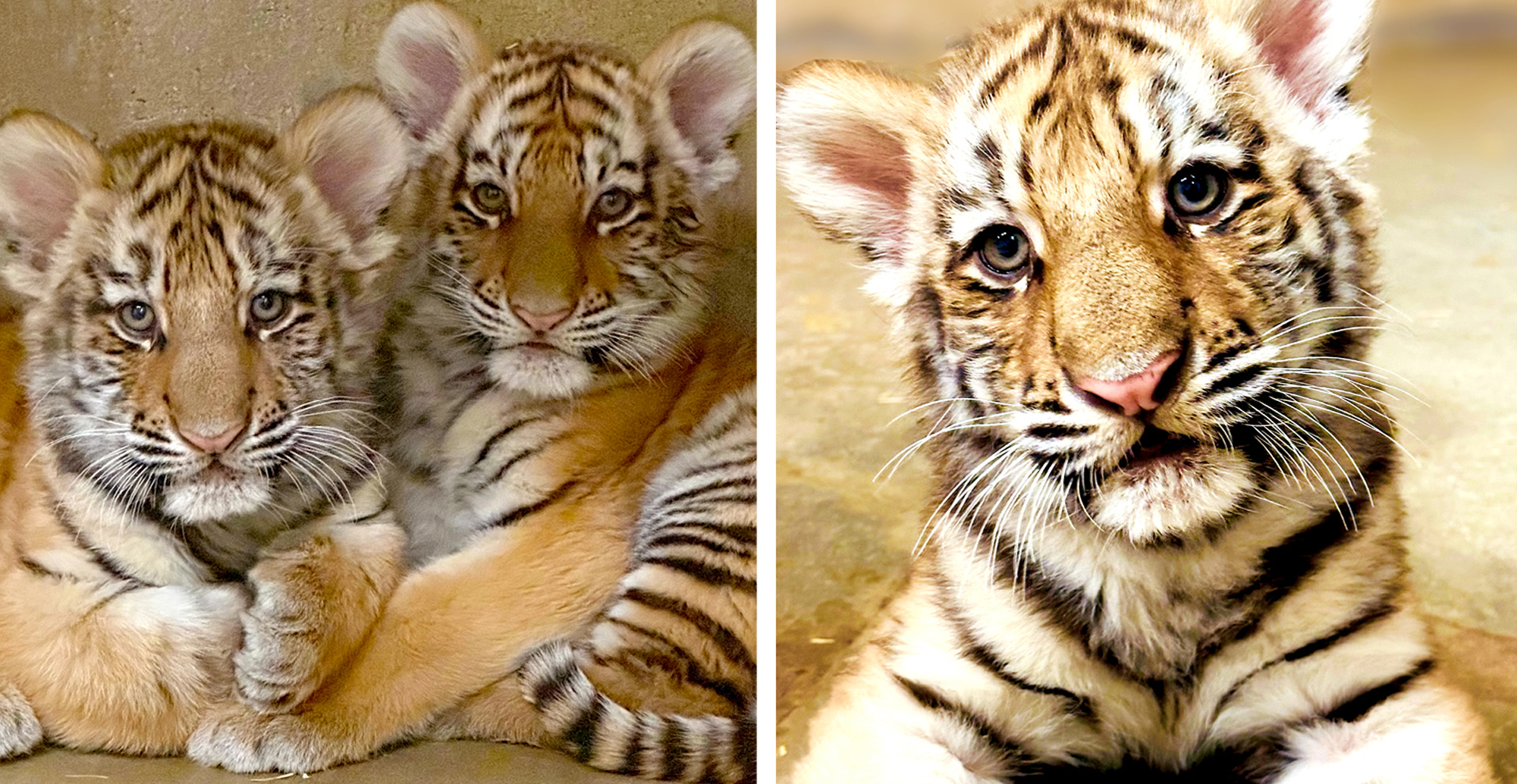
-
Amur Tigers
Marisa and Maks | With a diet composed entirely of other animals, tigers are one of the world’s most ferocious apex predators. But for new cubs Marisa and Maks, born at Como Zoo on August 29, it’s going to take a little more time before they fully embrace their places at the top of the food chain.
“You might think as large carnivores that they would just come to whoever had food but that’s not the case,” says Como Zoo senior keeper Jill Erzar. “Cats are very observant, so when they noticed their mom was a little uneasy seeing us at the beginning, they hung back and took it all in. But now Marisa gets so excited about being fed that she lets out the cutest little scream. The two of them are just incredibly adorable.”
The first tigers born at Como Zoo in more than 41 years, the tiger twins have spent the season bonding behind the scenes with their mother, Bernadette, and growing accustomed to their keepers, who’ve been introducing the playful pair to new enrichment items. “We started with really small things, like squash and pumpkins and cabbages and easy things that they could sink their little claws into,” Erzar says. “Now they’re at the point where they love cardboard boxes—they rip them apart and run from place to place dragging the shreds behind them.”
The cubs represent a significant success story for the Amur Tiger Species Survival Plan (SSP), a program of the Association of Zoos and Aquariums (AZA) aimed at the conservation and management of this critically endangered species. “This is a significant milestone for Como,” says Michelle Furrer, Como’s campus manager. “The birth of these tiger cubs showcases the dedication of our animal care team, and the naming process has strengthened the bond between our animals, staff, and the amazing volunteers who work tirelessly to support Como Park Zoo & Conservatory.”
Large cat keeper Hans Jorgensen says the cubs notched an important milestone in December, and have now received all the vaccinations they’ll need for the year ahead. “They’re huge, they’re unhandleable, and they’re healthy, which is just what you want to see,” he says. The twins are expected to be big enough to begin exploring their outdoor habitat in early spring.
Willow
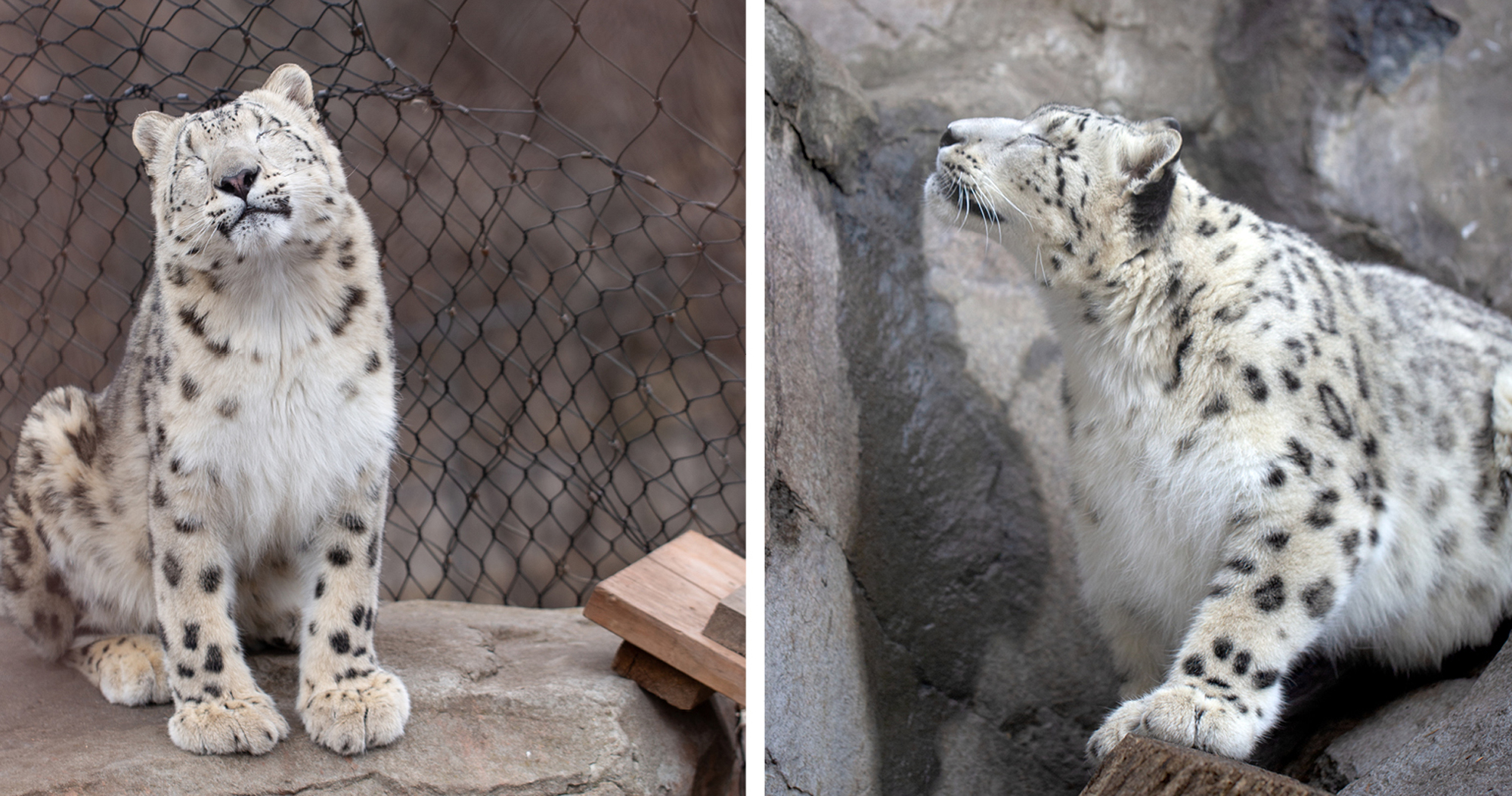
-
Snow Leopard
Willow | Como Zoo’s youngest snow leopard has been making leaps and strides learning about her habitat, thanks to two new ramps that now make navigating a little simpler for her. Born blind, Willow was introduced to her outdoor habitat last spring, climbing to the upper reaches of the rock structure. With all the food, water and shelter she needed to be comfortable, she chose to stay there for weeks, causing concern from some visitors, but not for the keepers who know her best. “Willow was at an age that we needed to let her start figuring some things out for herself, and she quickly became very comfortable with the upper section of the exhibit, and so she did not feel there was any need to try and explore more to get down at first,” explains large cat keeper Hans Jorgensen. To help teach her how to shift, keepers Jorgensen and Caitlin Allessi came up with a ramp system to help ease her transition between the inside and outside of her exhibit, a solution that Willow embraced with ease. “Within 36 hours, she’d figured it all out, and now we like to brag that she’s our best shifter,” Jorgensen says. Seeing the young snow leopard build confidence and awareness of her surroundings has been exciting to watch, says Allessi. “She moves around so well you’d never know she’s blind, which is really nice to see.”
Walter
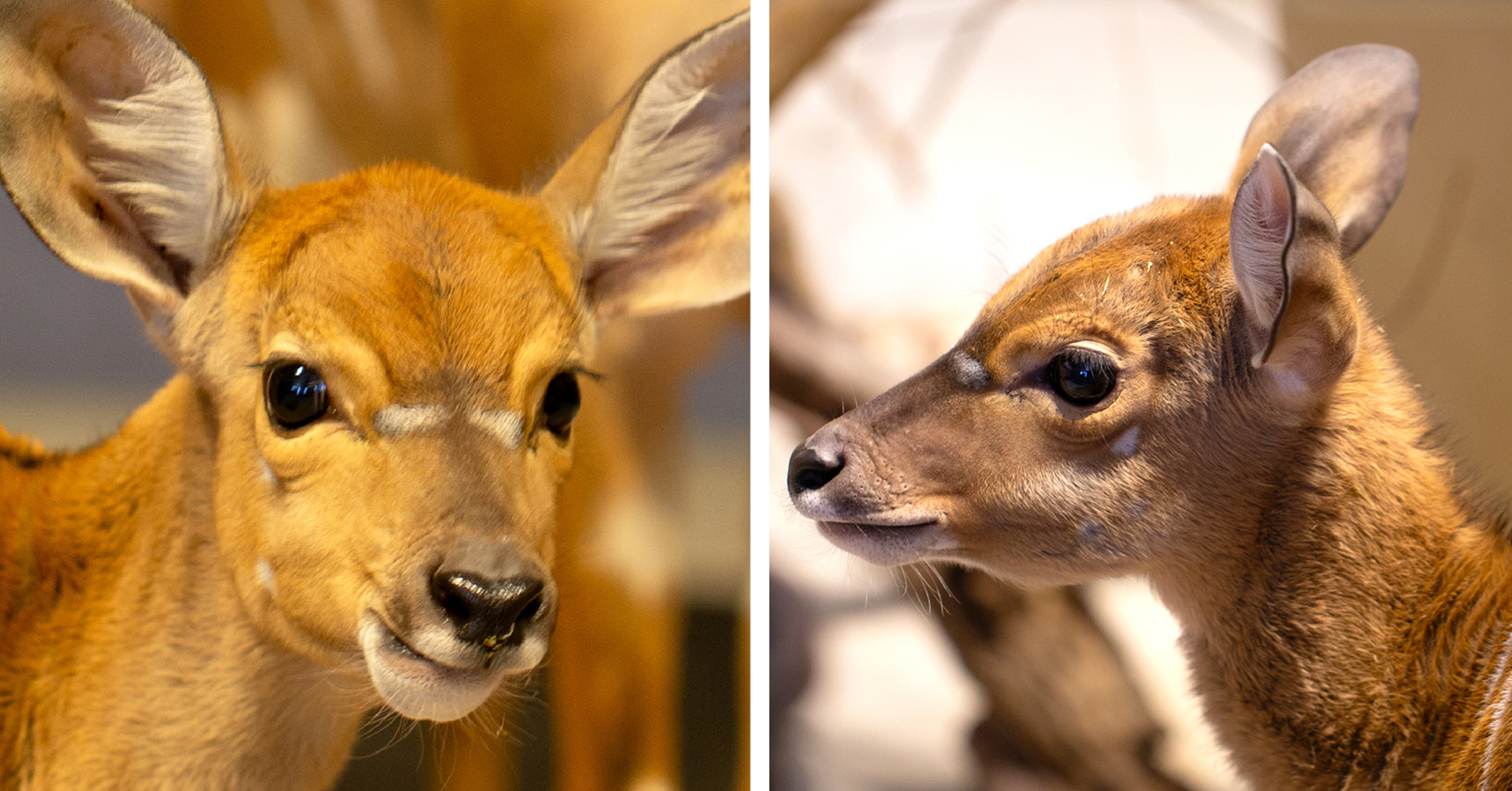
-
Nyala
Walter | Weighing in at just 14 pounds in September, it’s taken newborn nyala Walter just a few months to triple his weight—a growth trajectory seen in the wild, too. “Female nyala like Walter’s sister Meadow will typically stay with their mothers for life, but males will often leave their natal herd around six or seven months and can be reproductive fairly early on,” Erzar explains. Males are also known for developing the nyala’s distinctive spiral horns and darker coat. Walter, whose name was chosen by Como Friends donors on Give to the Max Day, is the second offspring for mother Stevie and father Stanley, who passed away in January.
Yoshi
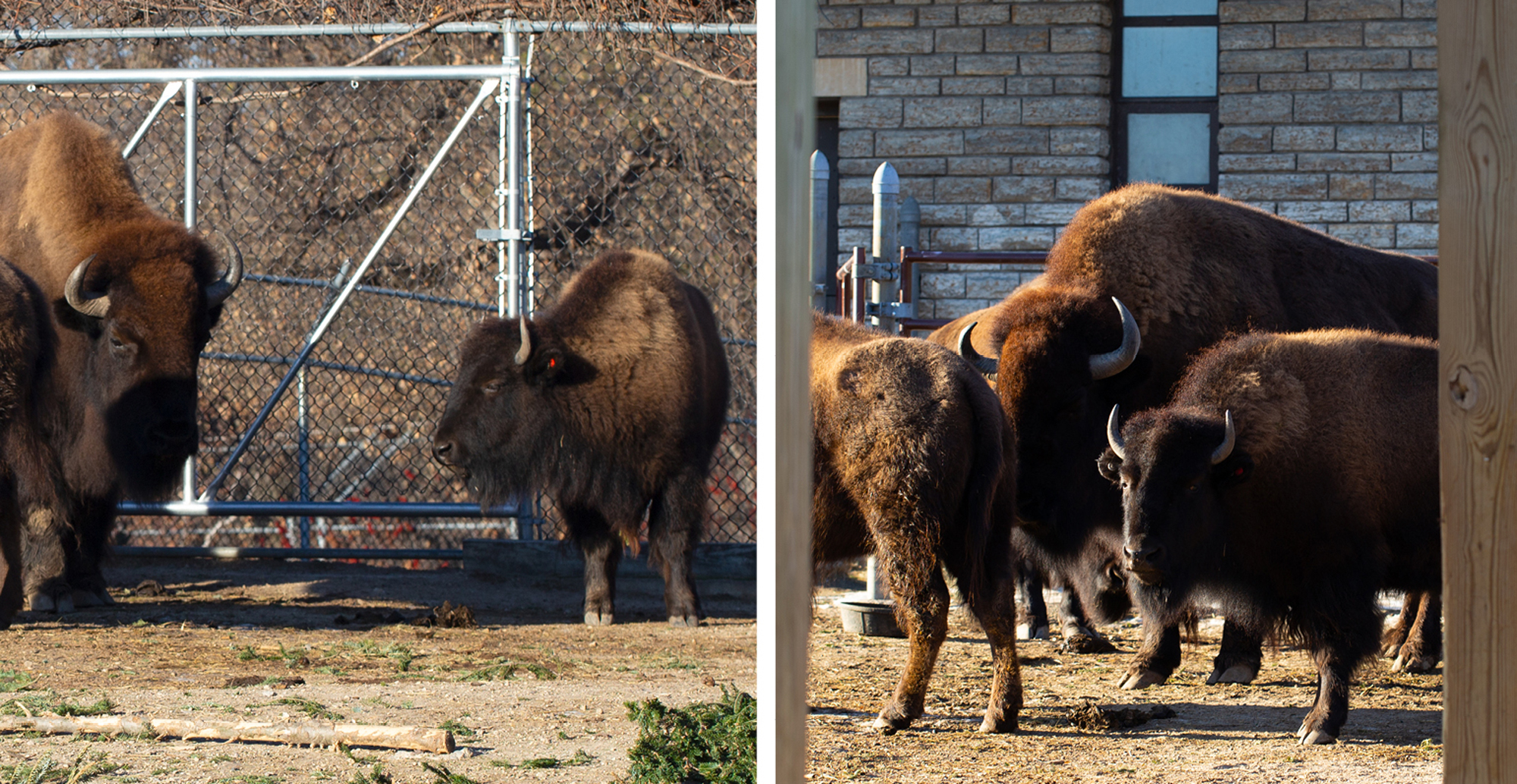
-
Bison
Yoshi | When one-year-old Yoshi arrived at Como’s bison habitat in January, it took her no time at all to bond with two-year-old Ruby, another young bison from Minnesota’s Bison Conservation Herd. “They were very excited to meet each other initially, and when you visit the zoo, you’ll see them side by side,” says keeper Aaron Nelson. “Because they’re both young, and have been in a larger herd setting, you’ll also see some more natural behaviors out of them, like one we call bluff charging, to establish dominance over us.” While Como Zoo’s hoofstock keepers have a healthy respect for the young bison, who will grow to be over 1,000 pounds, “we also think it’s pretty cute, that little bit of attitude and spunk. They’re letting us know that they’re big, and they’re in charge.”
Reggiano and Ilsamar
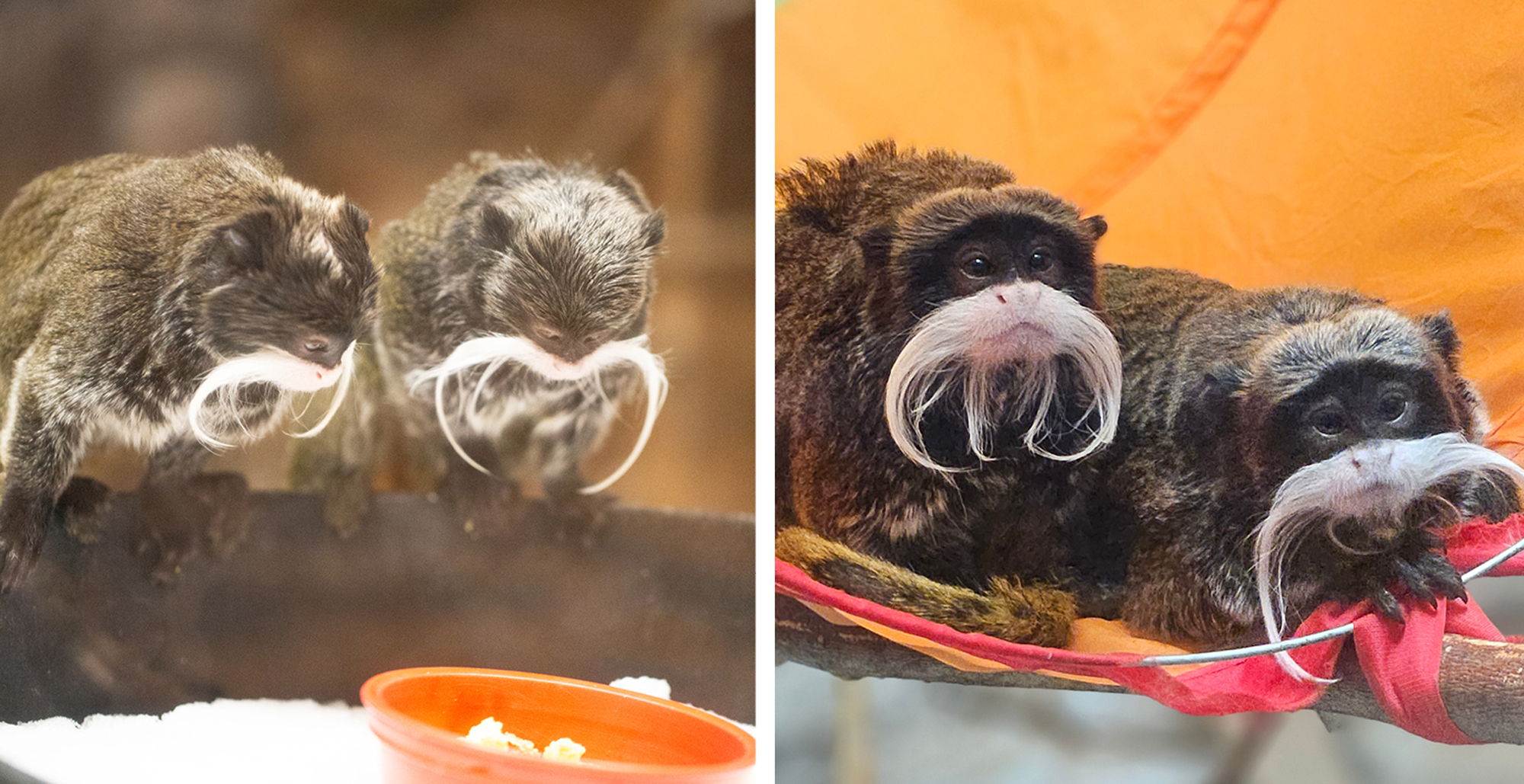
-
Emperor Tamarins
Reggiano and Ilsamar | Trying to guess the gender of Como Zoo’s emperor tamarins can be a bit tricky—the males, females and young of this endangered species all have very distinguished mustaches. This season Como welcomed two new individuals—Reggiano, a 3-year-old from the Buttonwood Park Zoo, and Ilsamar (Ilsa), a 2-year-old from the Dallas Zoo—as a new breeding pair put together by the AZA’s Species Survival Plan. While it’s too soon to say if their partnership will be a success, primate keepers have observed breeding behavior between the two.
Snow Cone
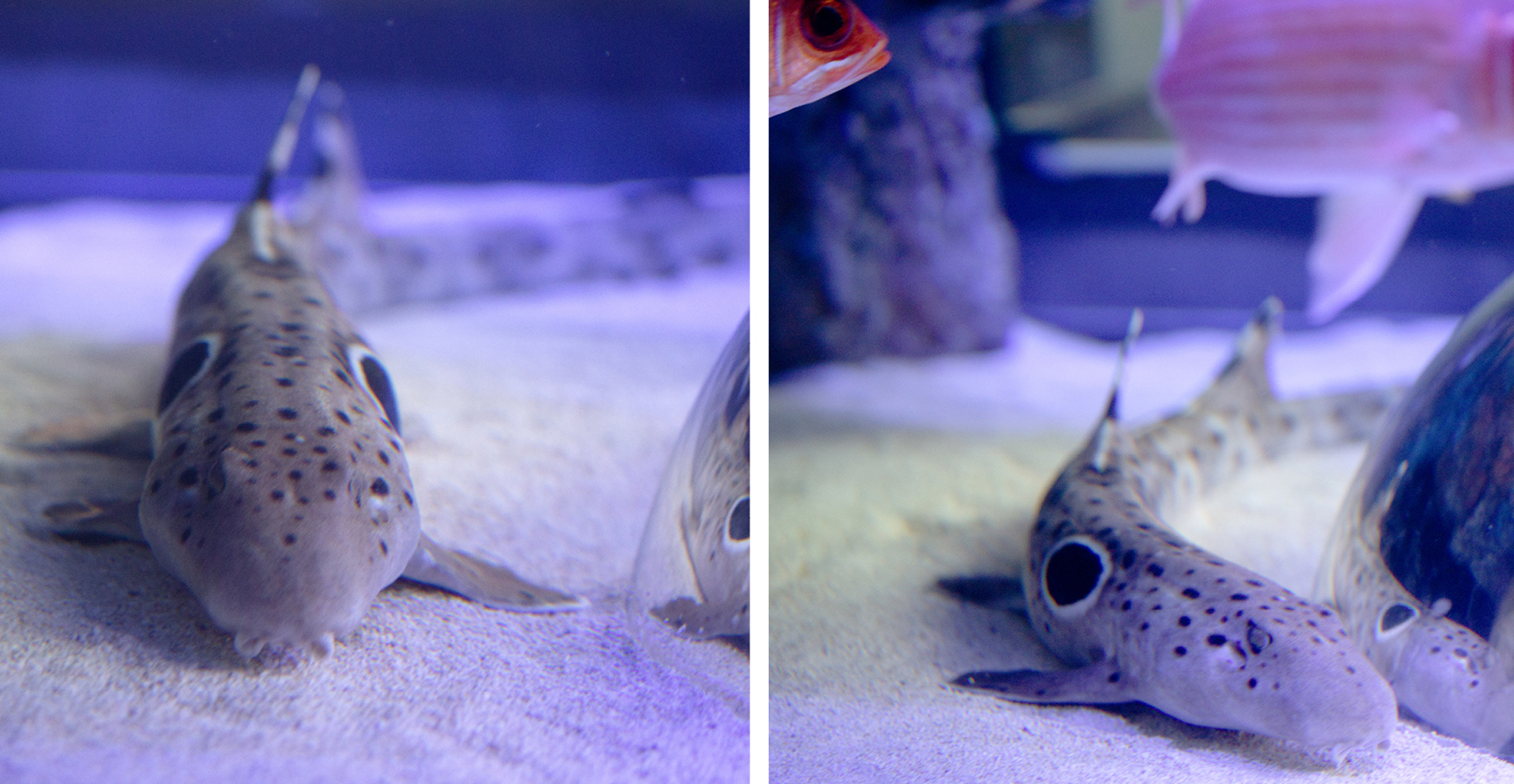
-
Epaulette Shark
Snow Cone | The newest resident of Como Zoo’s Aquatic Animals Building is Snow Cone, an adolescent epaulette shark. Now living in the building’s largest new tank, visitors can see that this nocturnal shark species exhibits some surprising behavior—appearing to “walk” across the ocean floor with its fins. A denizen of isolated tidal pools, epaulette sharks have adapted to survive severe oxygen depletion by shutting down some neural functions.
Moutig
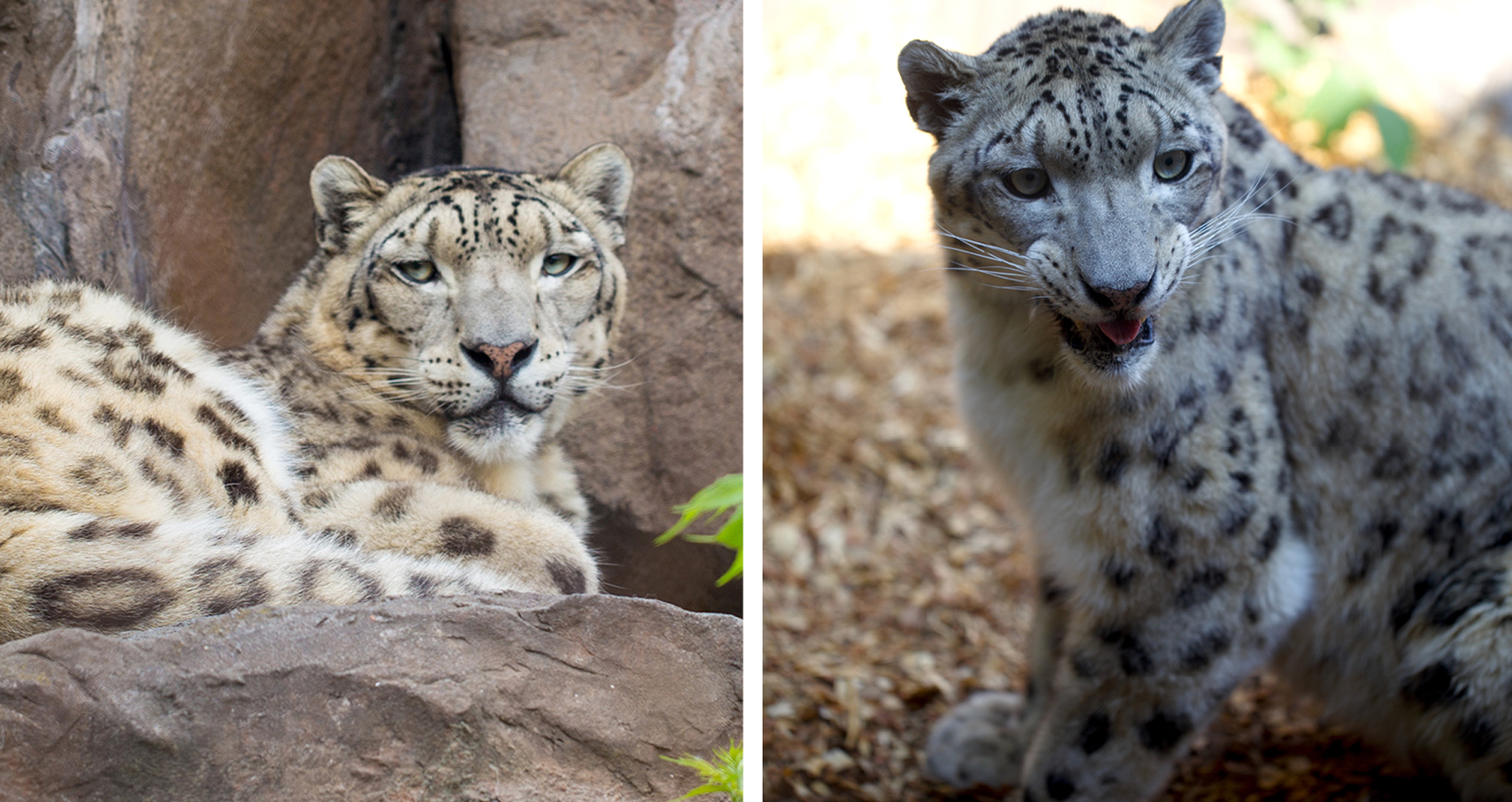
-
Snow Leopard
Moutig | And finally, one familiar face at Como Zoo is about to make a move. Male snow leopard Moutig will be moving to the Bronx Zoo as part of a breeding recommendation for this endangered species. A curious cat known to keepers for his distinctive vocalizations and his strong dislike for Como Zoo’s neighboring lions, Moutig first came to Como Zoo in 2016 from France as part of an international effort to diversify the genetics of European and North American snow leopards, and was selected to make this move by representatives from the snow leopard species survival plan. While keepers Hans Jorgensen and Caitlin Alessi are sorry to see him go, Jorgensen jokes, “He’s a big city cat, and with his vocalizing he could make it big on Broadway.” Au revoir Monsieur Moutig!
As the 2025 Winter Flower Show at the Marjorie McNeely Conservatory opens this week, many visitors will enjoy their first glimpse of the new accessibility improvements recently made to the Sunken Garden. Knowing that so many eyes would be on the space after its two-month closure, horticulturist Katie Horvath decided to create a floral design scheme that would give visitors a very warm welcome back.
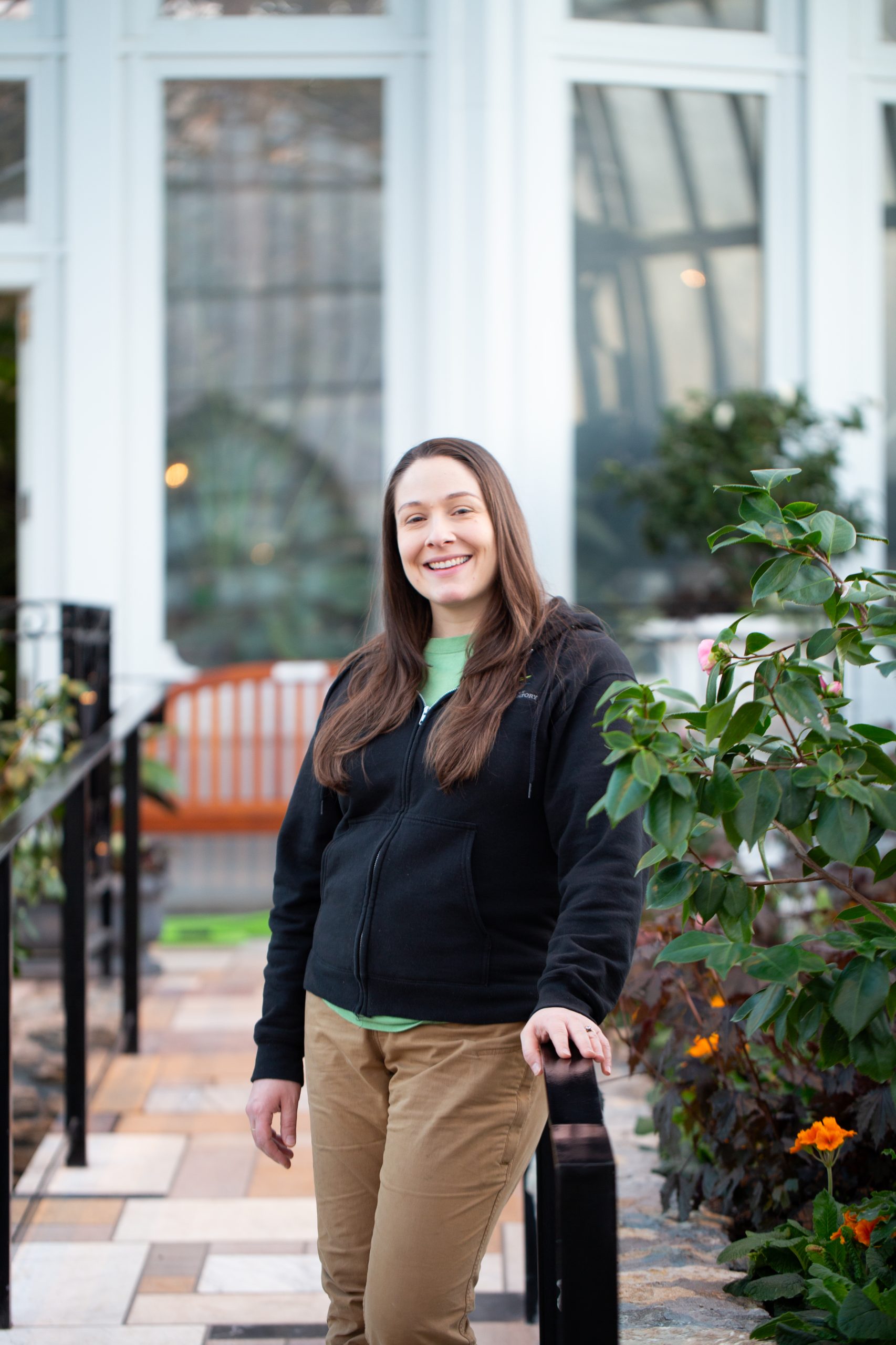
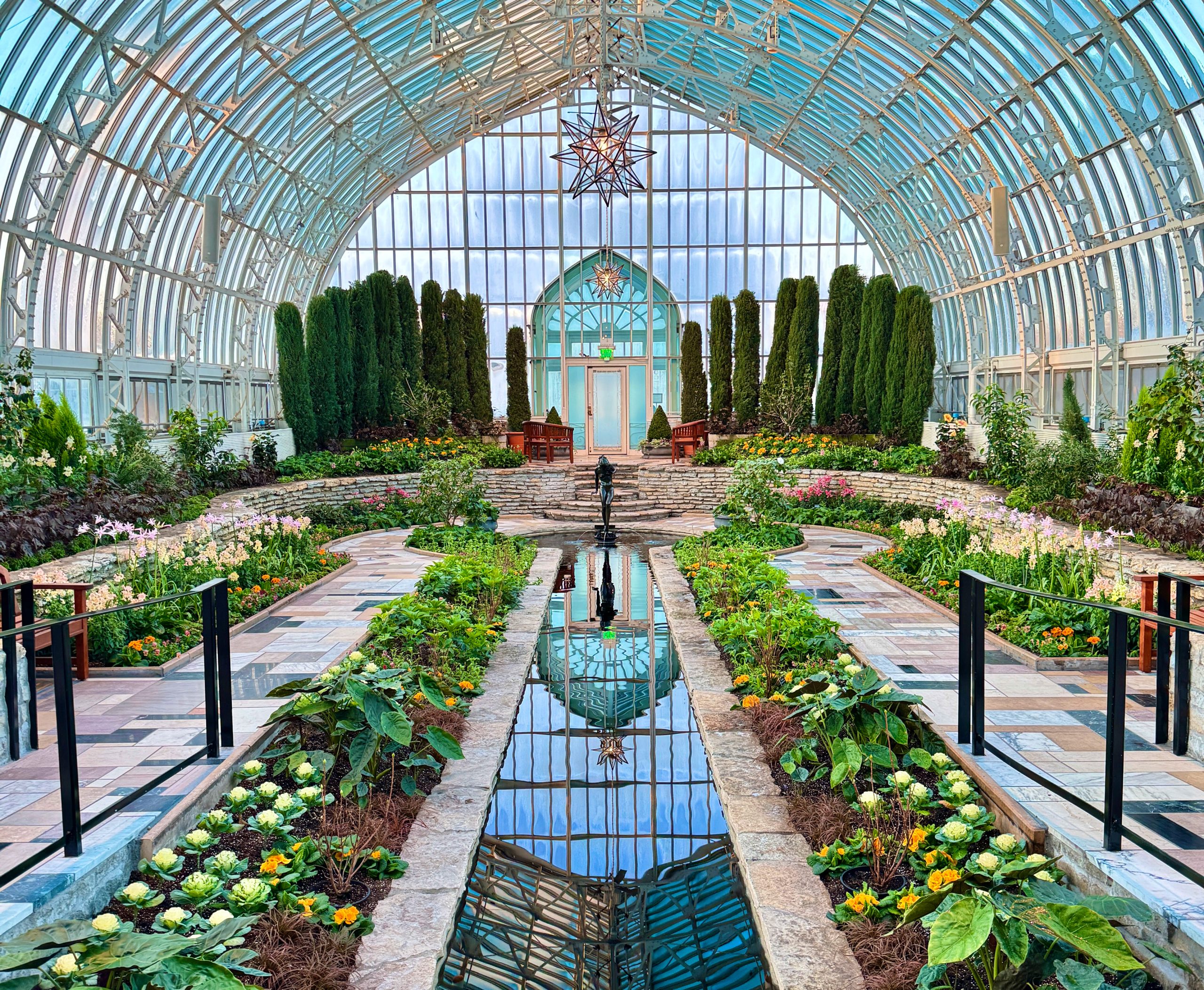
“Winter can be a time for those cooler, icier colors, which are beautiful, but when I got to thinking about what I like best in winter, it’s about finding those warm, cozy spaces,” says Horvath. “Walking in to find warmth in the middle of winter became my goal for the garden’s design.”
This is Horvath’s first design for the Sunken Garden, a process she started more than a year ago to guarantee that featured flowers like the primrose would have the time required to start from seed and go through a lengthy cold-weather germination process. She also spent time exploring more tropical color tones than are typical in wintery botanical gardens. “I looked at ways of combining a lot of oranges and yellows and peachy sherbet-type colors, with mixtures of cherry and caramel and a lot of really pretty deep reds.”
Among the standouts are the hibiscus mahogany splendor, a peachy dalmatian foxglove, and a mix of buttery and dainty chantilly salmon snapdragons, and pilea Moon Valley with its distinctive kiwi- and bronze-colored leaves. Como’s production greenhouse also cultivated the charming sweet pea vines climbing up the trellises installed throughout the garden.
The other star of the show will likely be the new pedestrian ramps that now lead to the garden, improving access for guests with strollers, walkers, wheelchairs and other mobility challenges. “Change isn’t always easy,” Horvath says about the nearly 100 years of memories contained in Minnesota’s most beautiful room. “But hopefully when people get back into the Sunken Garden they’ll appreciate how amazing the space is, and just how amazing plants are.”
Thanks to your contributions to Como Friends, Como’s five seasonal flower shows are always free to visitors. The Winter Flower Show is open daily from 10 a.m. to 4 p.m. through March 16, 2025.
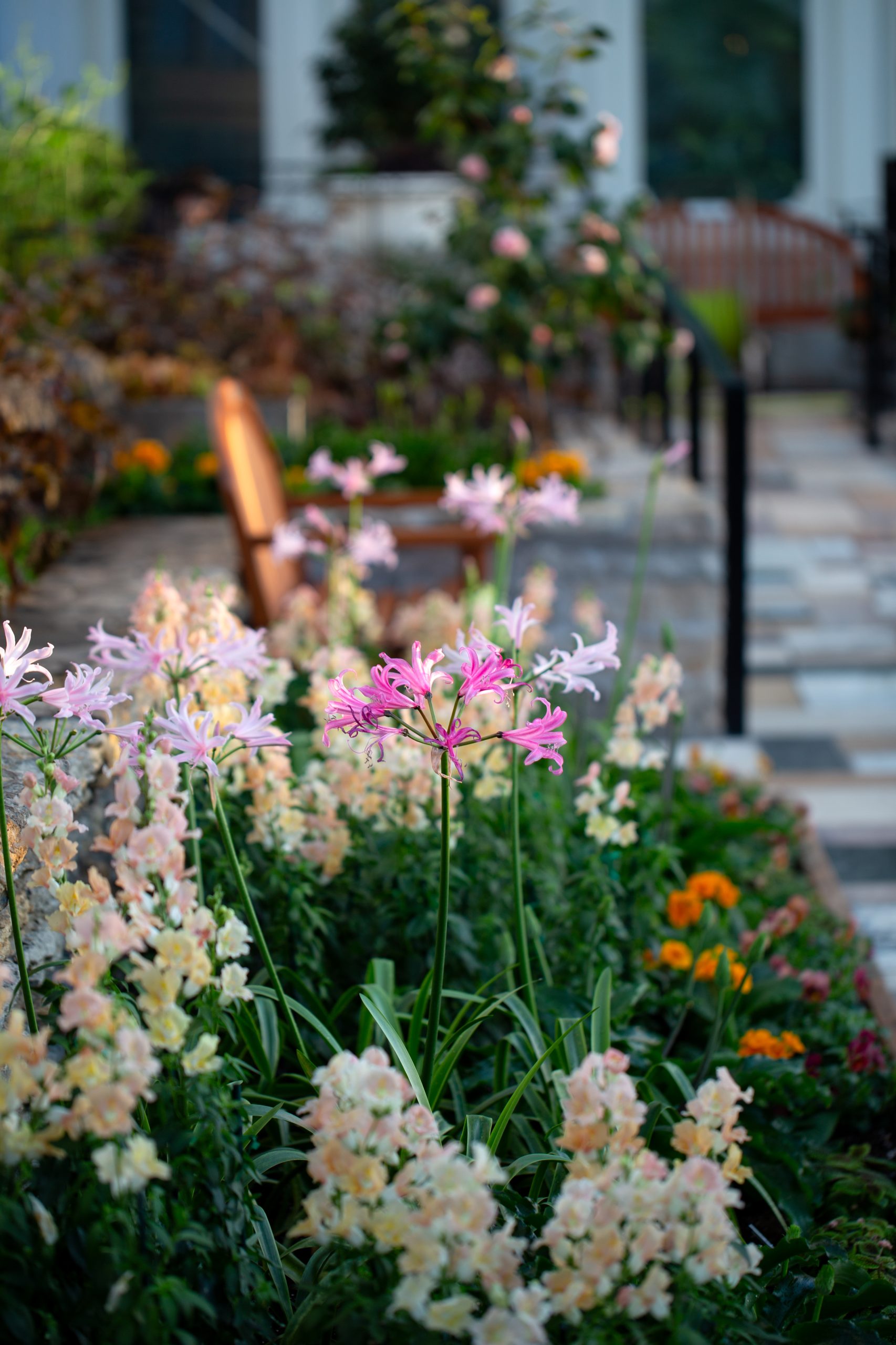
“I really do feel the weight of how important it is for this space to reopen. I’m excited and incredibly proud to have grown these flowers and plants, designed the show, and finally planted the mixed beds again. But I also recognize how challenging it is, so I do feel a bit nervous about that. At the same time, I just think plants and flowers are incredible. When people walk into the Sunken Garden and see everything we’ve been cultivating, I hope they’ll appreciate it for more than just the structural changes in the space. I know this will be a big deal for some people—change can be tough, and there are a lot of changes in there. The space is going to feel new and different, and while the ramps and other elements may not be what some are used to, I’m hopeful that the beautiful plants and flowers surrounding them will make those changes feel easier to embrace.”
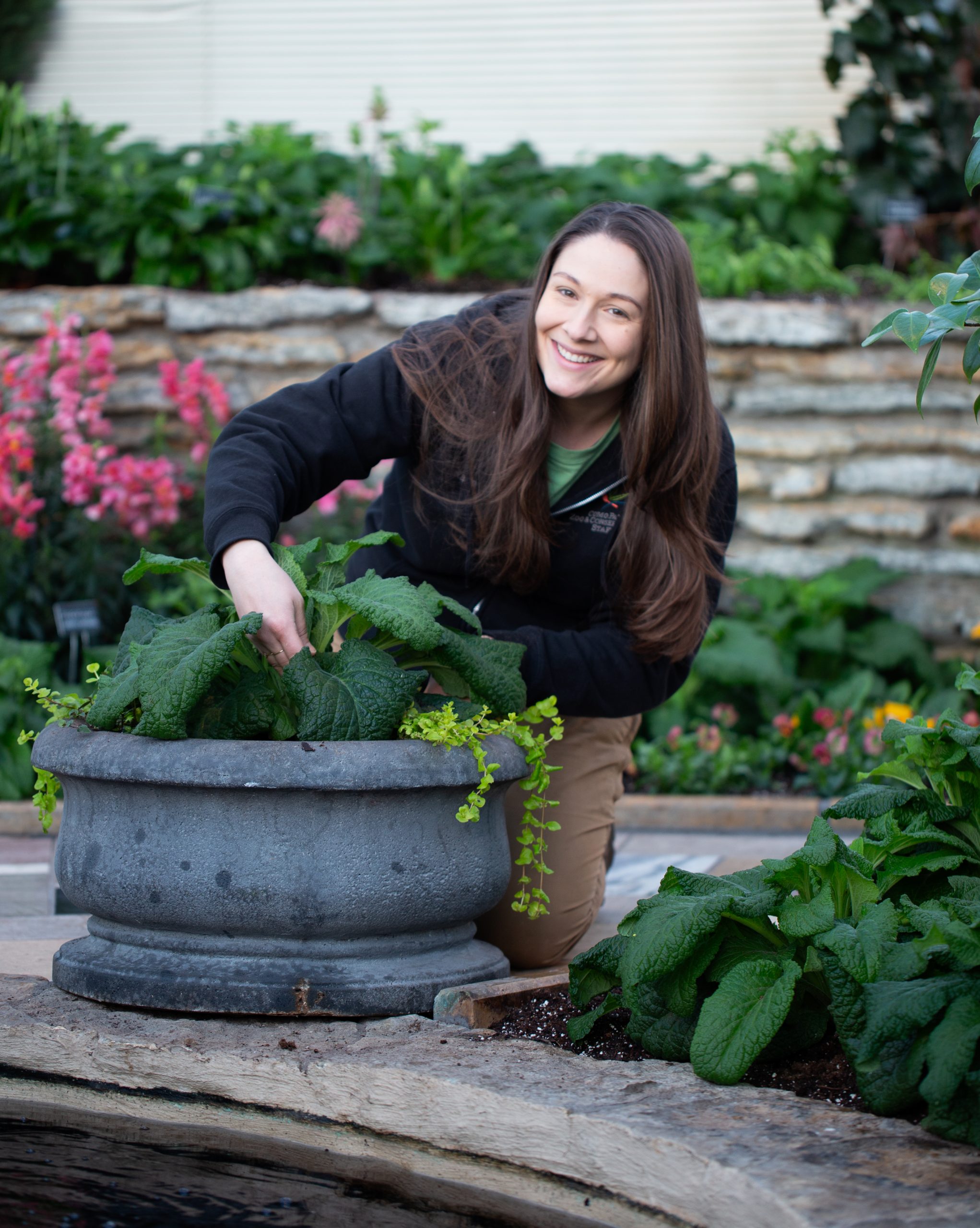
Making Minnesota’s most beautiful room more accessible for the future

For one of the first times in its century-long history of service, the Marjorie McNeely Conservatory’s Sunken Garden closed to the public earlier this winter to allow for the construction of two pedestrian ramps that will make the space more accessible to visitors. The brief closure also gave Como the chance to give the wing—a favorite Twin Cities wedding destination—a little extra sparkle. As the new and improved space reopens to the public this season, here’s a look at some of the features that make the Sunken Garden so special to so many.
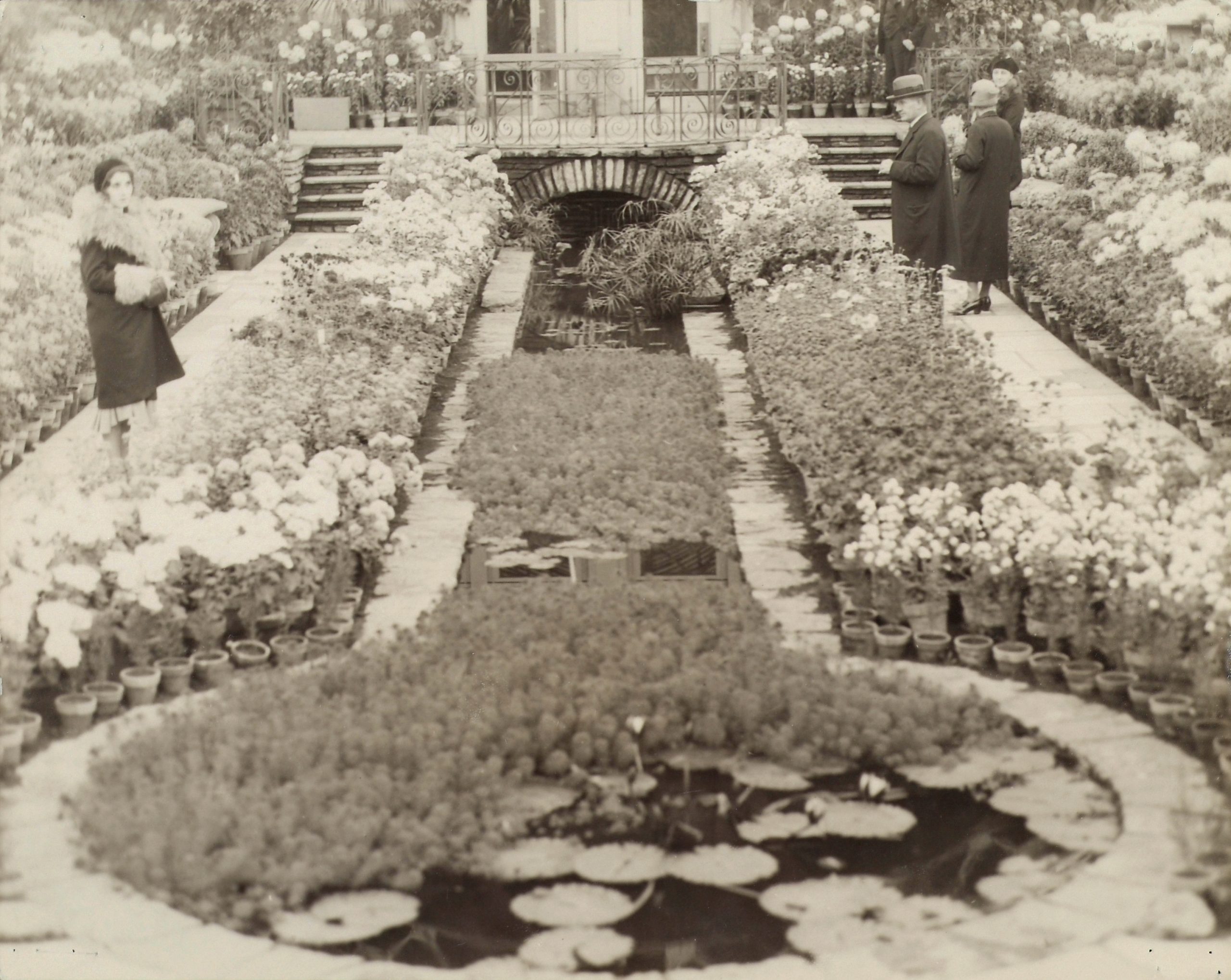
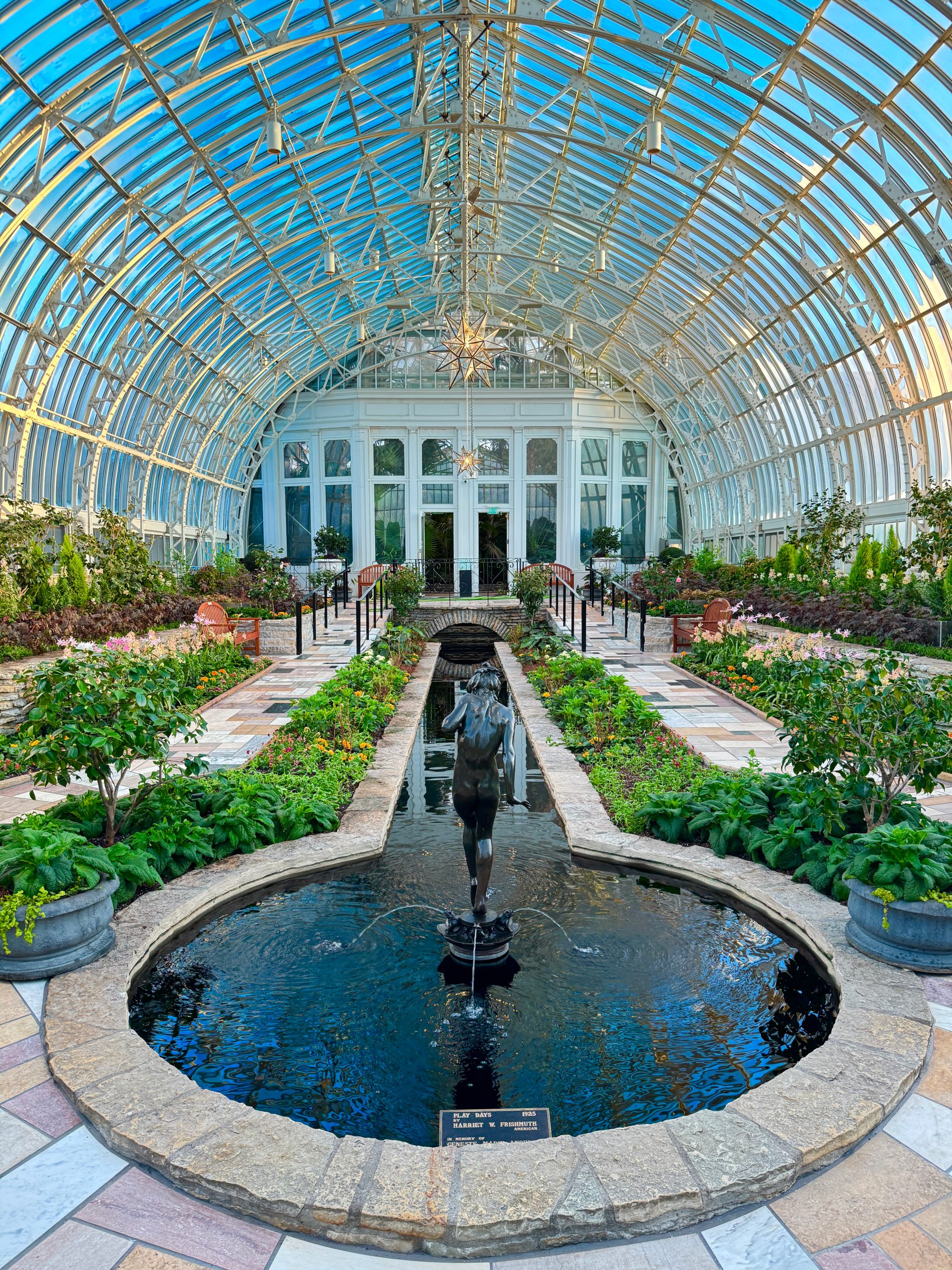
1). While the flowers come and go in the Sunken Garden, Minnesota’s most beautiful room has very deep roots. Originally opened as the Marjorie McNeely Conservatory’s south wing in 1915, the room was remodeled about a decade later to create the features we recognize today—the long, narrow floral beds, the lengthy reflecting pool, and the exceptional view from above that allows visitors to take it all in. “Sunken gardens were a trend in Europe at the time,” says Paul Knuth, the retired horticulturist who created the room’s rotating flower shows for more than 30 years. “But I think being able to see everything from one spot would have been the real inspiration. That view is easy on the eyes.”
2). A beautiful example of the Victorian glasshouse movement, the Conservatory’s listing on the National Register of Historic Places requires renovations to stay within the framework of the building’s original design, including recreating the distinctive marble flooring pattern on the new ramps. With masonry work that’s been kicking up a lot of dust, crews are also planning a deep cleaning of the windows and these Moravian star pendant lights. A traditional shape made popular in Germany in the 1830s, the star pendants were created by German immigrant and St. Paul craftsman Harry Fritsche. According to his grandson, Fritsche made and donated the now iconic lights to the Conservatory “as a gift to the city that welcomed him during difficult times,” and they have been hanging over the Sunken Garden since 1935.
3). “Play Days,” the beloved bronze sculpture at the south end of the Sunken Garden was also removed from the Sunken Garden this winter for repair and renovation. Created by Harriet Frishmuth, an American artist who studied with Auguste Rodin at Paris’s École des Beaux-Arts, the iconic sculpture is actually one of 99 known castings made of the work. In a fun twist of Como coincidence, this piece was donated to St. Paul in the 1960s by senior horticulturist Ariel Dressler’s godparents. “So many people feel a family connection to that room, and so do I, when I’m dusting that statue,” she says.
4). The Sunken Garden is a flower powerhouse, accounting for more than a third of the plants, plugs and bulbs grown each year in Como’s behind-the-scenes greenhouse. That number may even grow with the removal of the obsolete elevators, which has created more room for flower beds. “That’s something we’re excited about, because it’s a pretty significant new space for planting,” says Dressler. The spring and summer flower shows alone typically require up to 10,000 bulbs each year, which means that more than a million tulips, hyacinths, daffodils and other varieties have cycled through the Sunken Garden over the last century. “For years, Como Friends has offered the bulbs for sale when we’re finished with them, so it’s fun to run the numbers and imagine all of the decades that Como’s gardens have been making the community more beautiful, too,” says Dressler.
The Sunken Garden is also the site for Como’s Music Under Glass series this winter, a free concert series featuring local artists on selected Wednesday and Sunday nights. Visit comozooconservatory.org to learn more.
